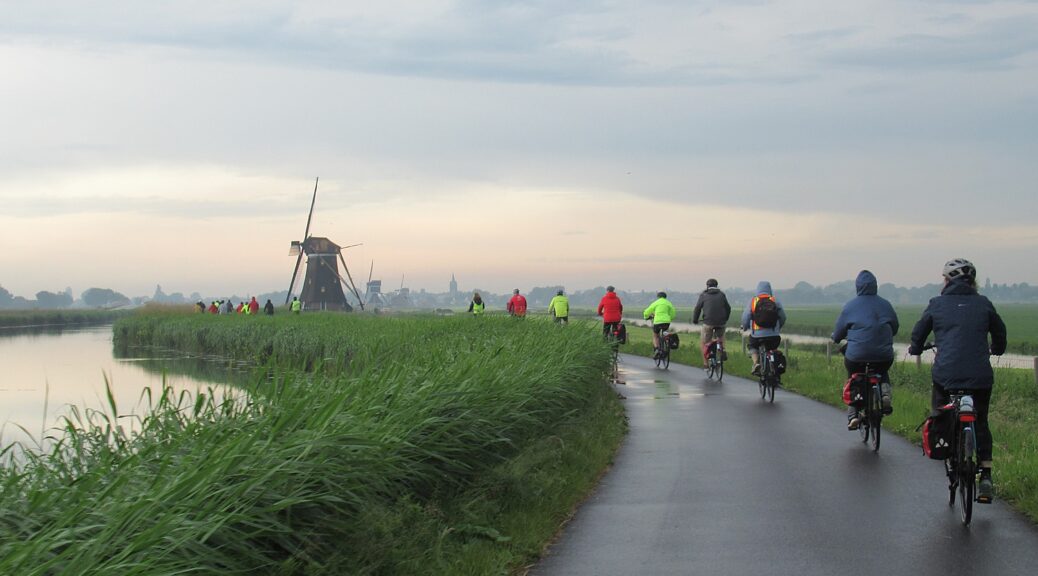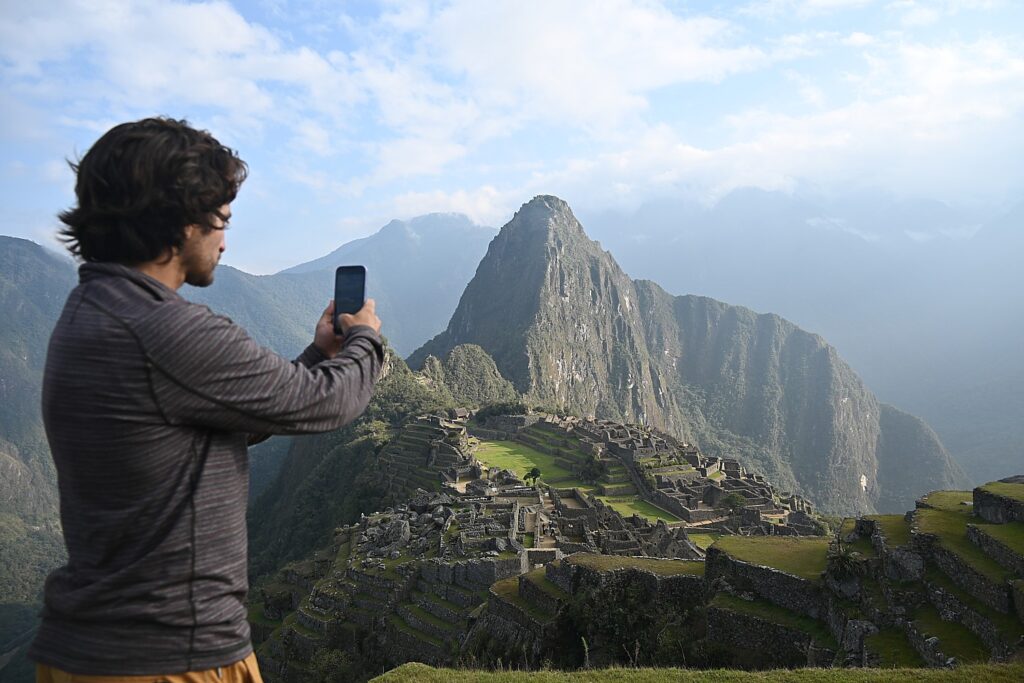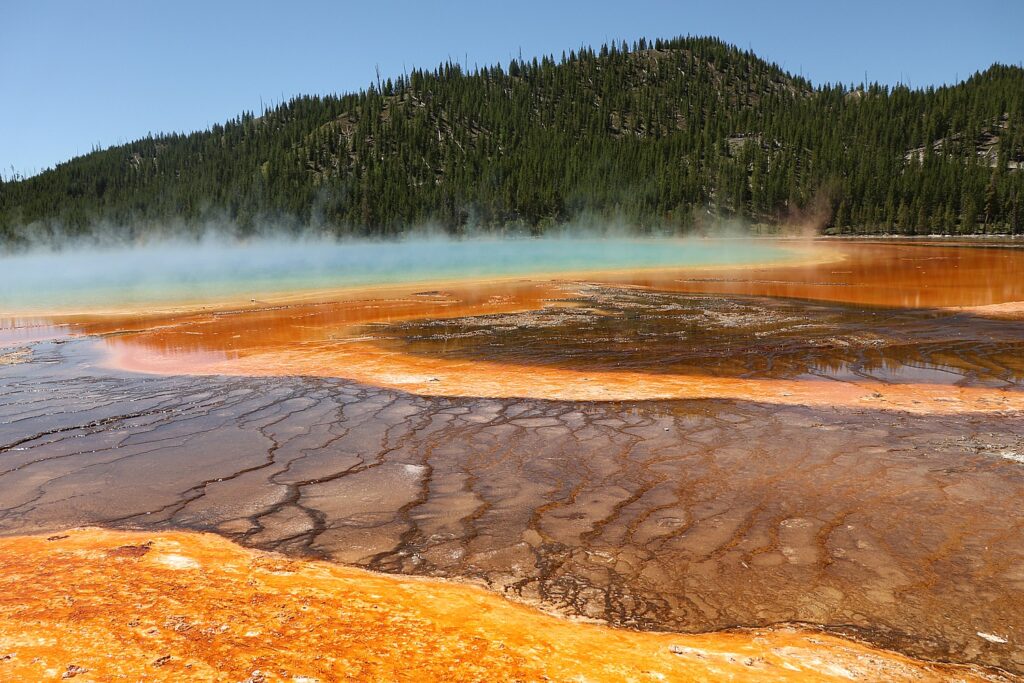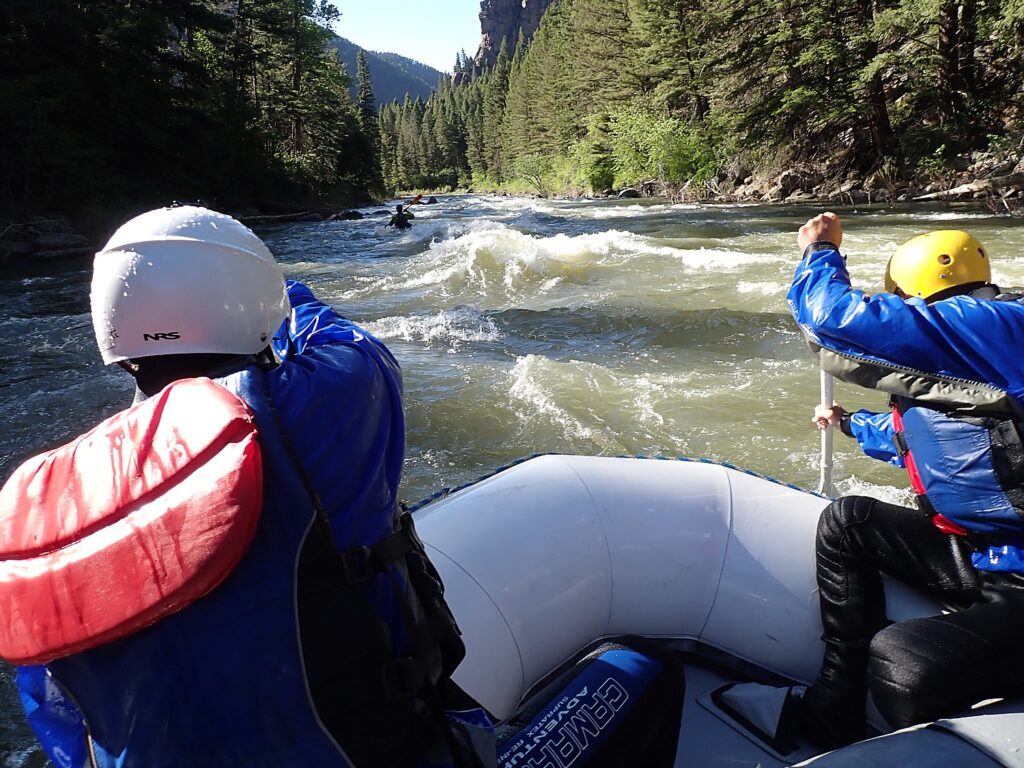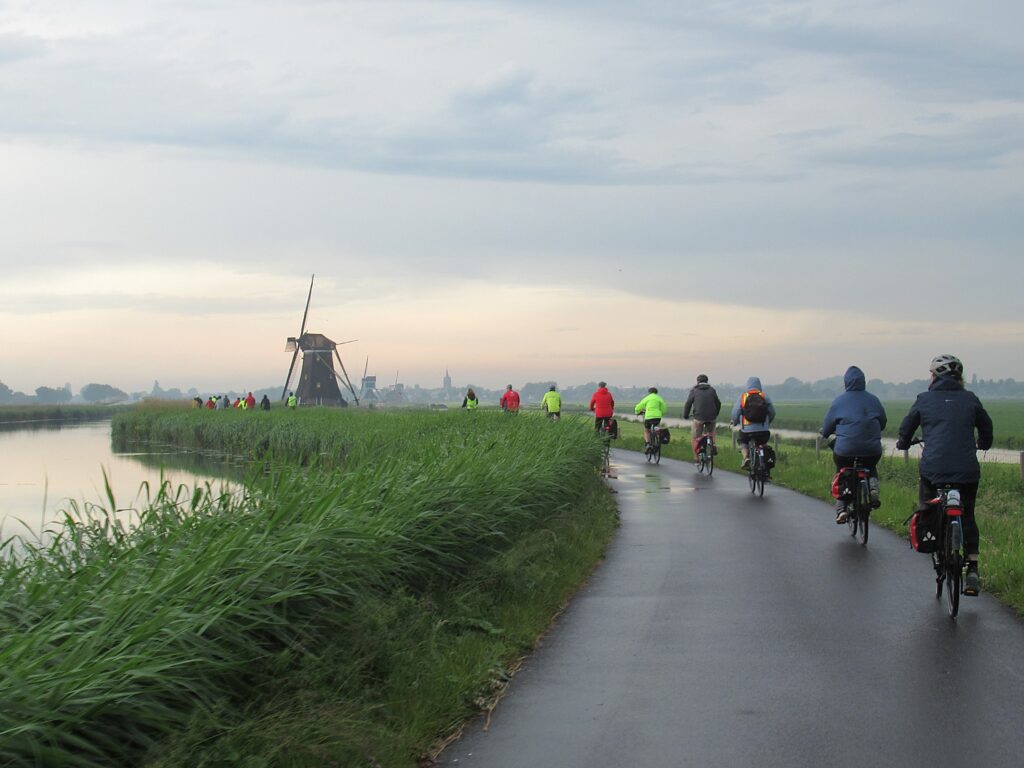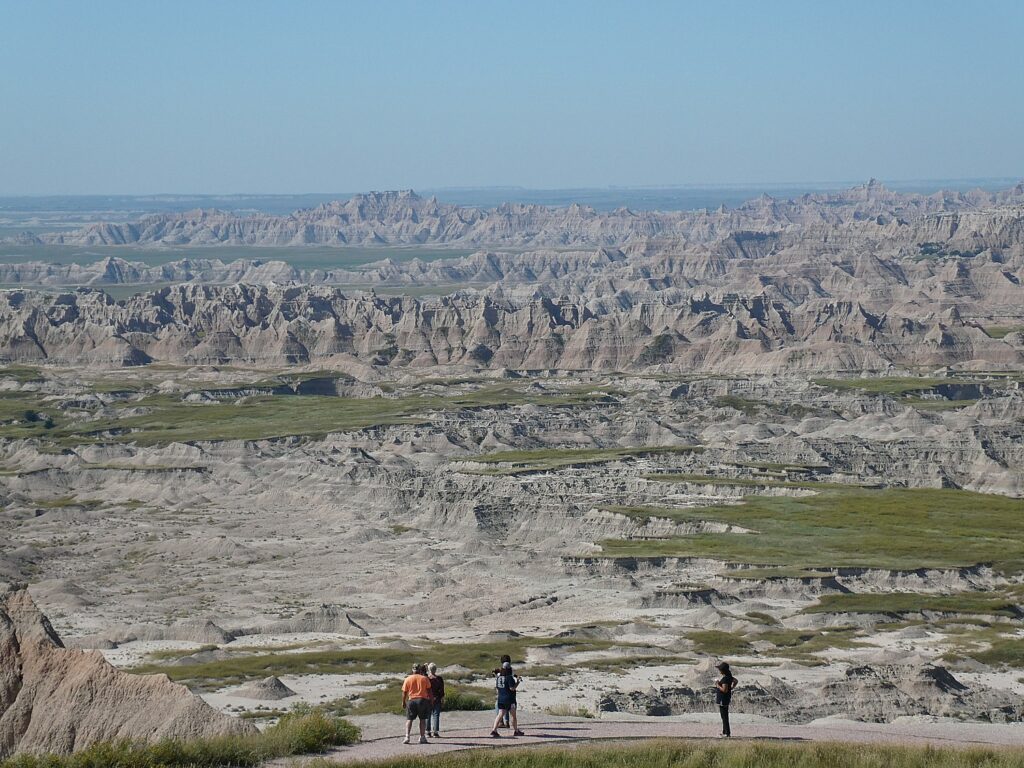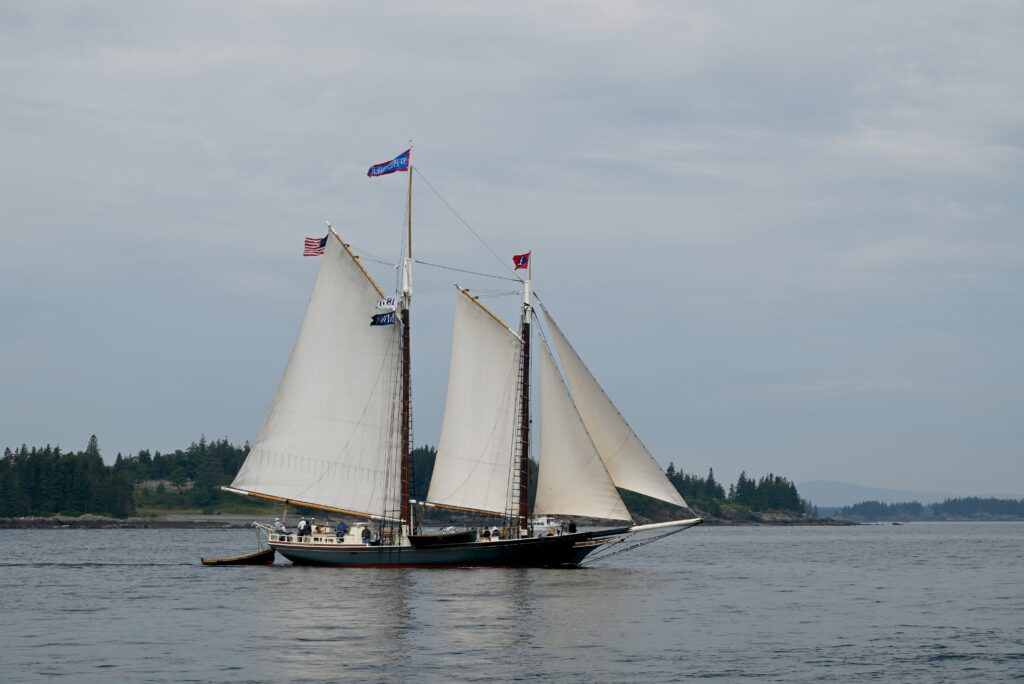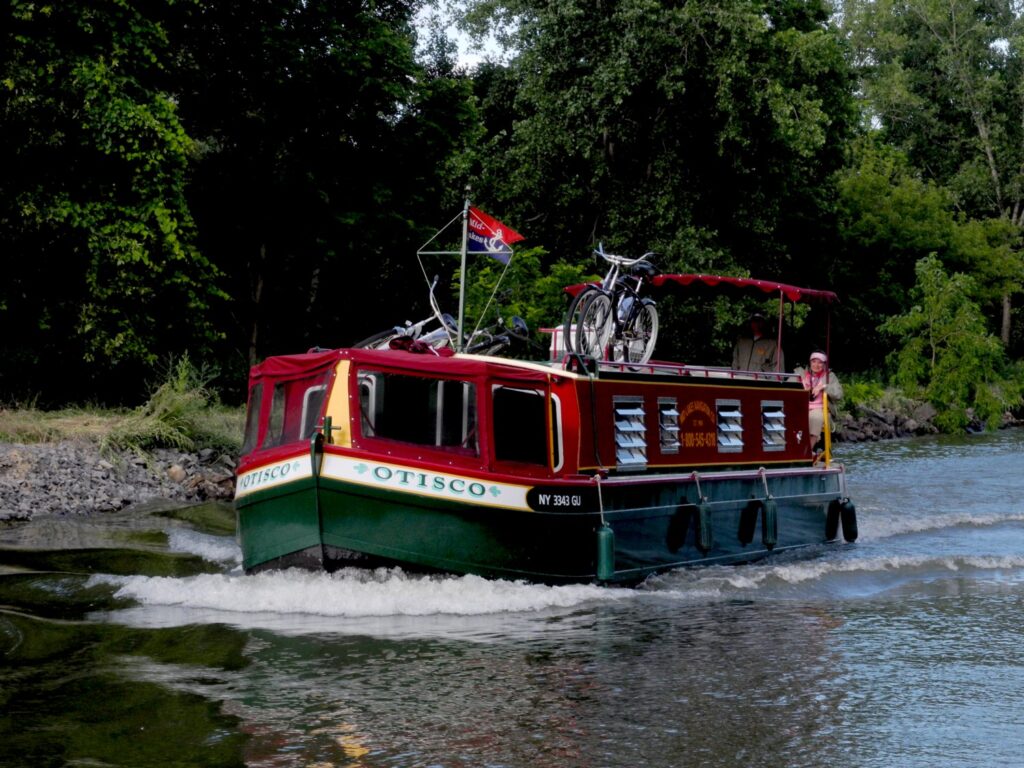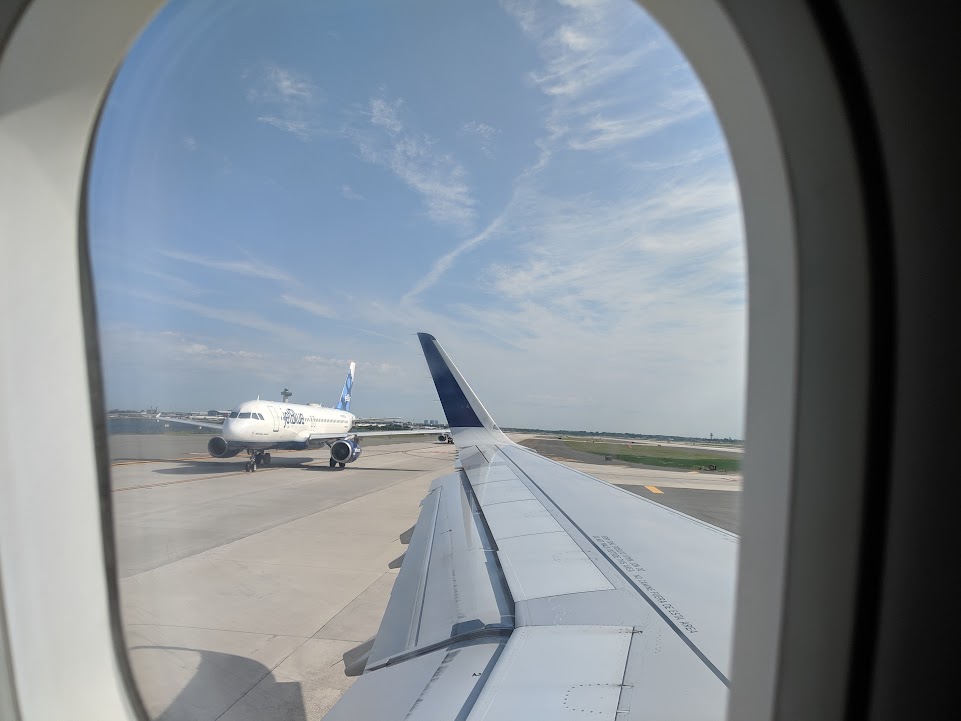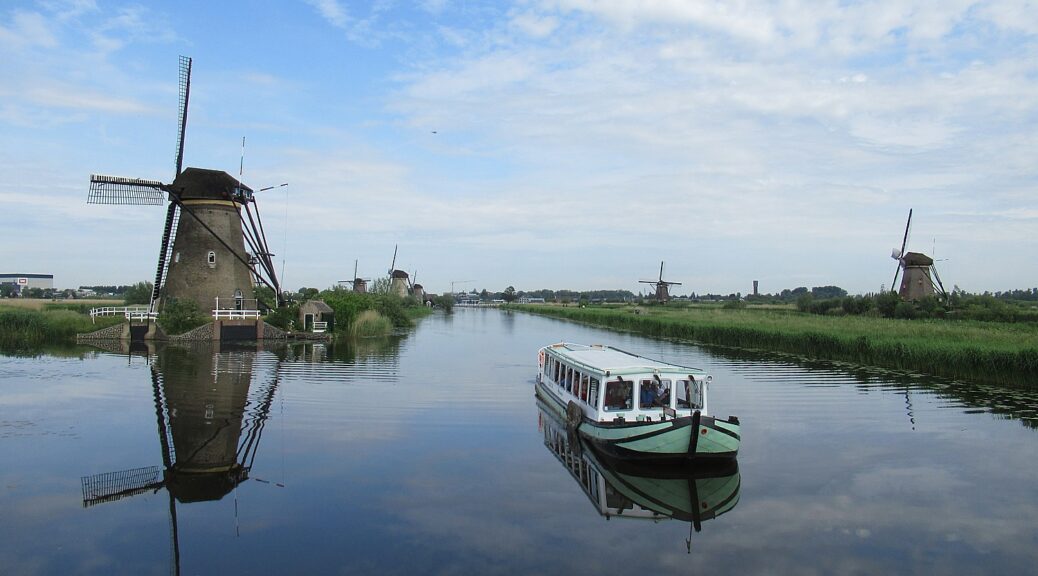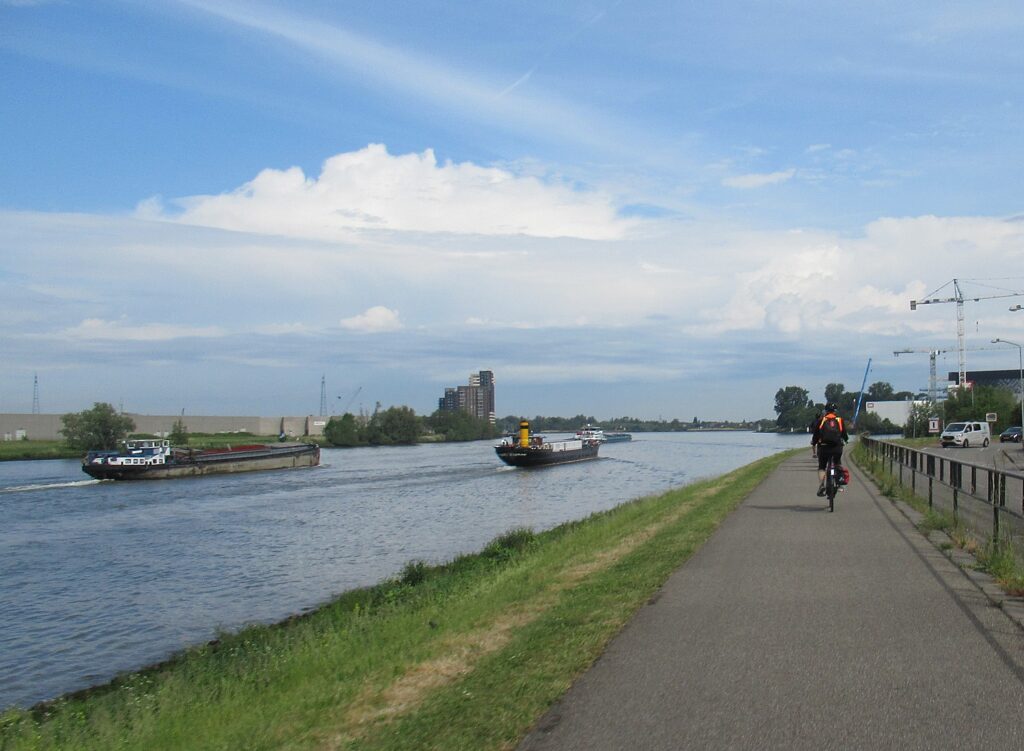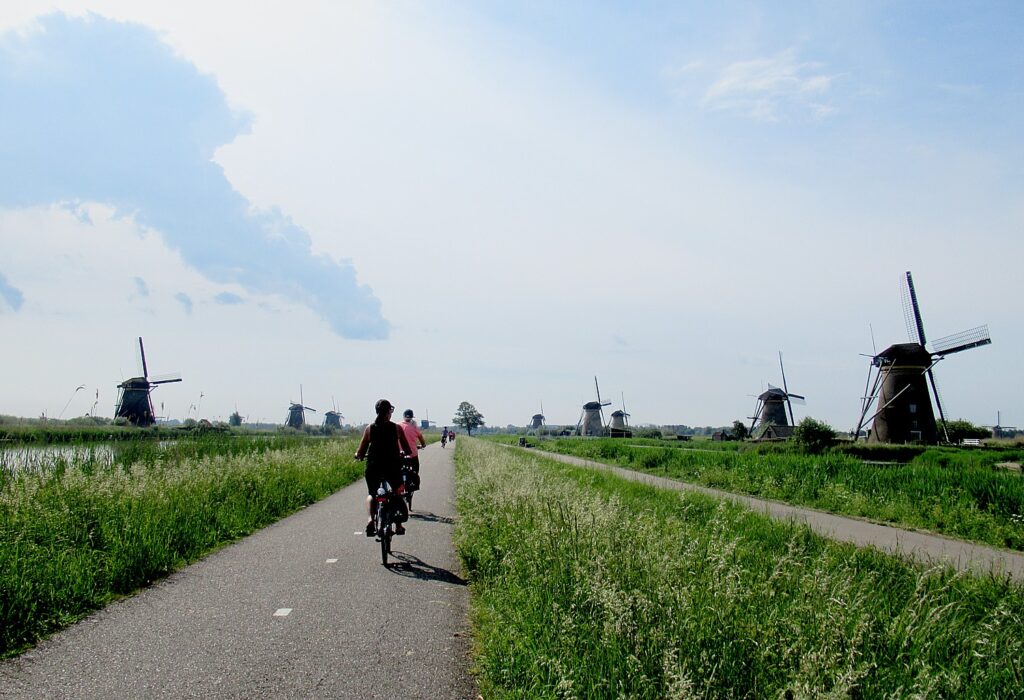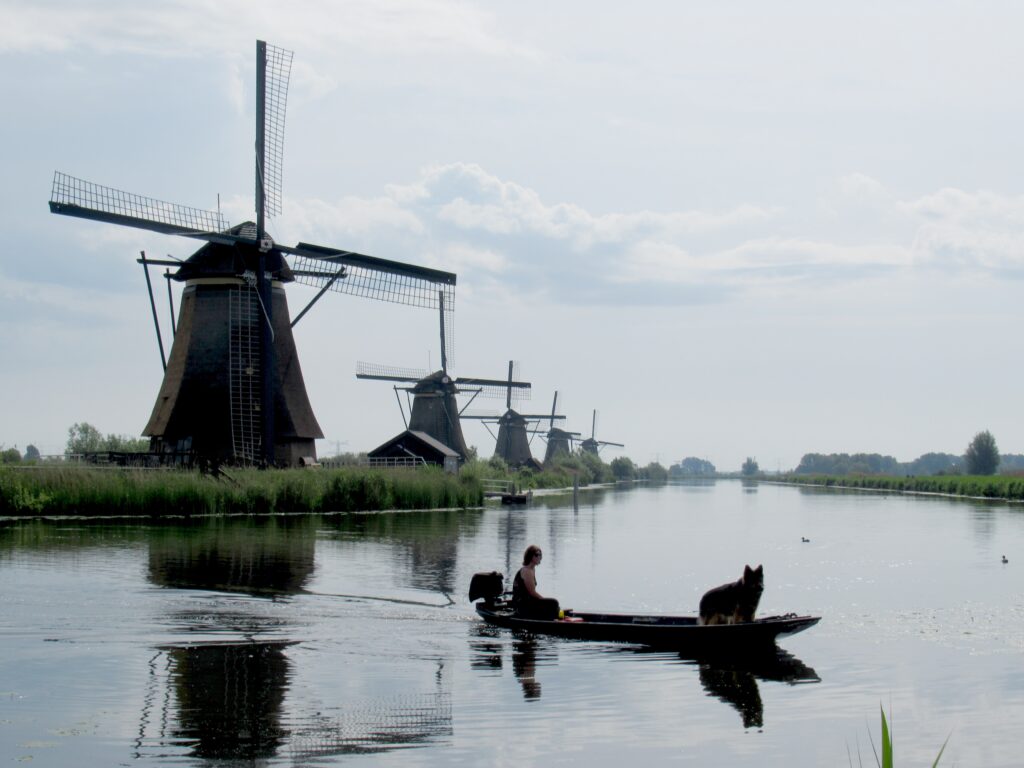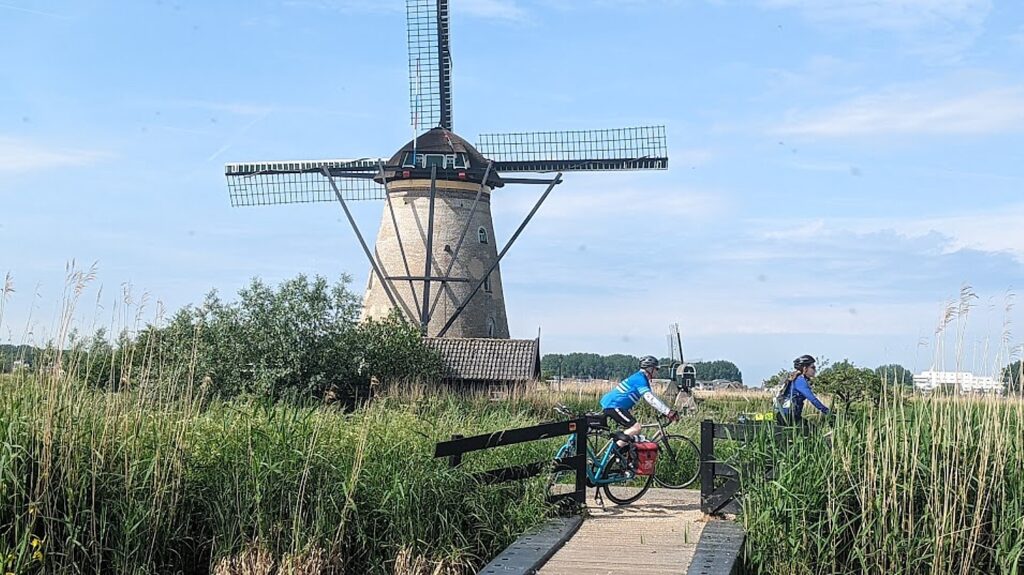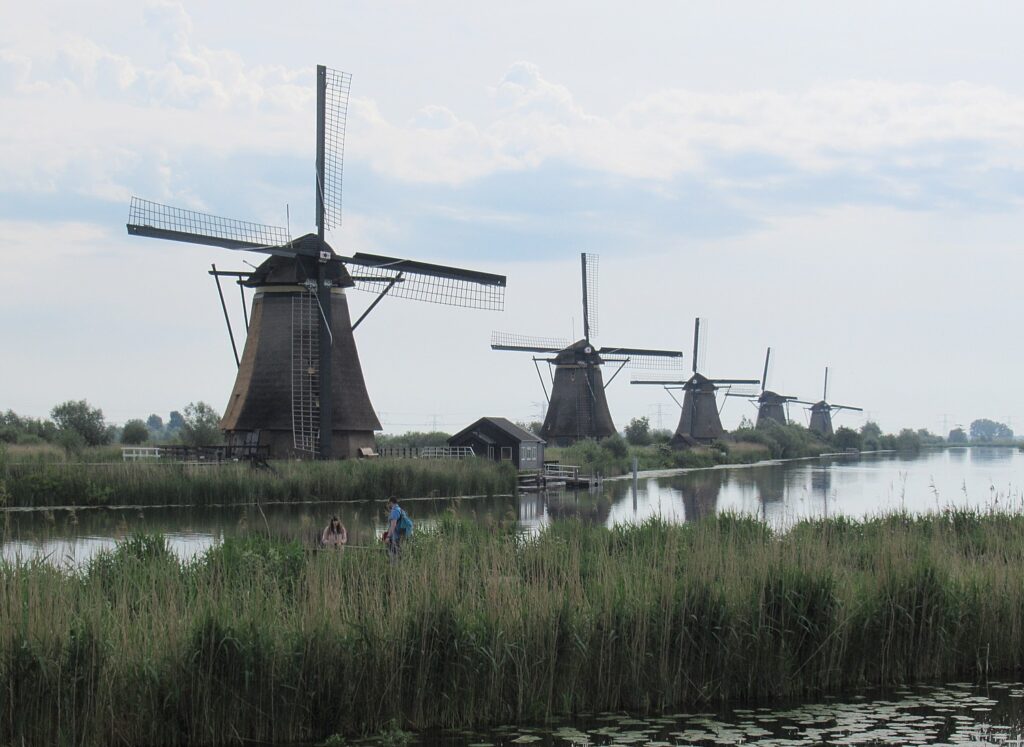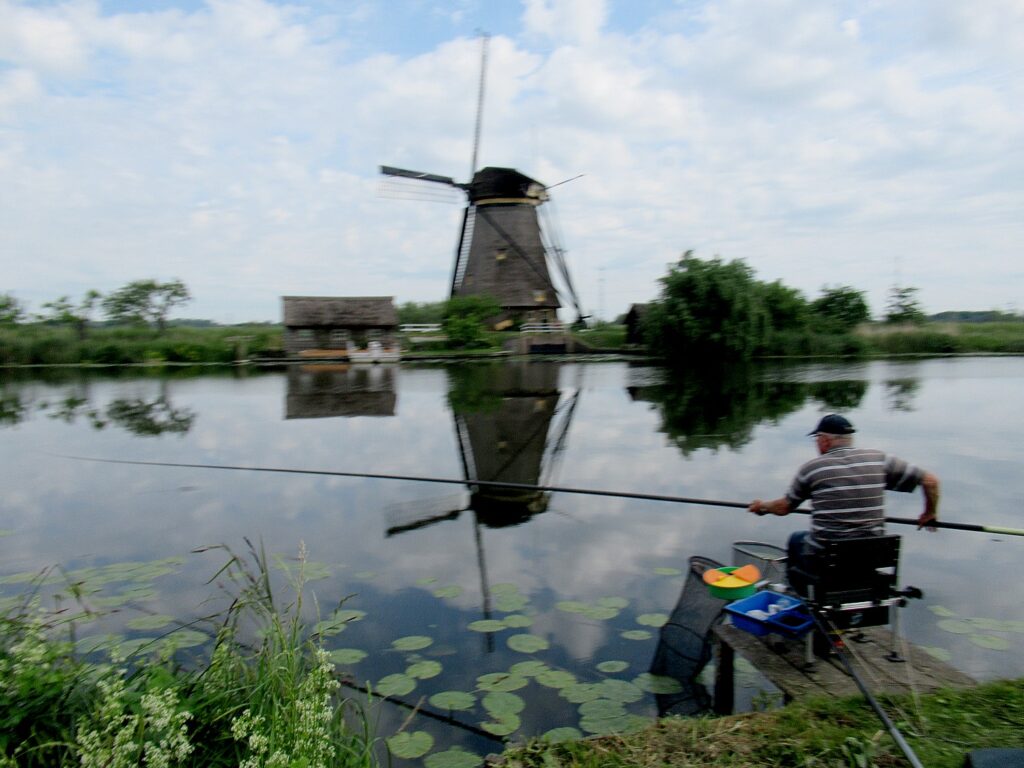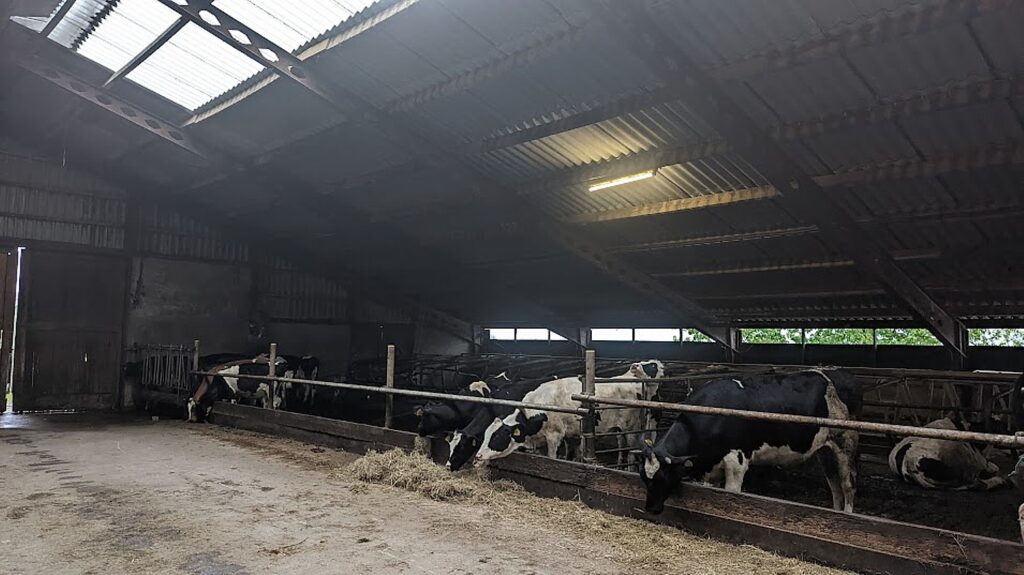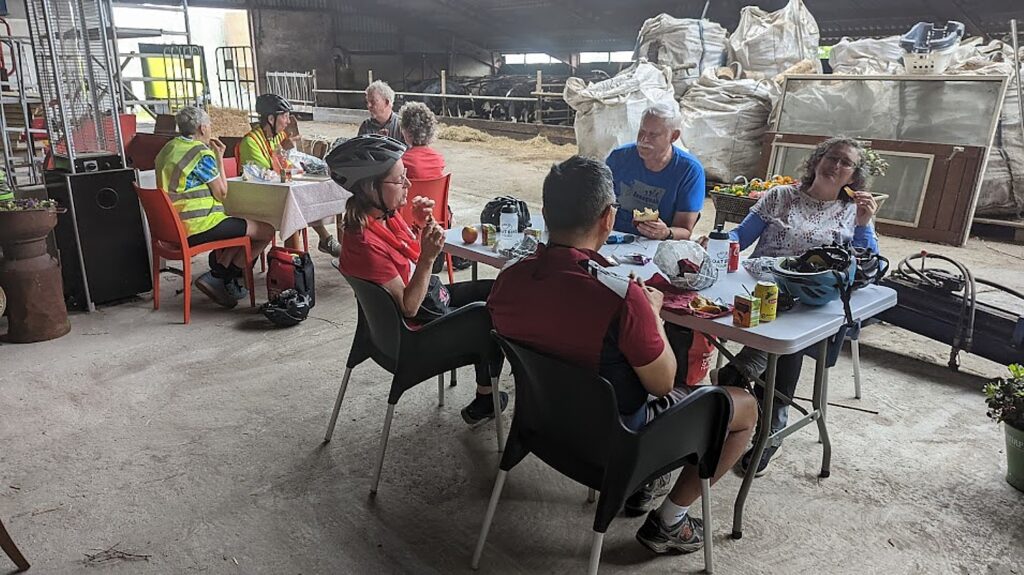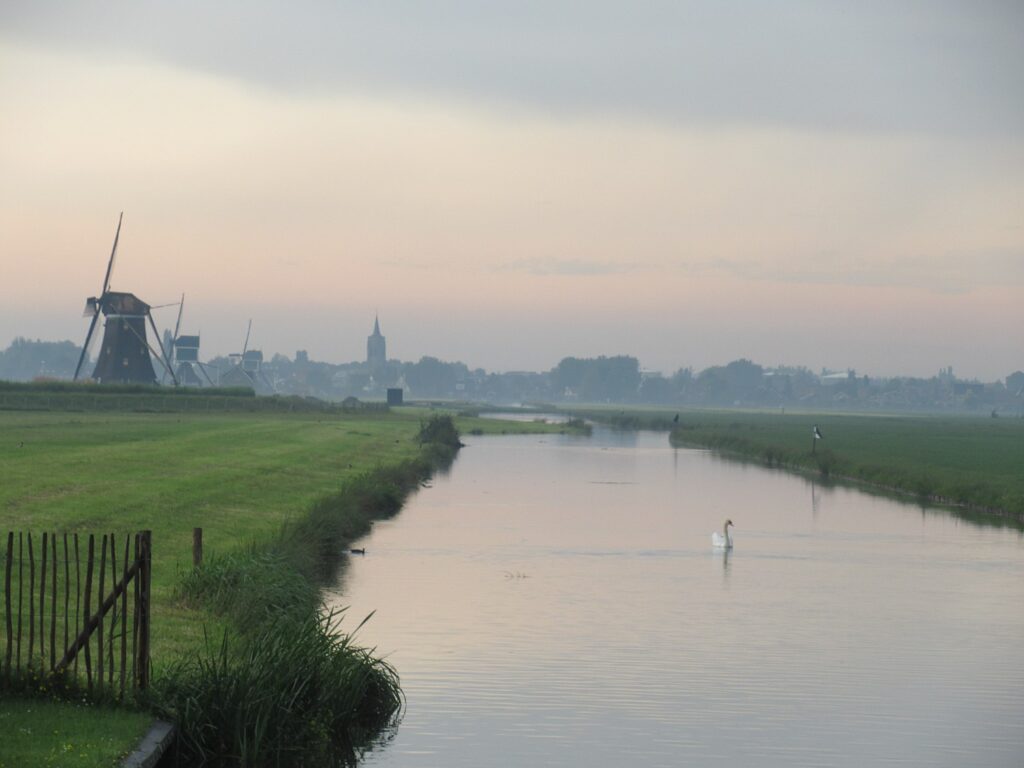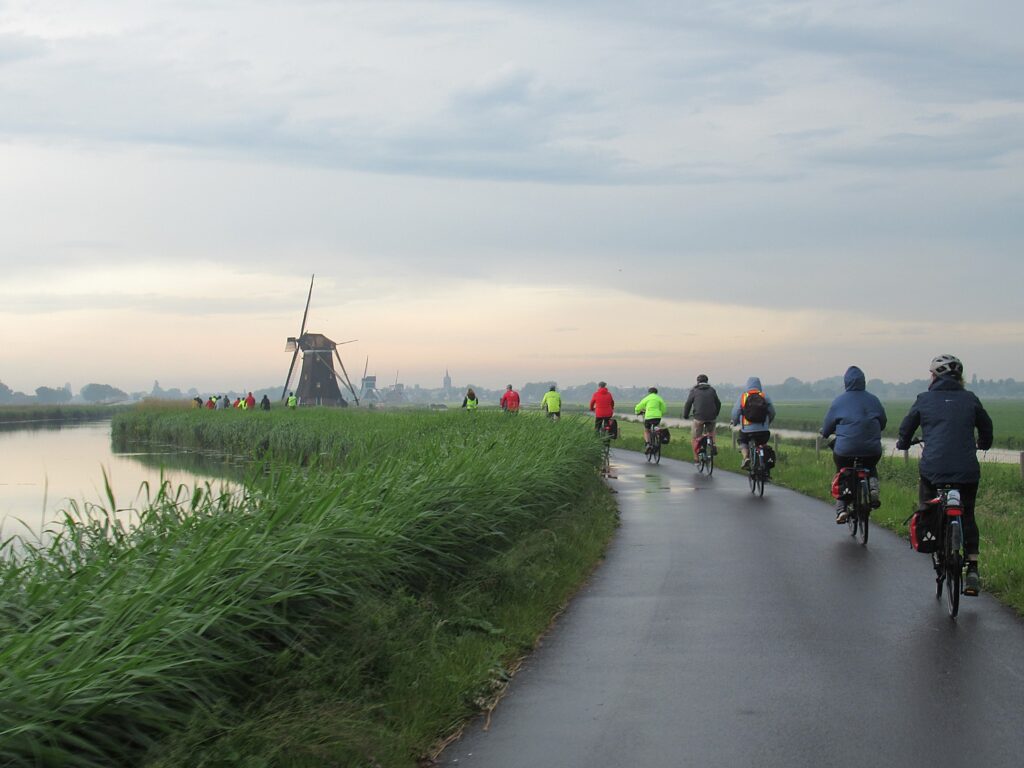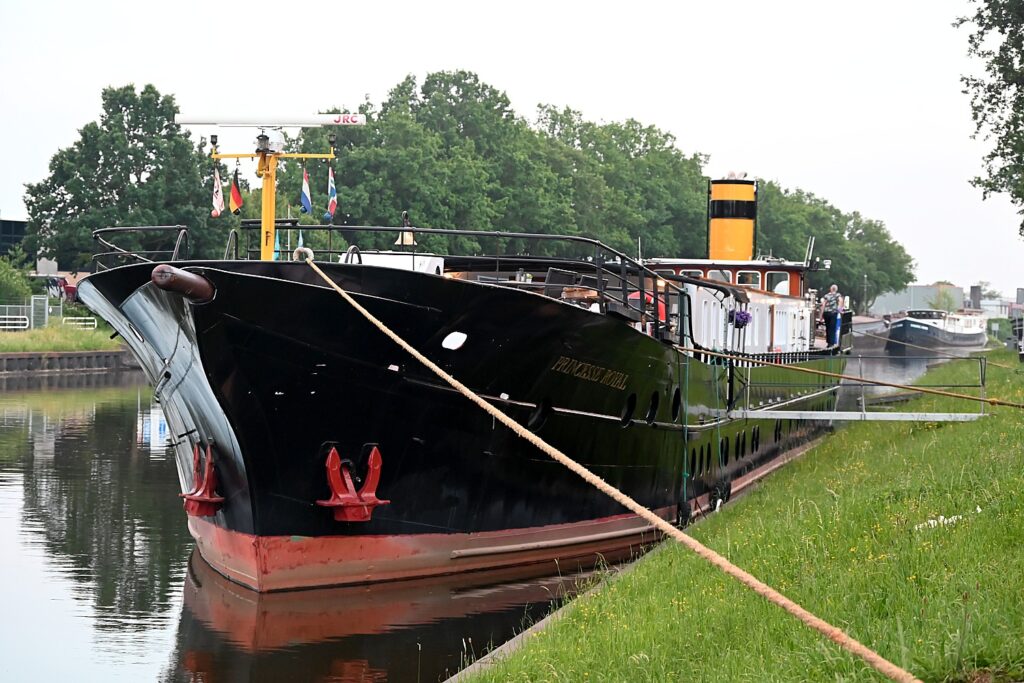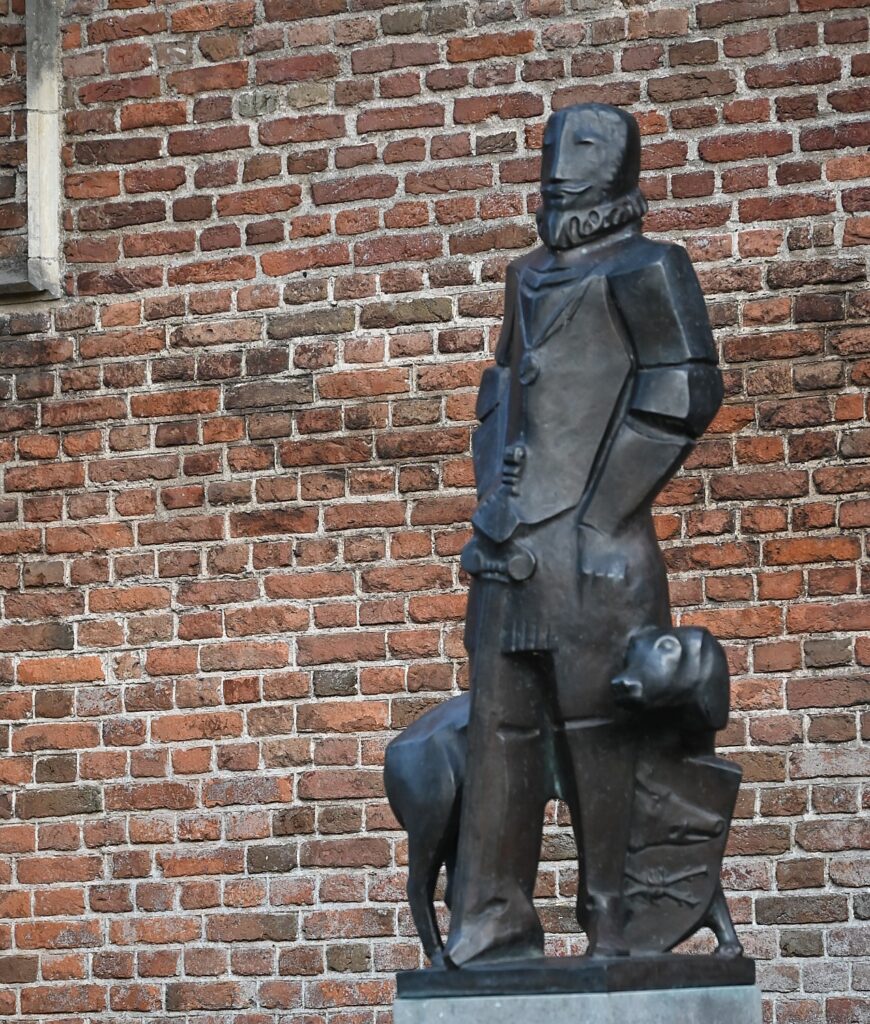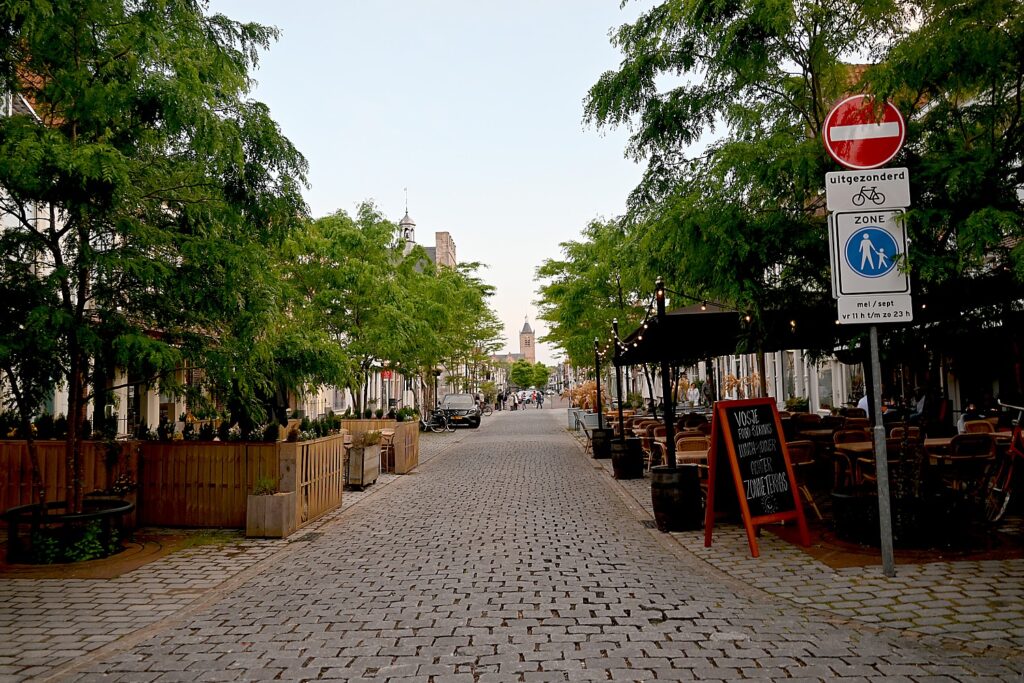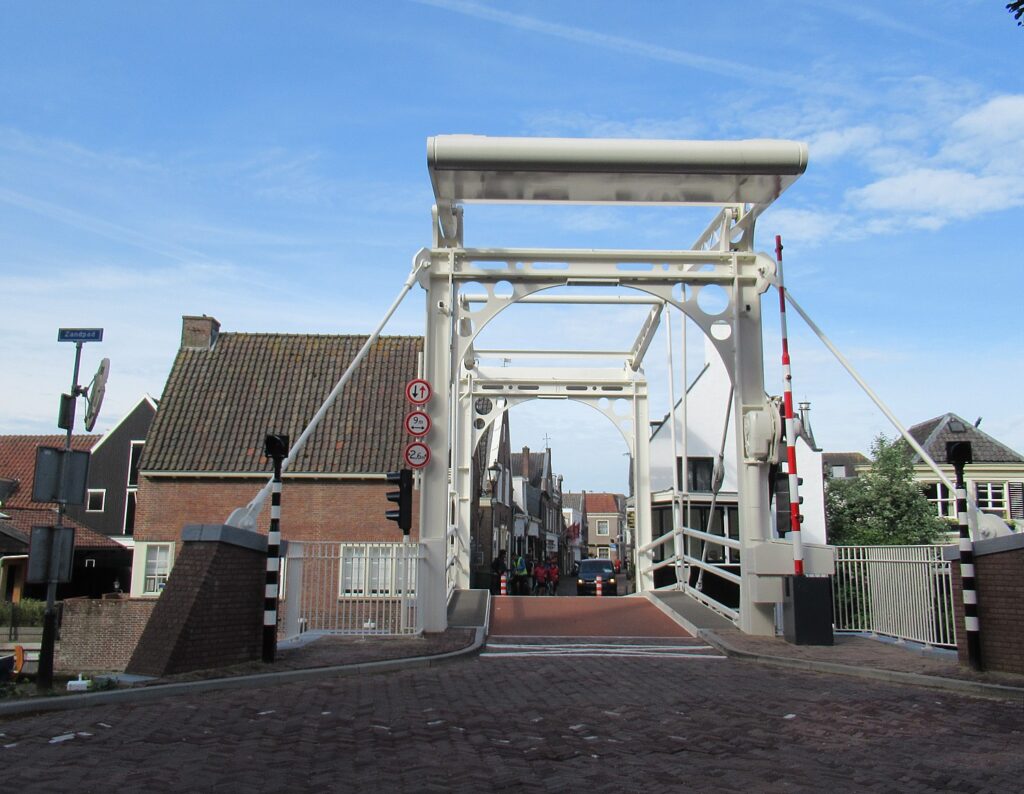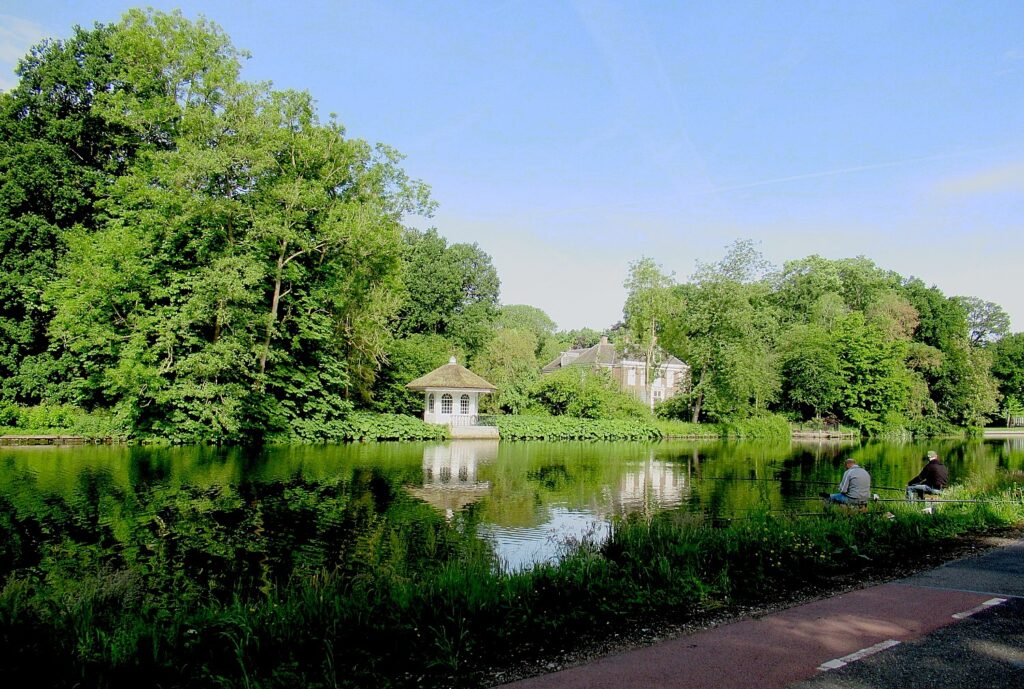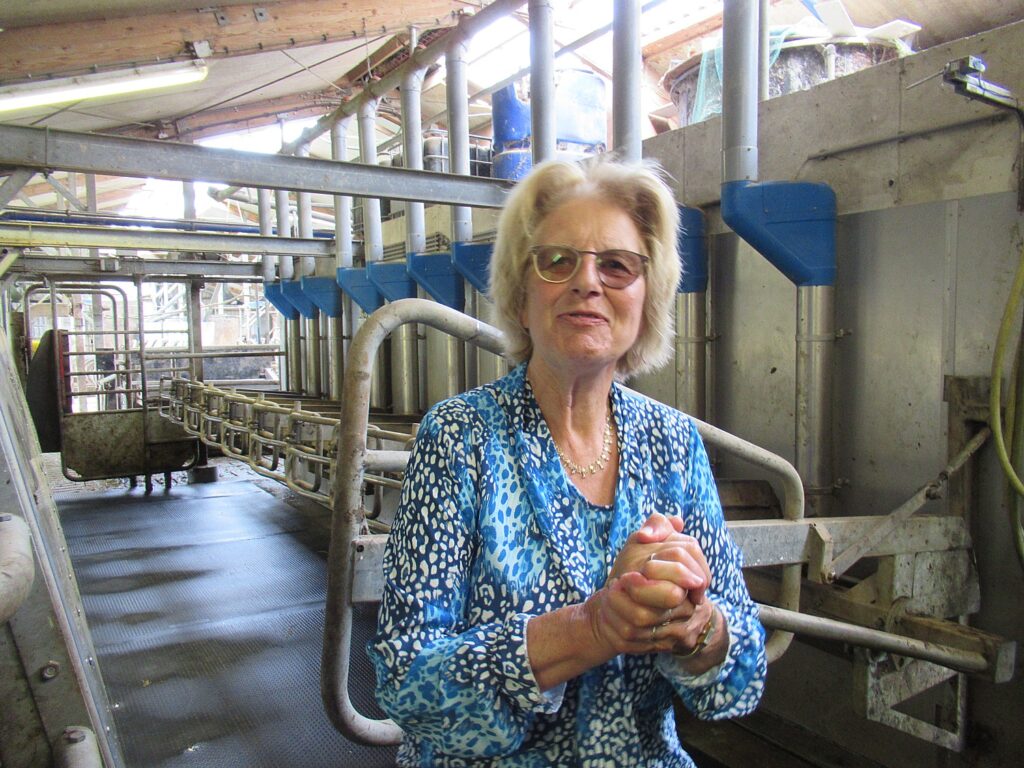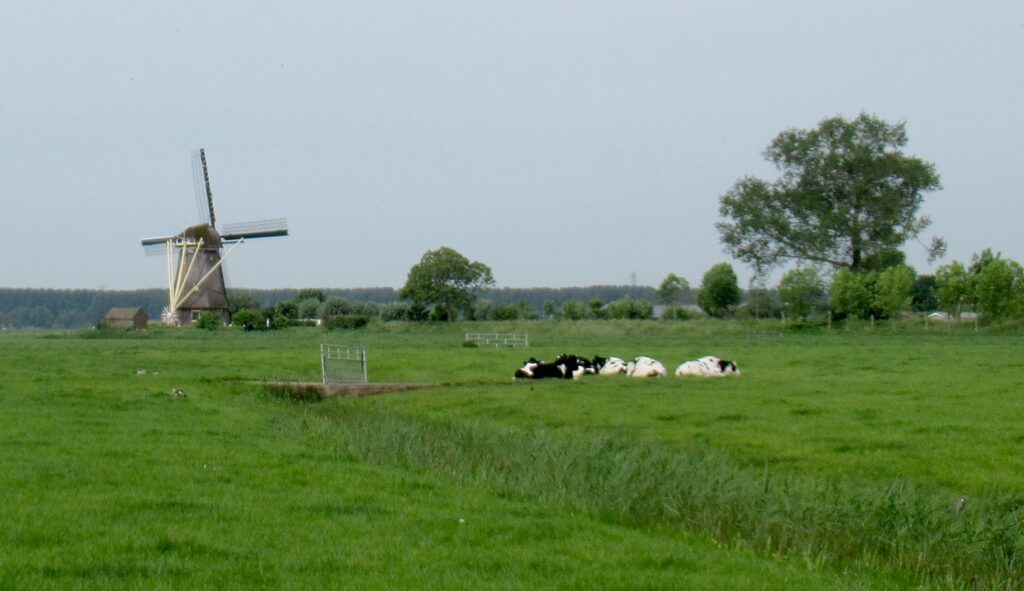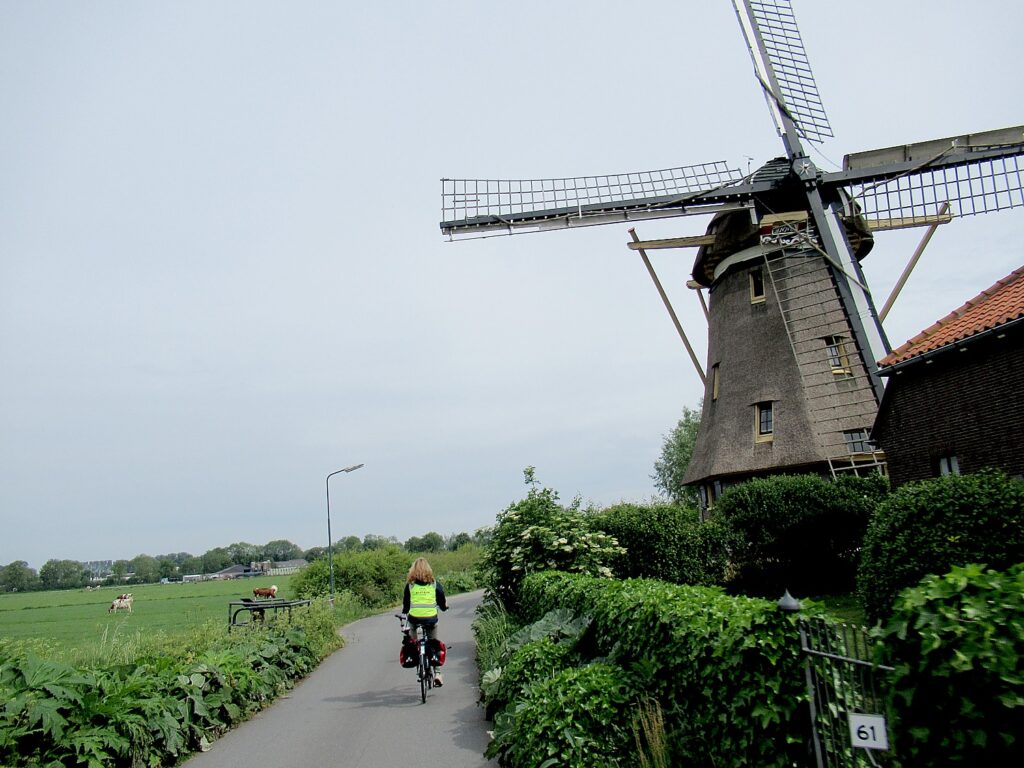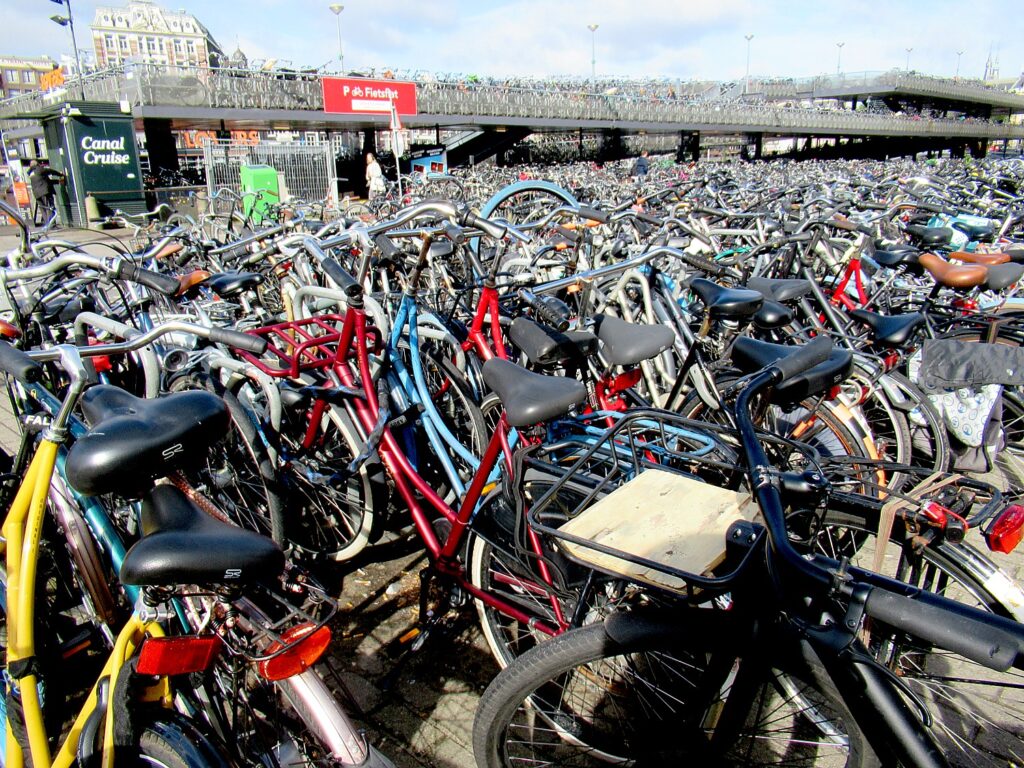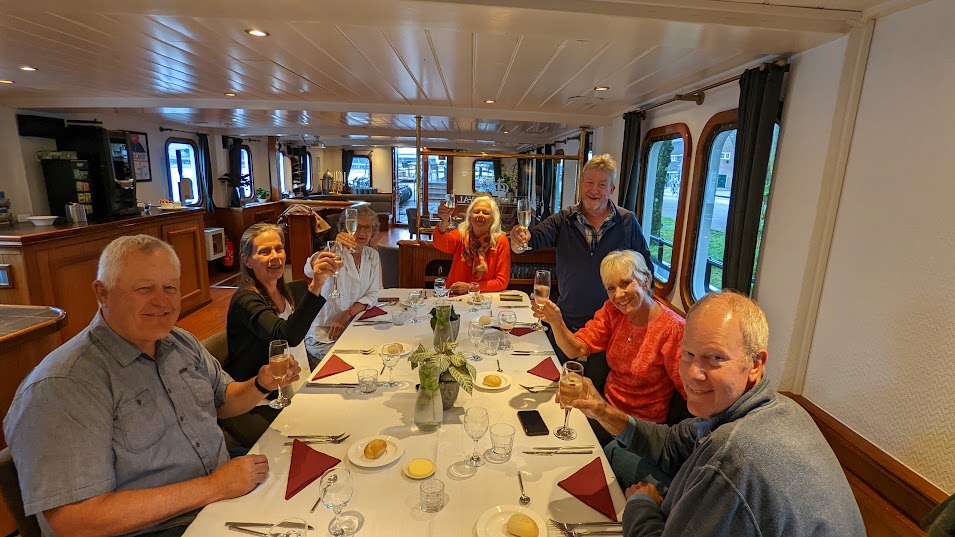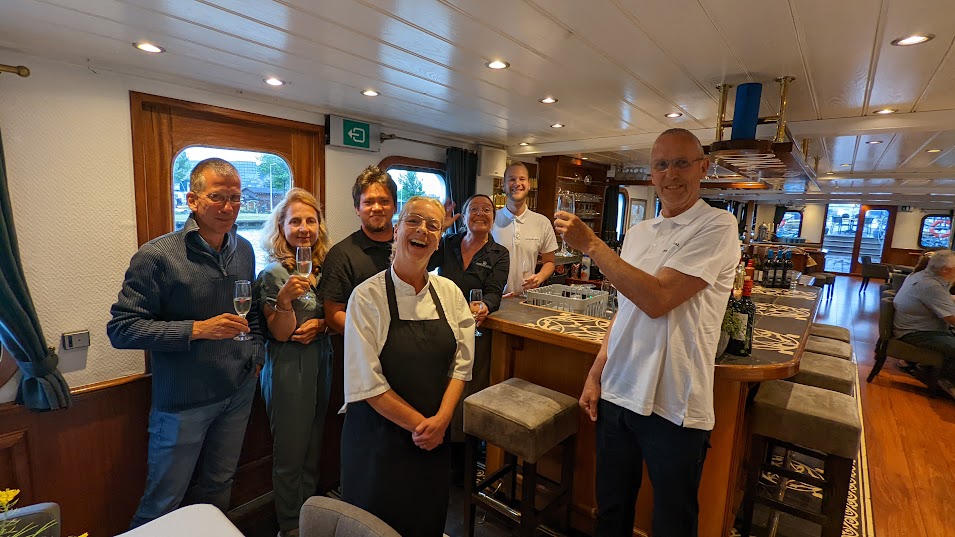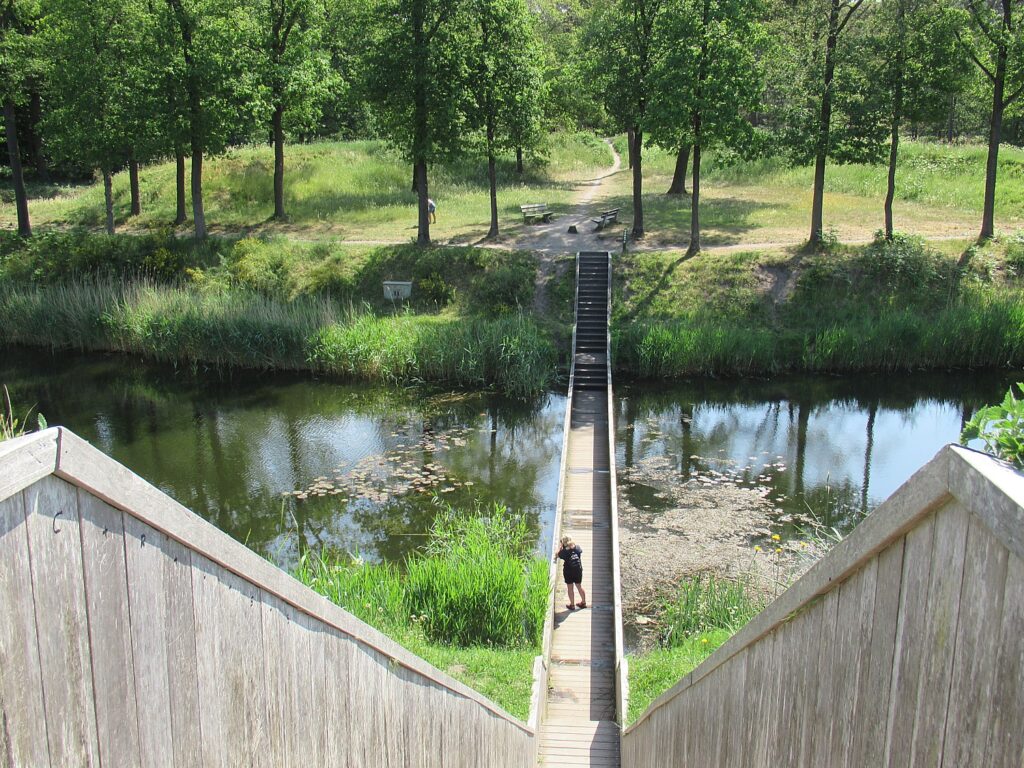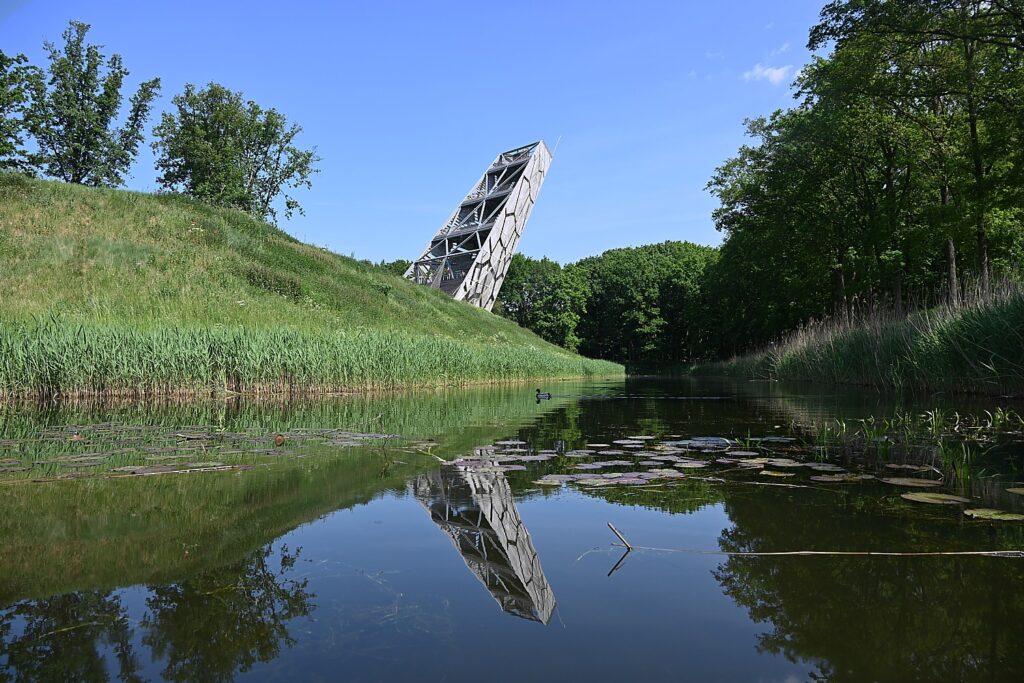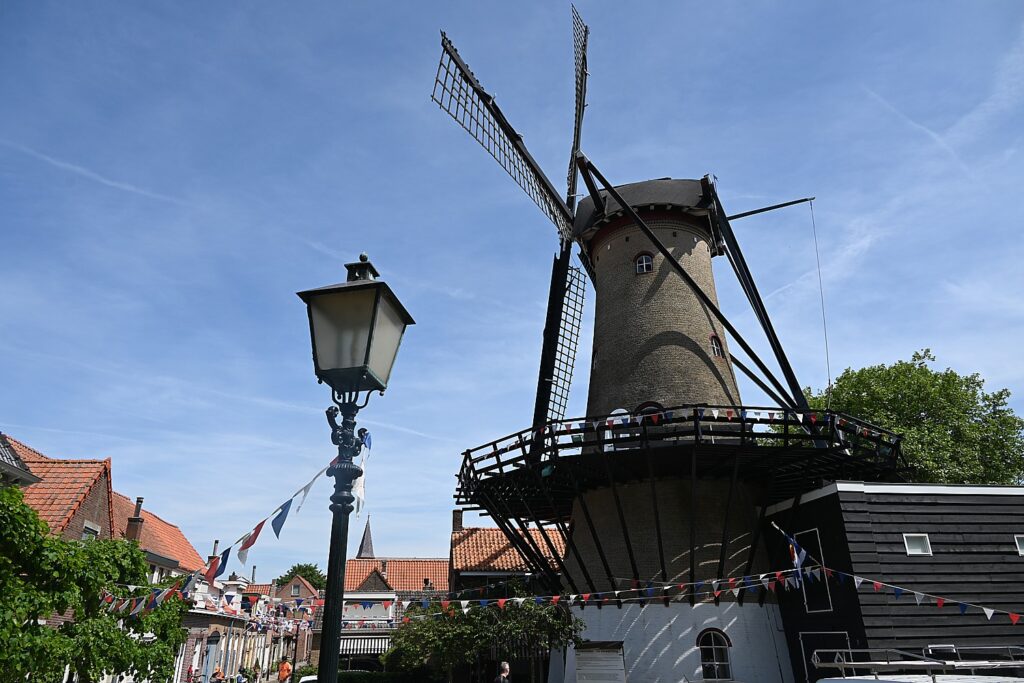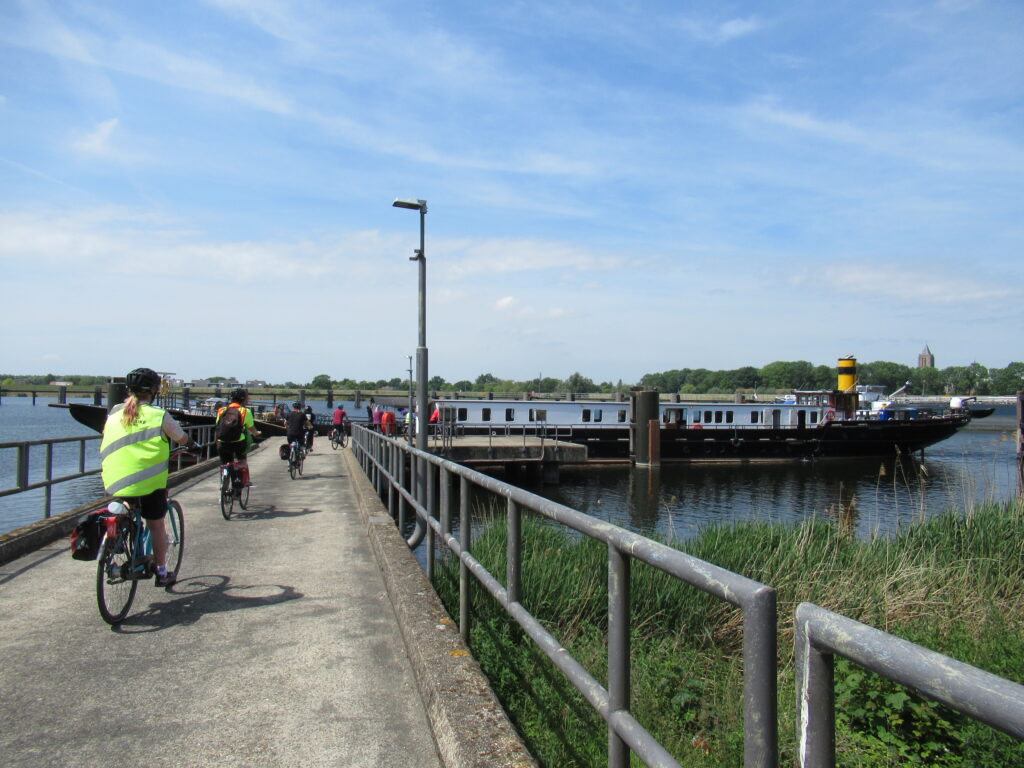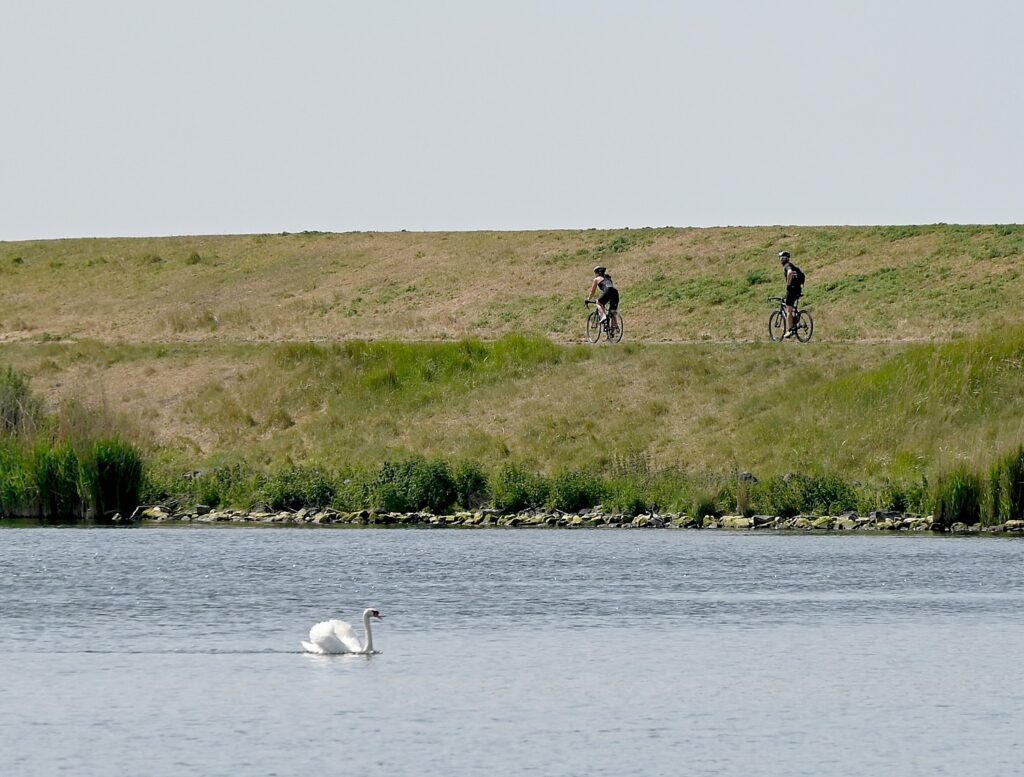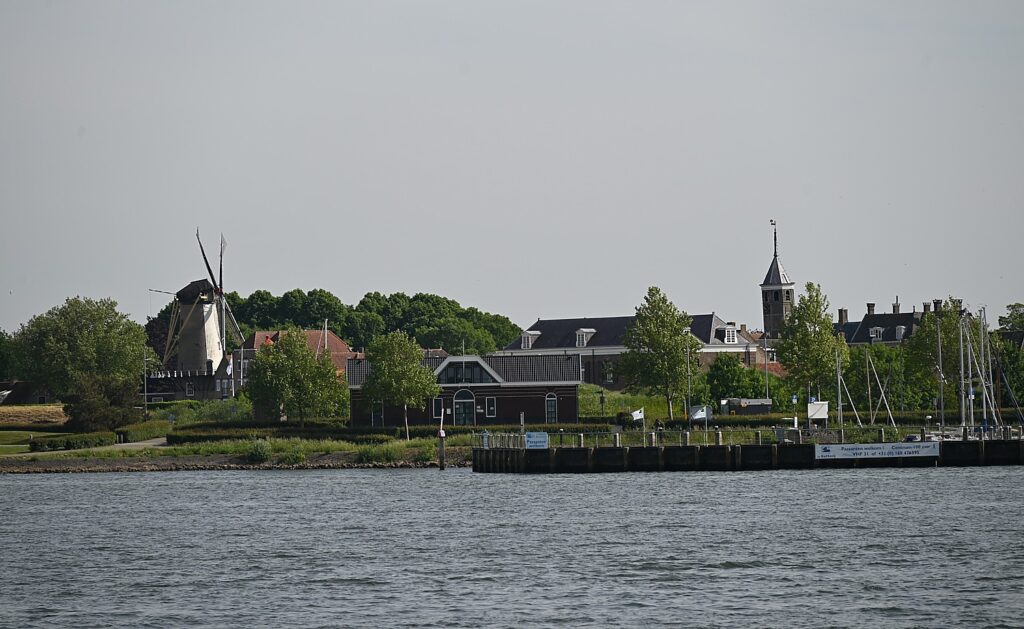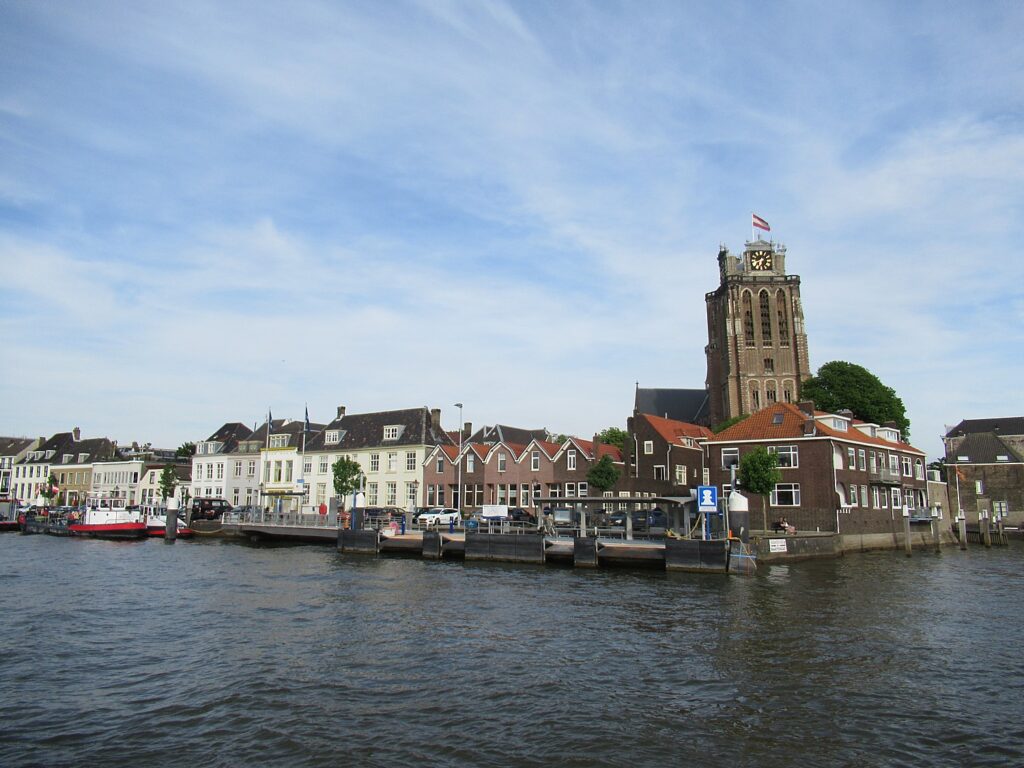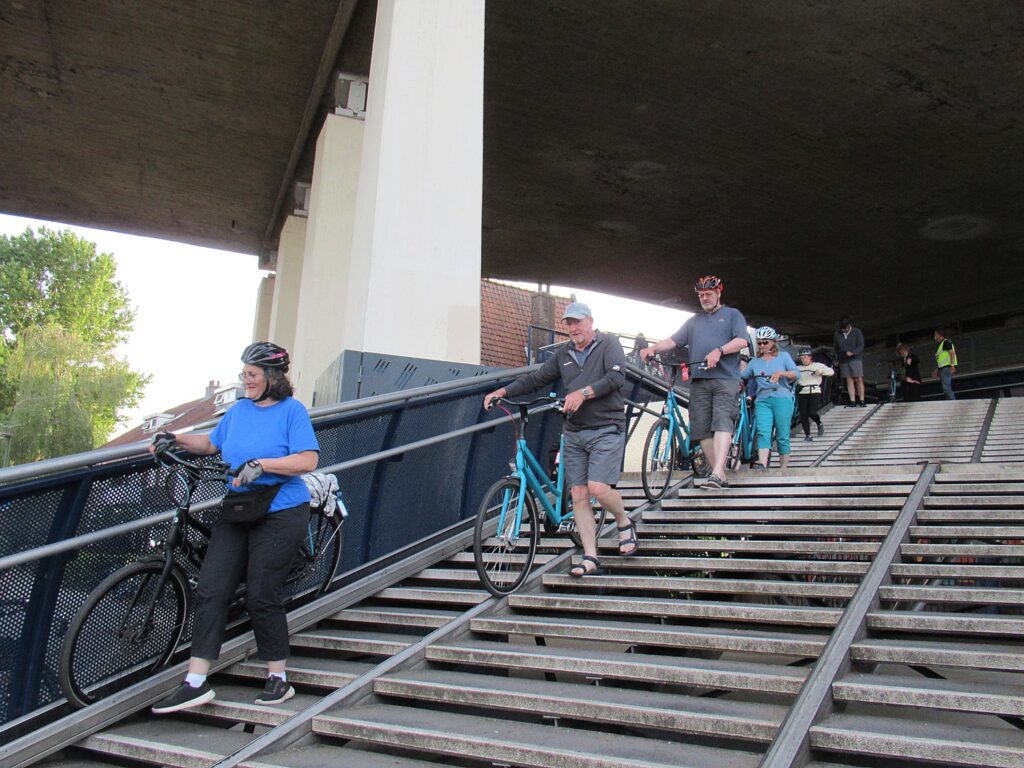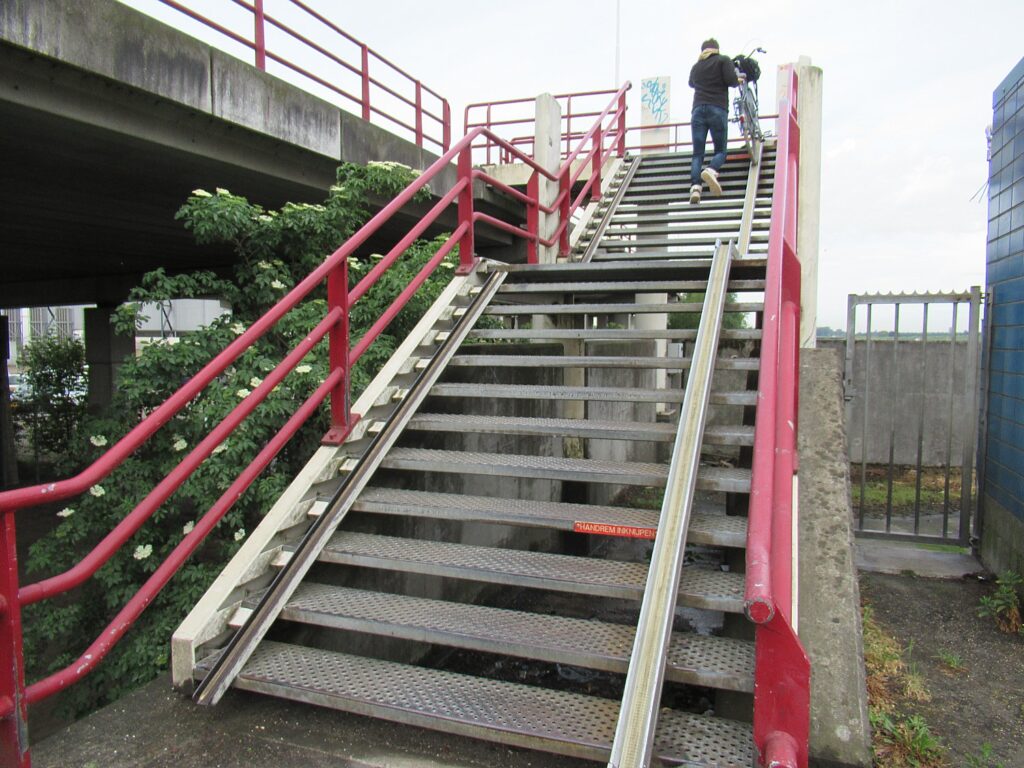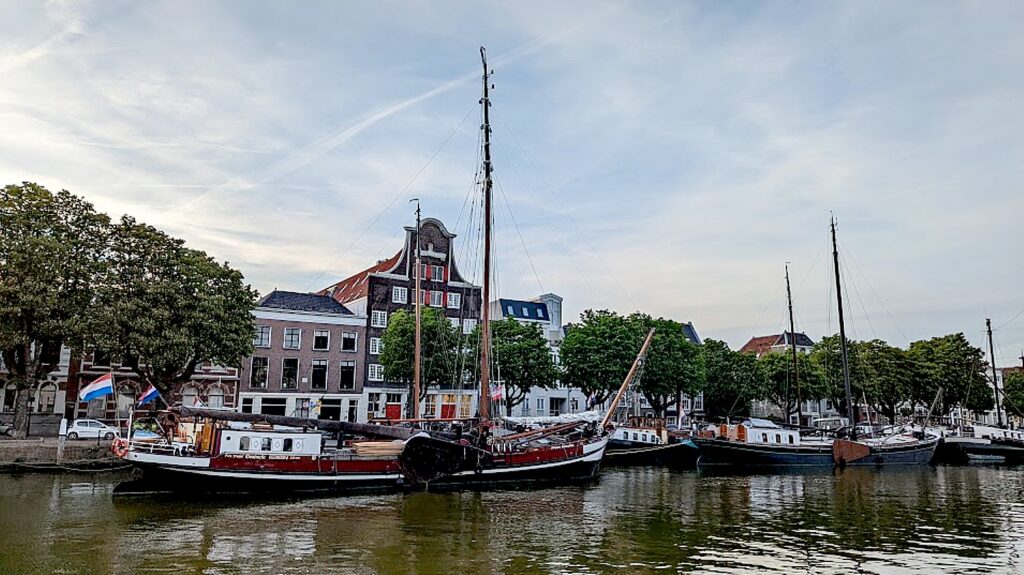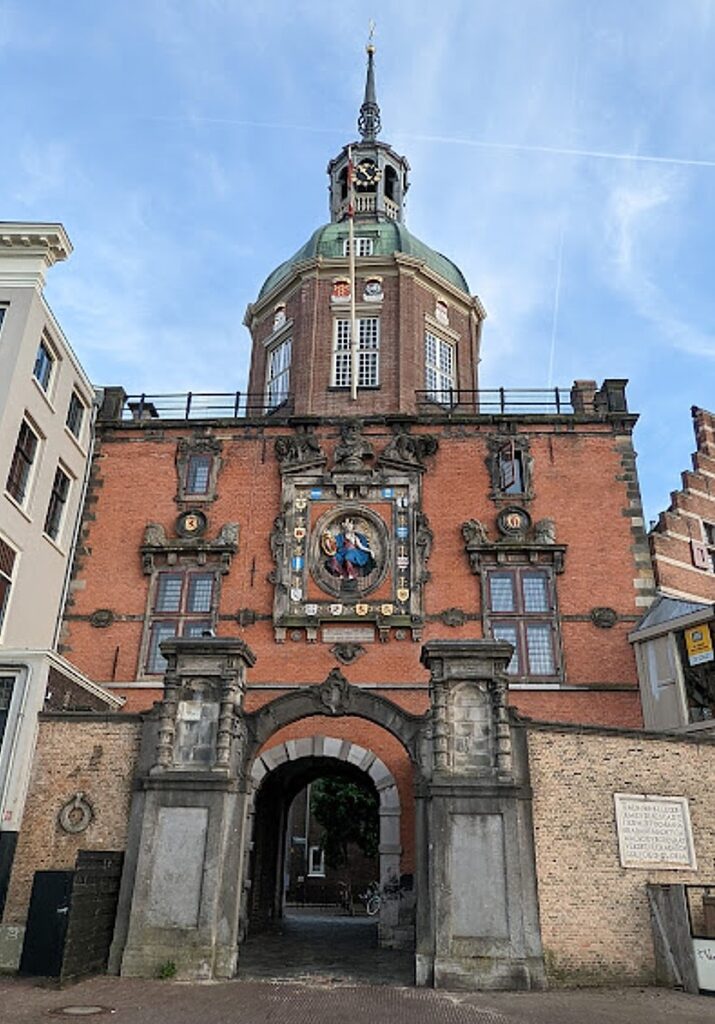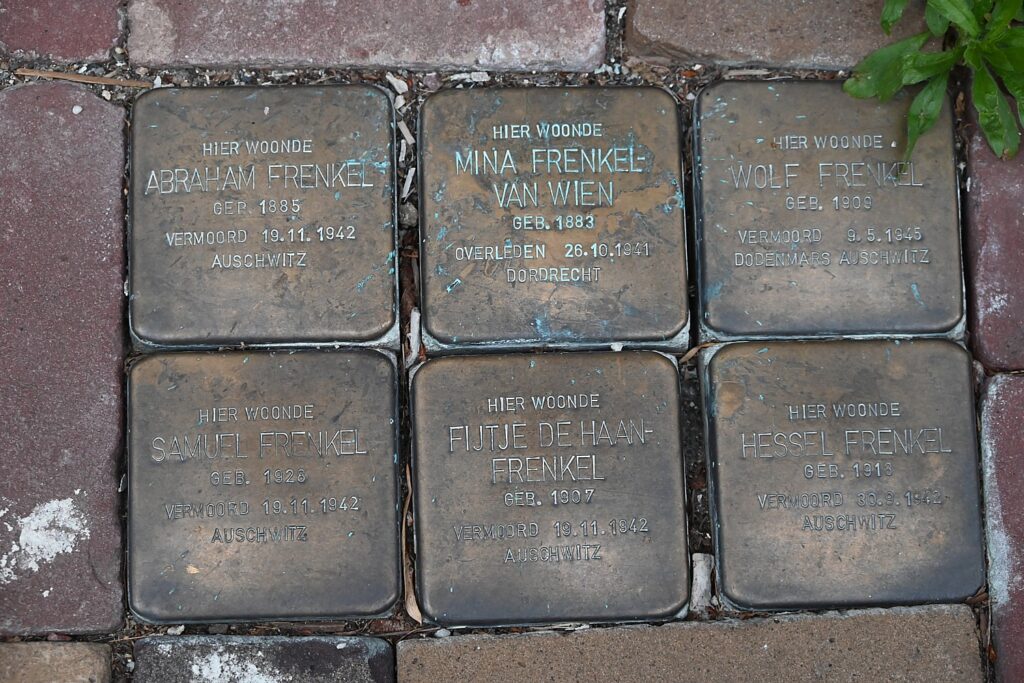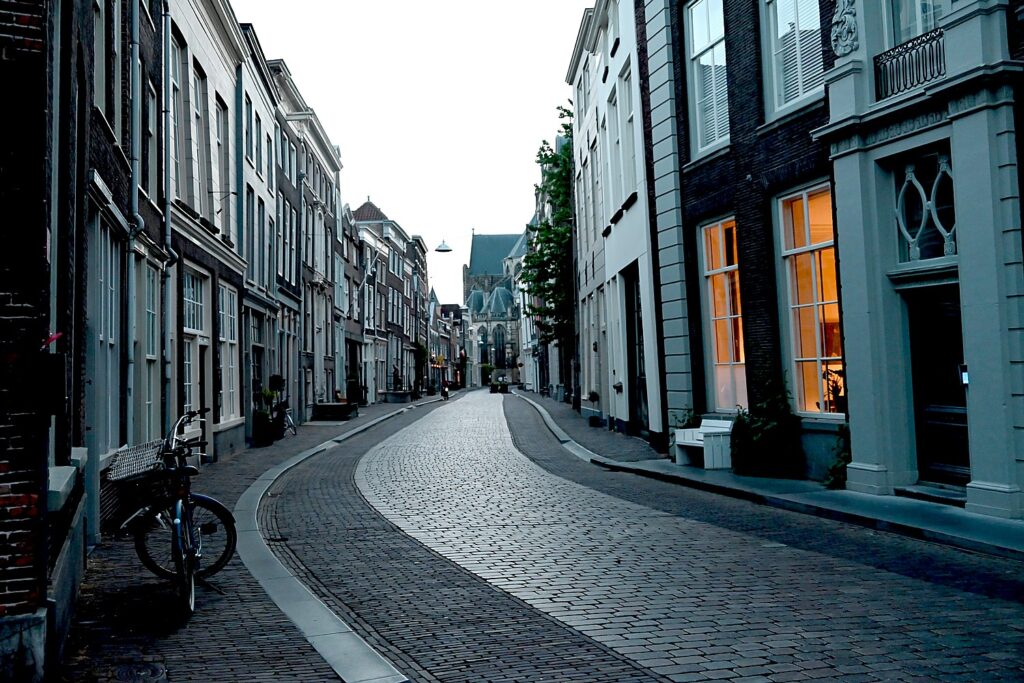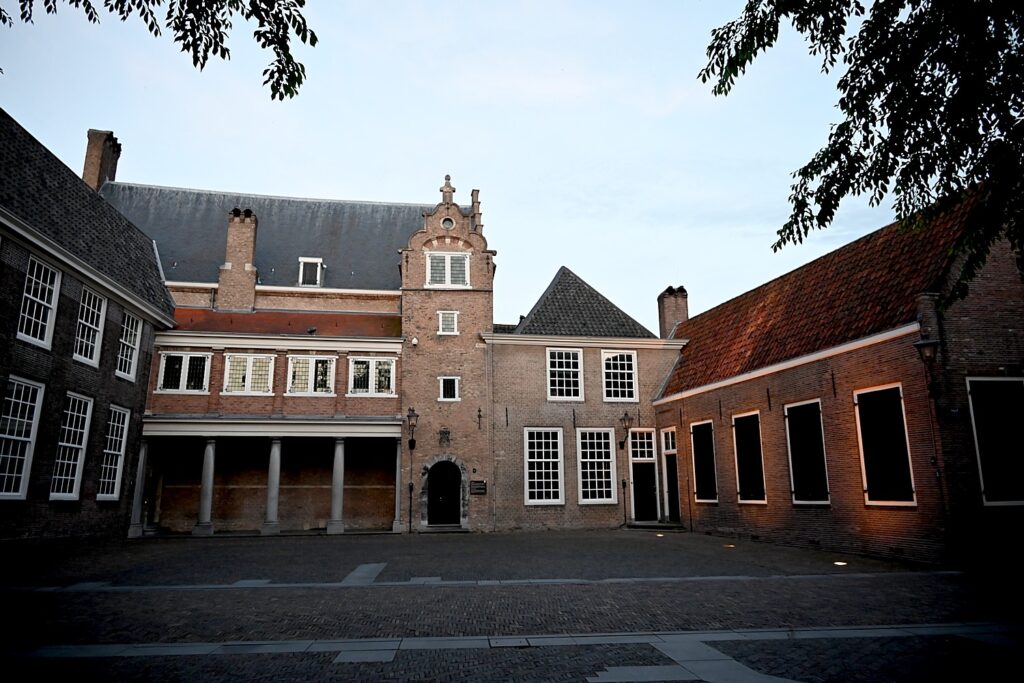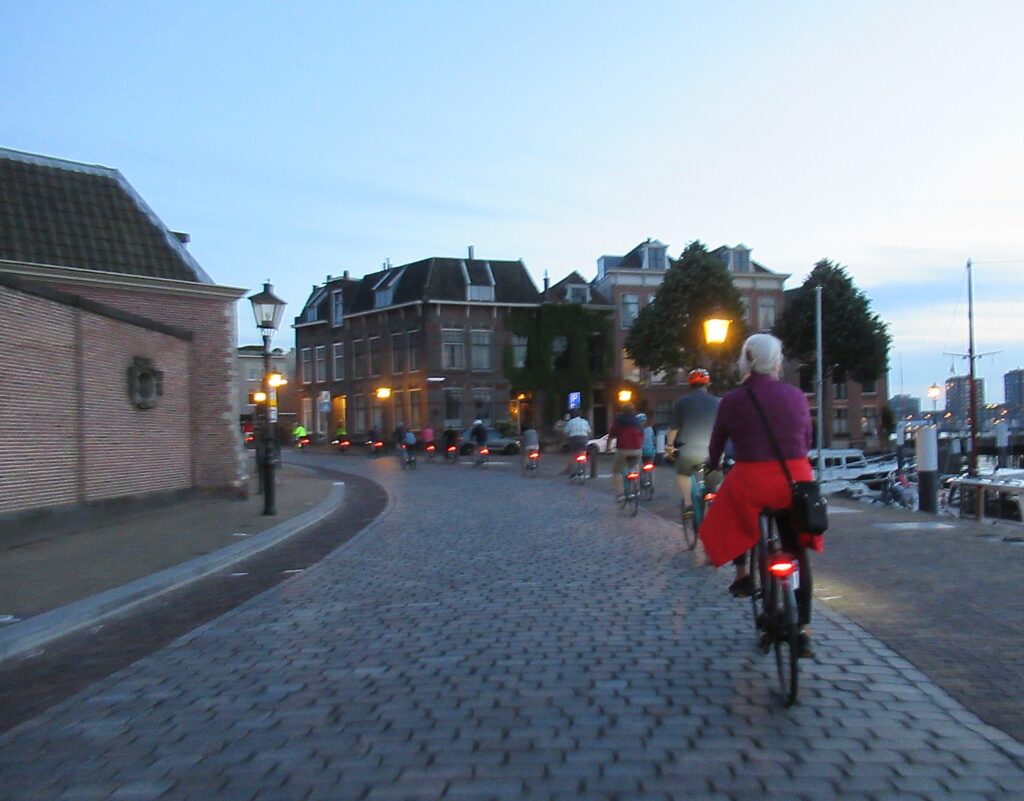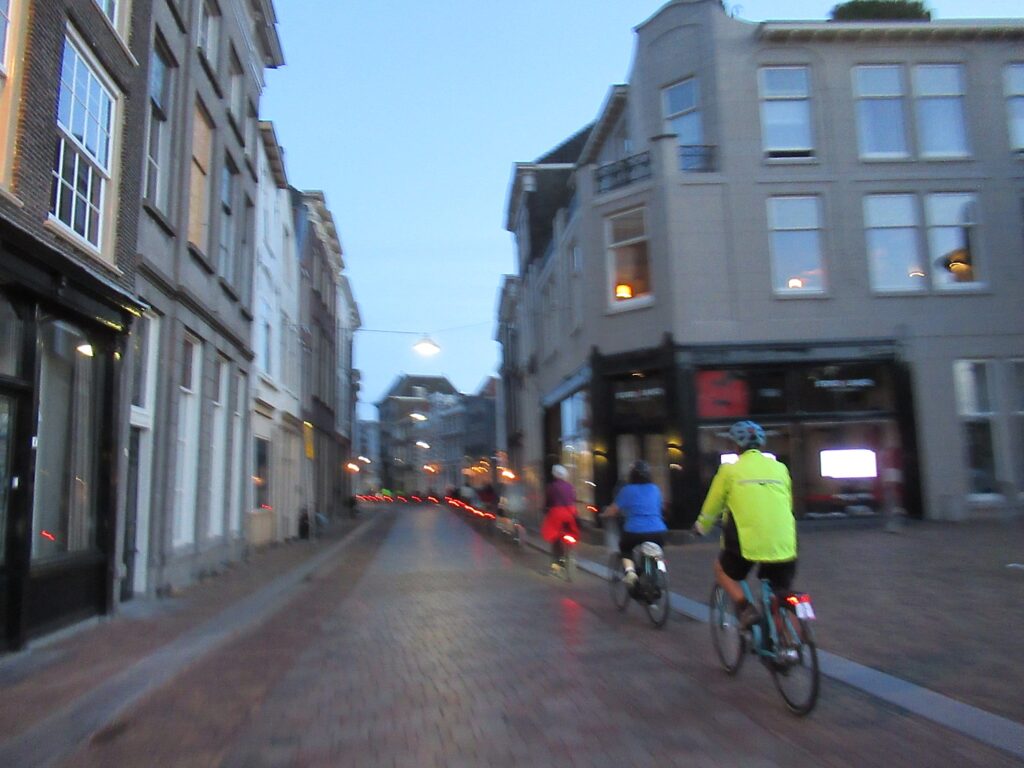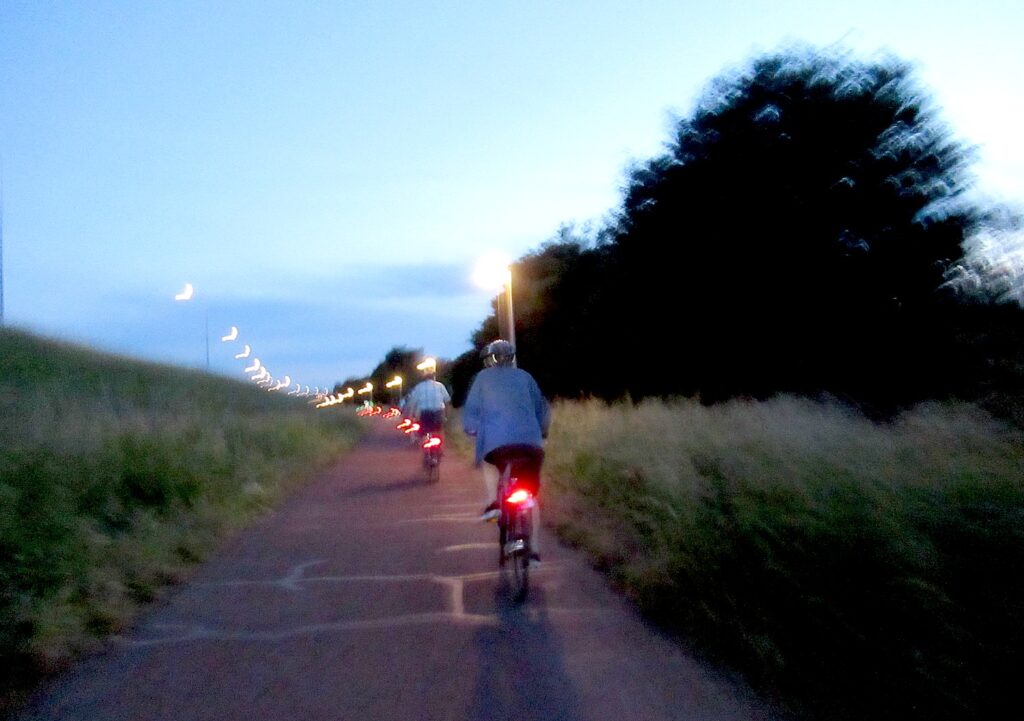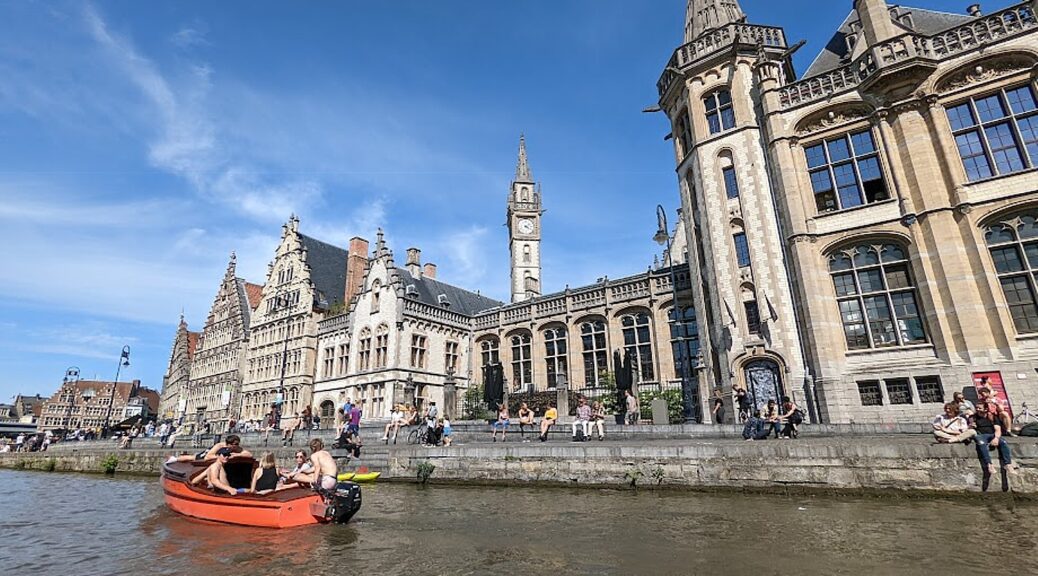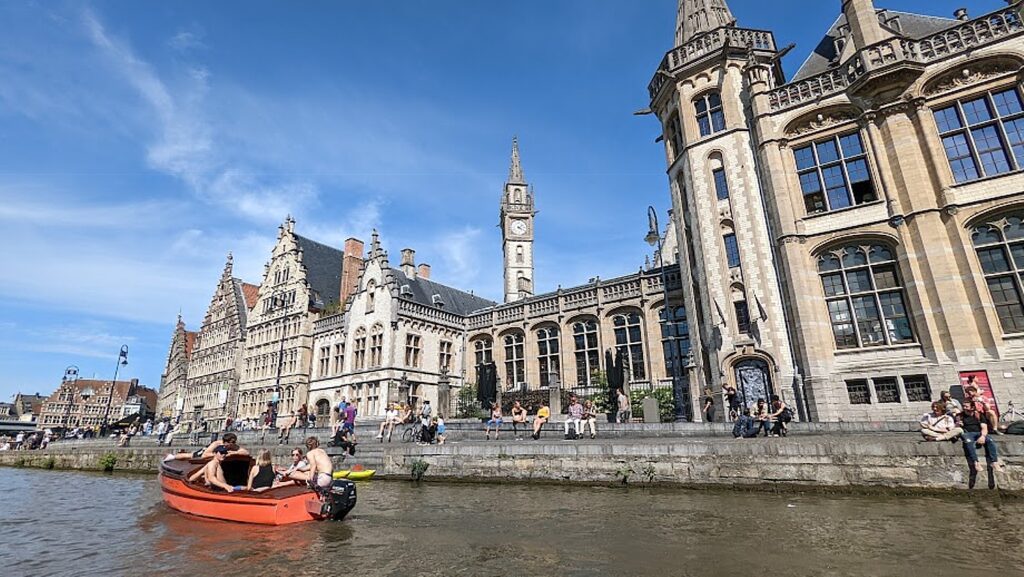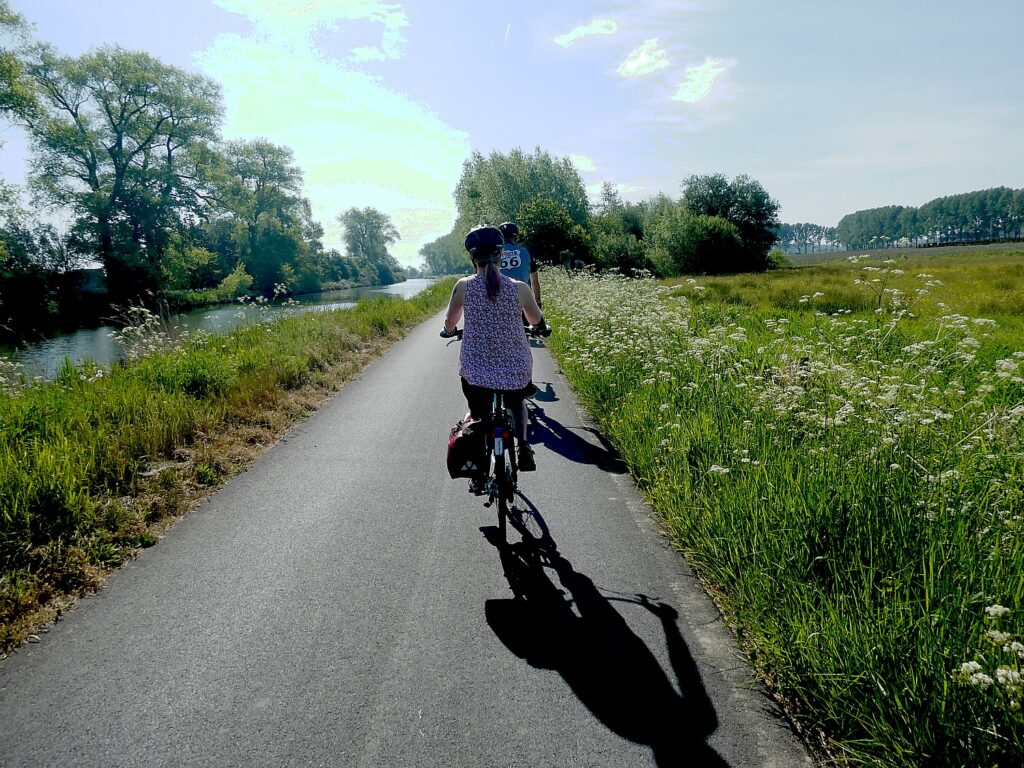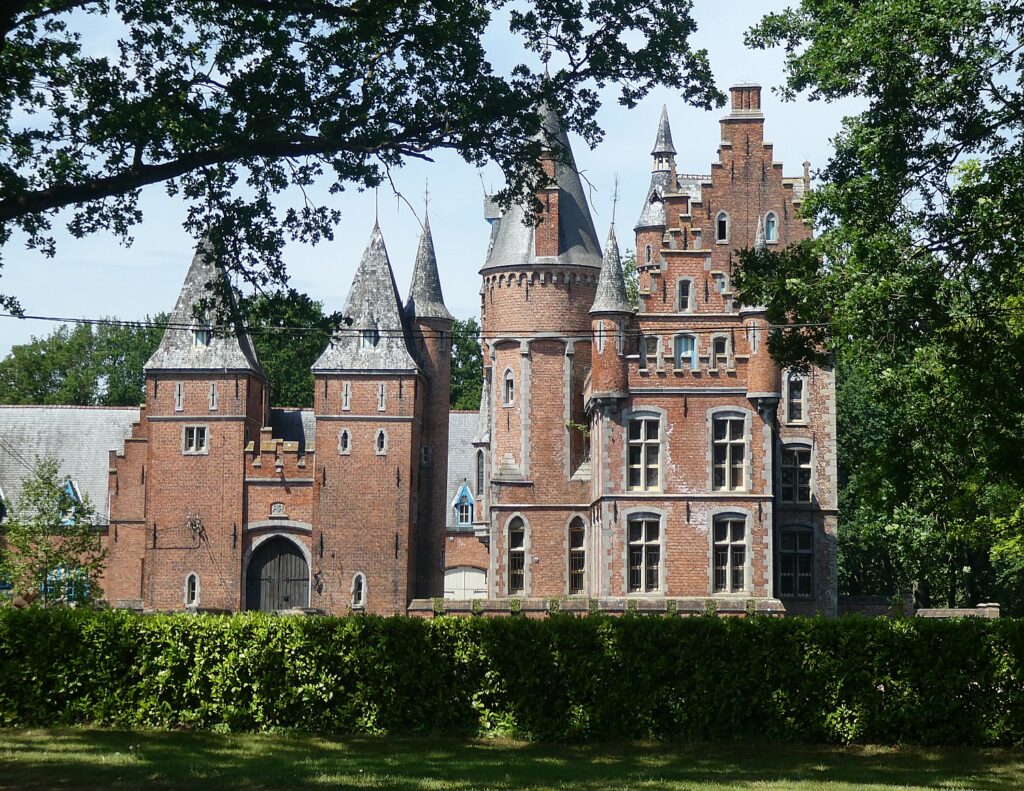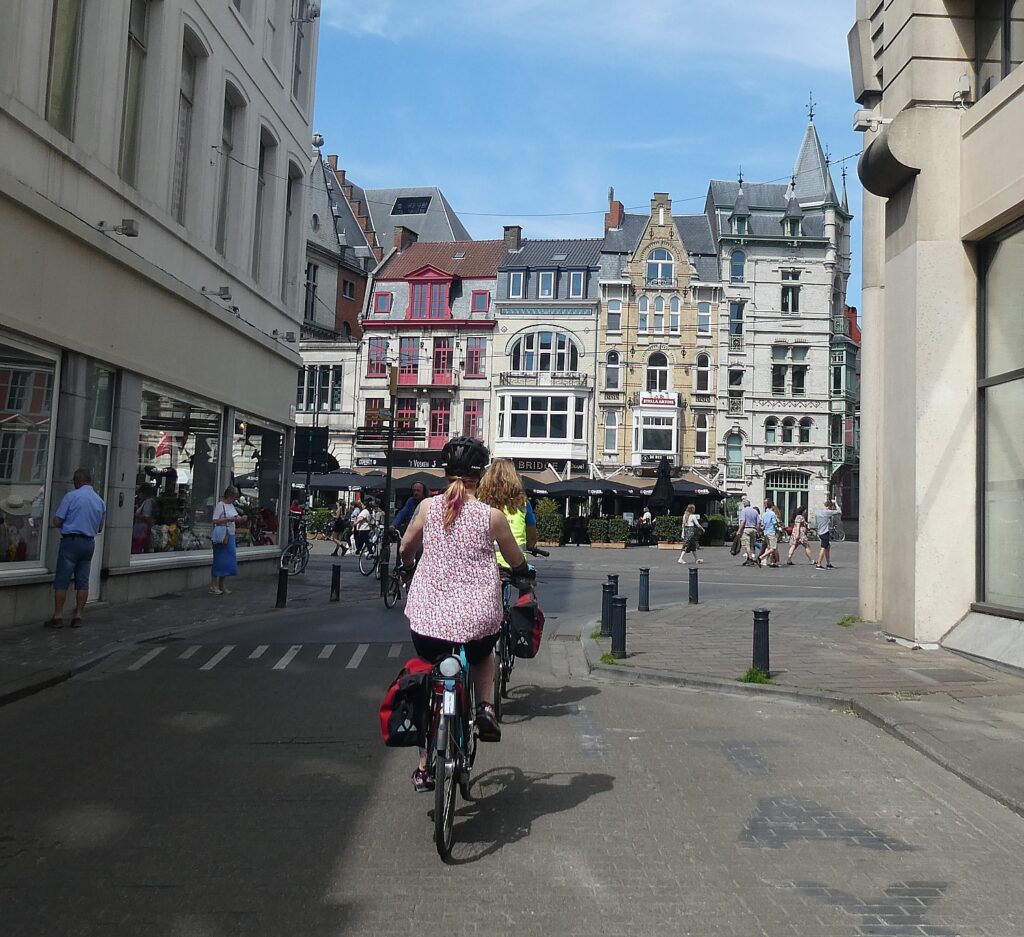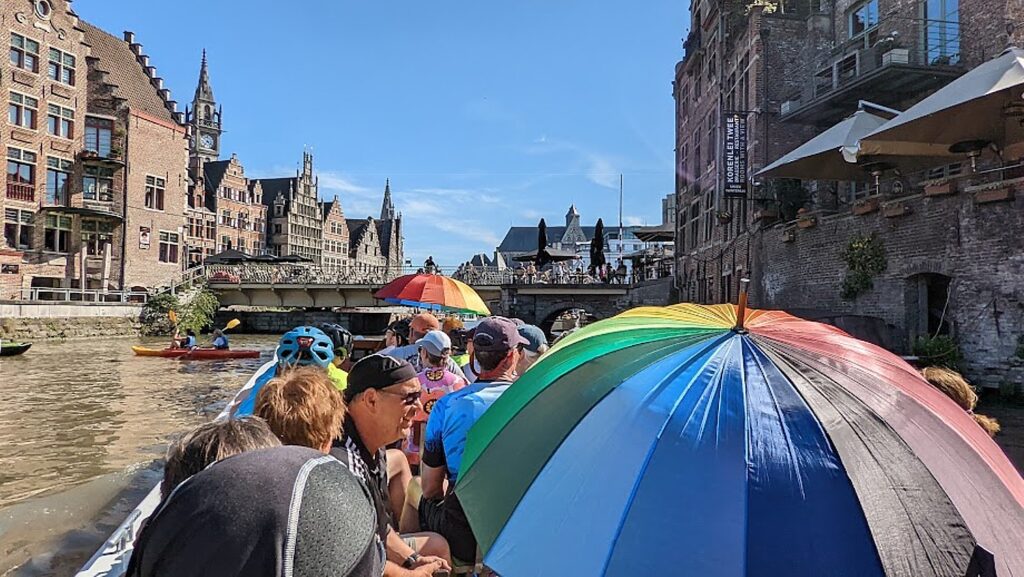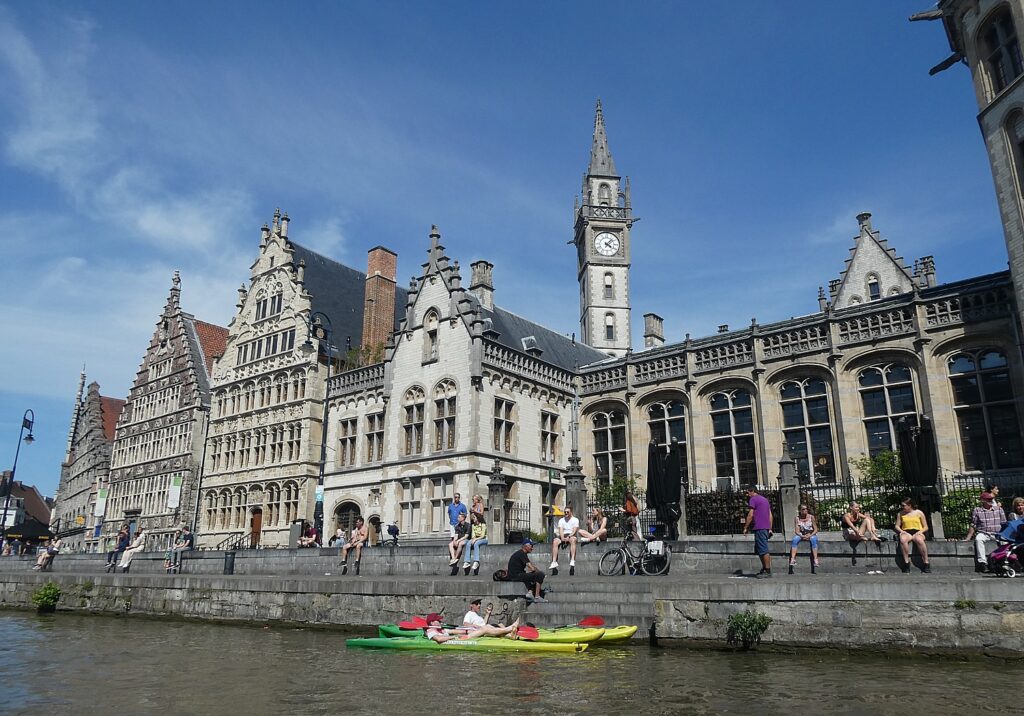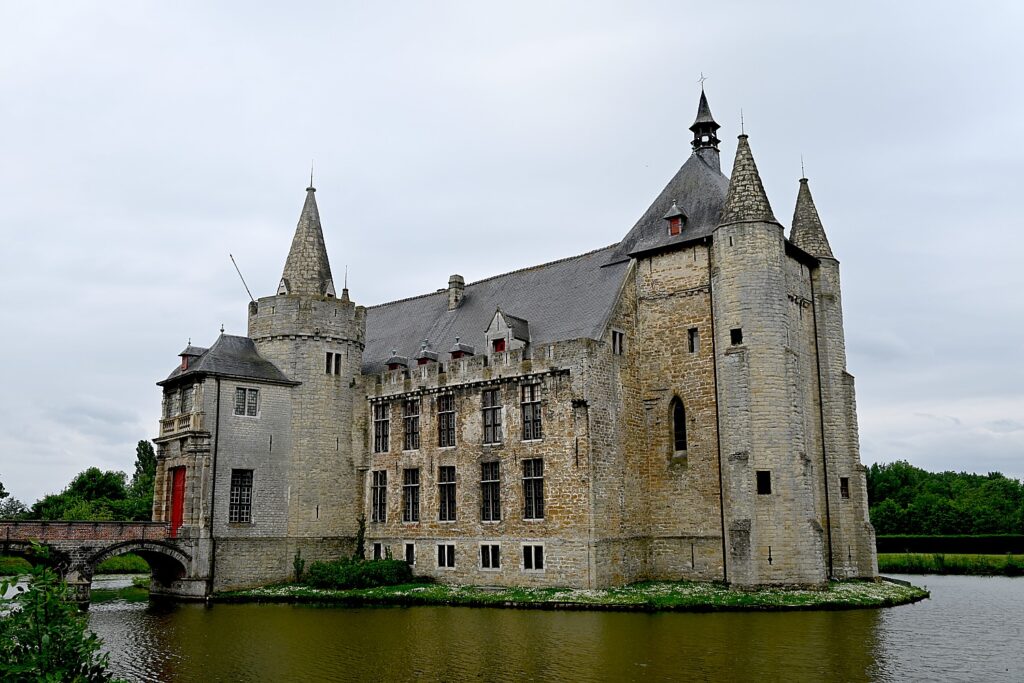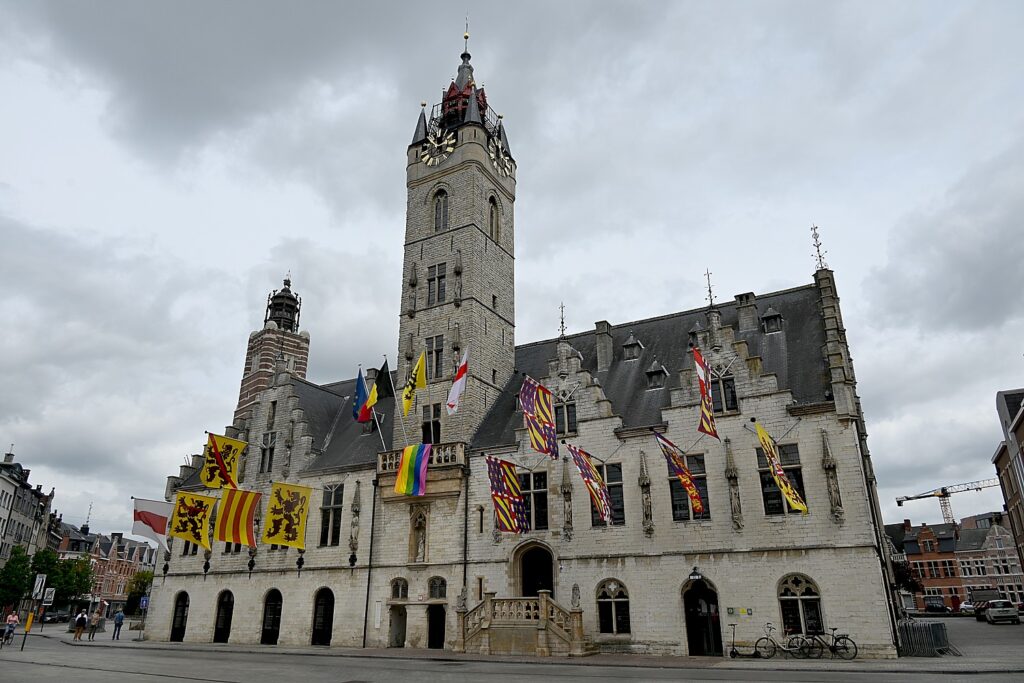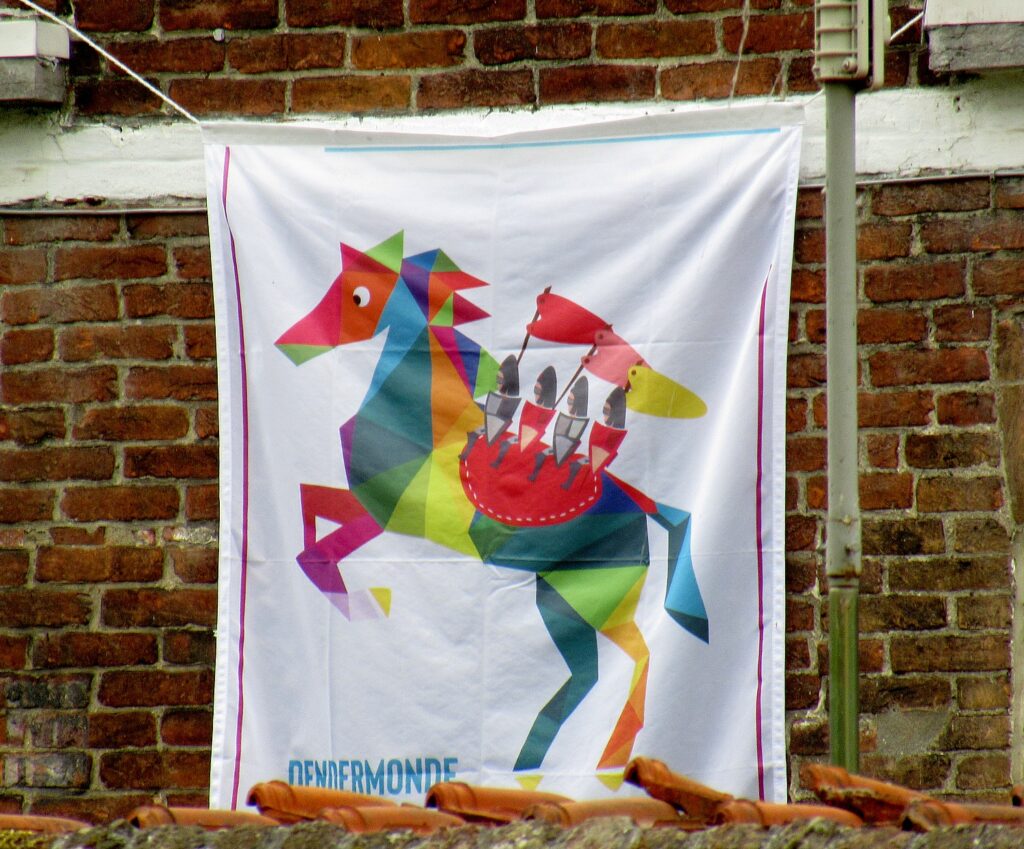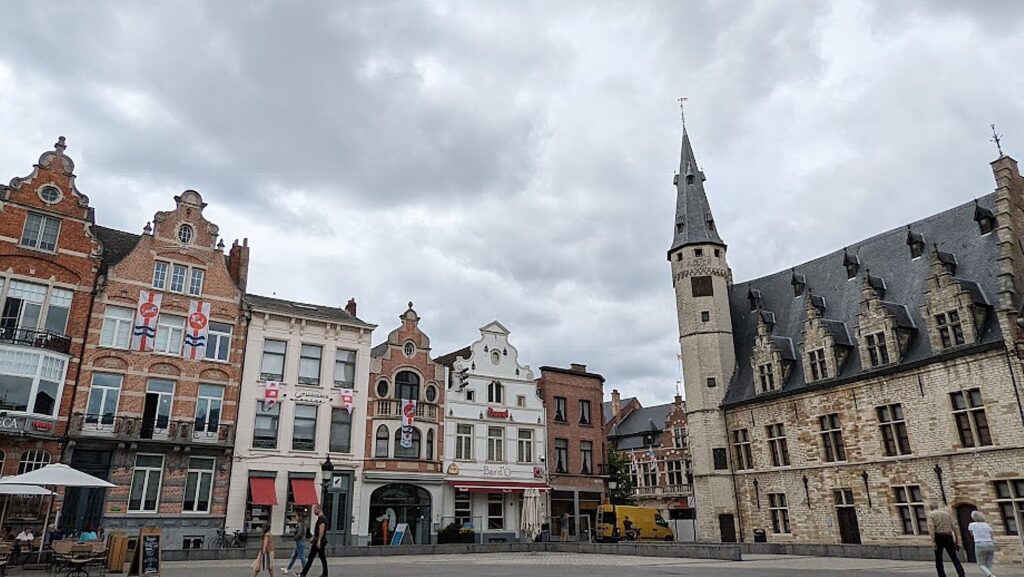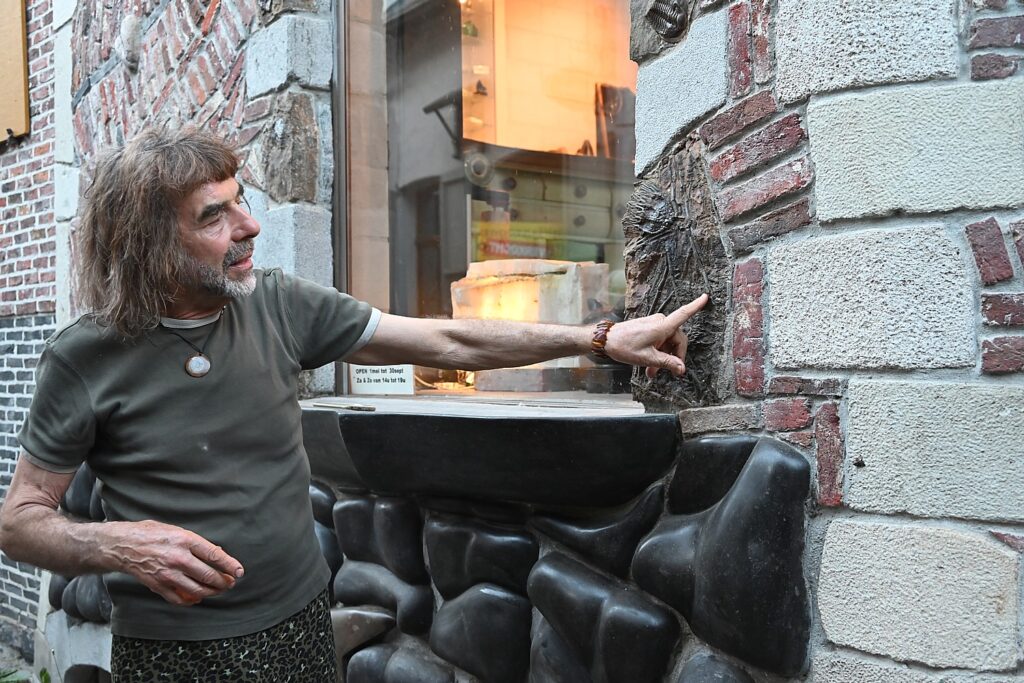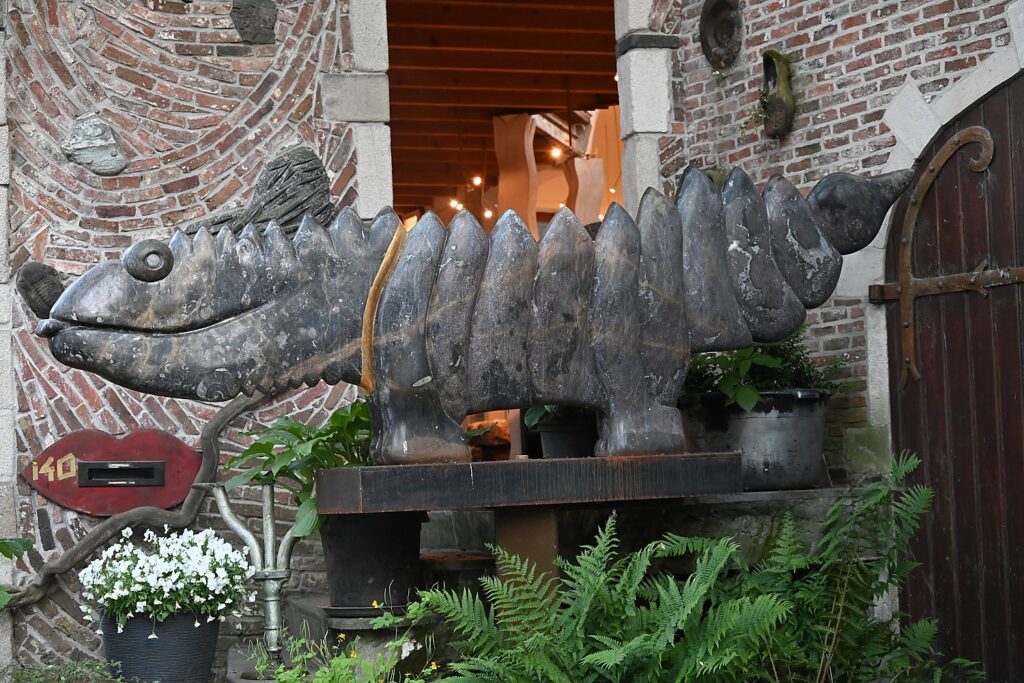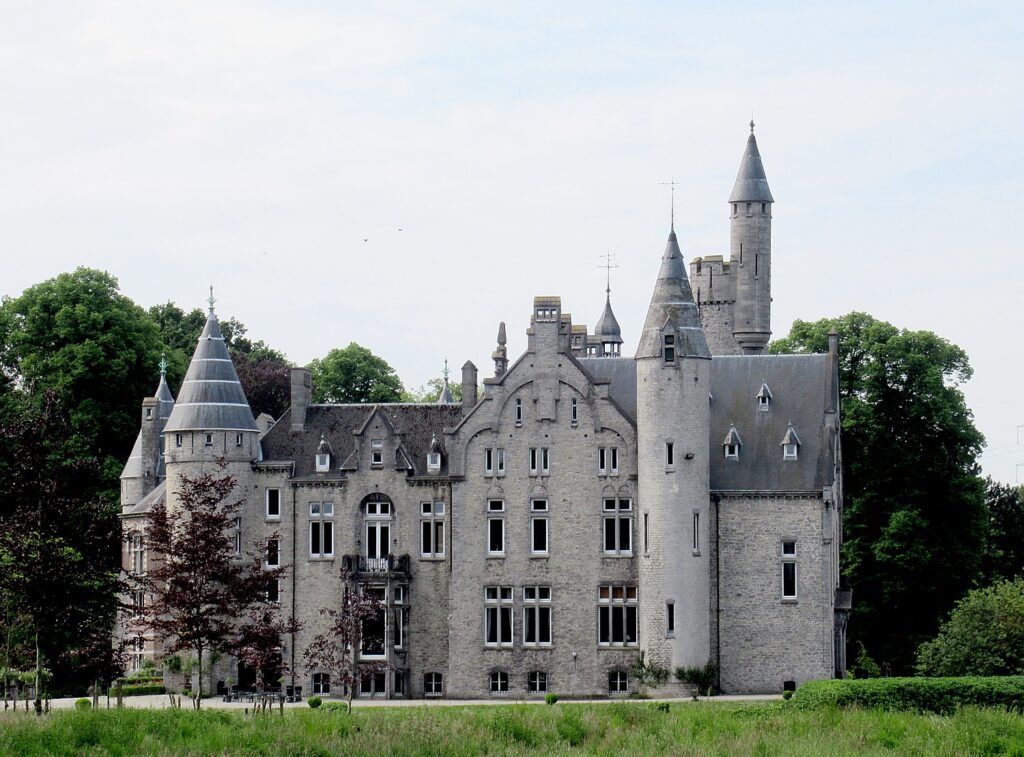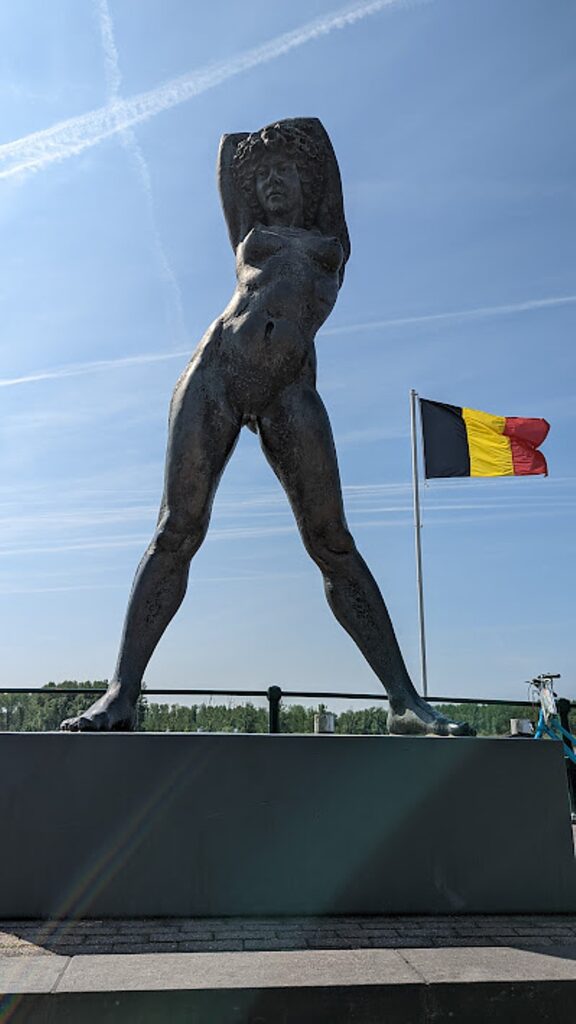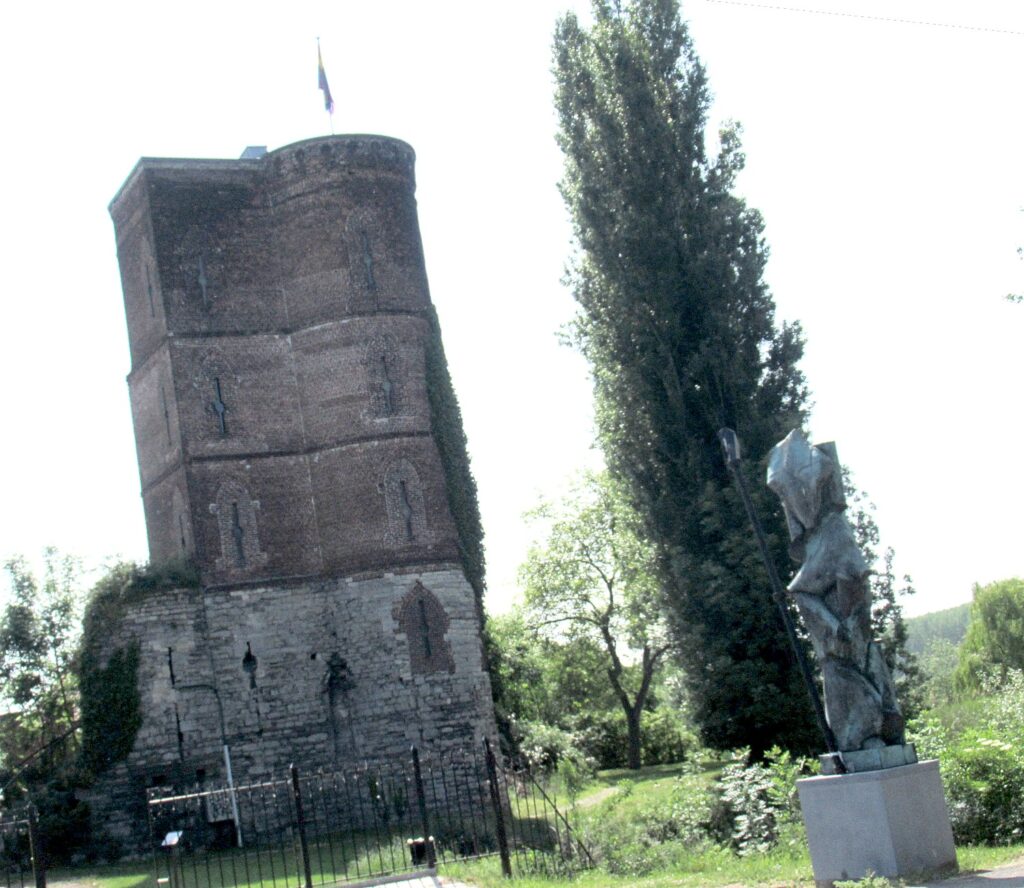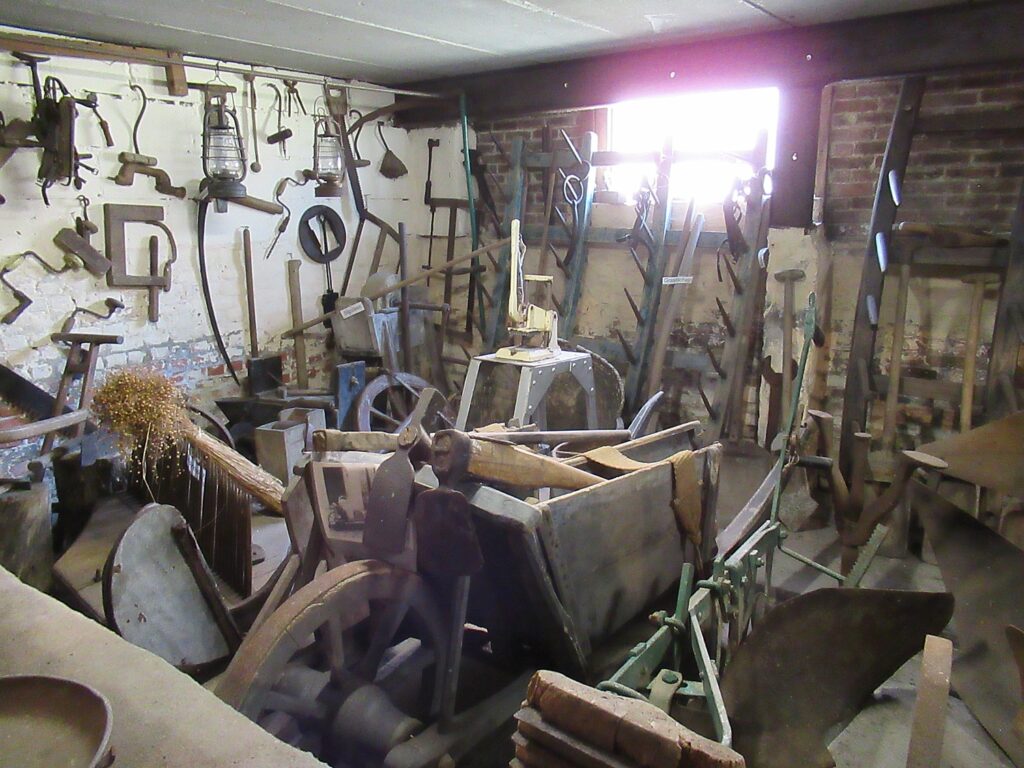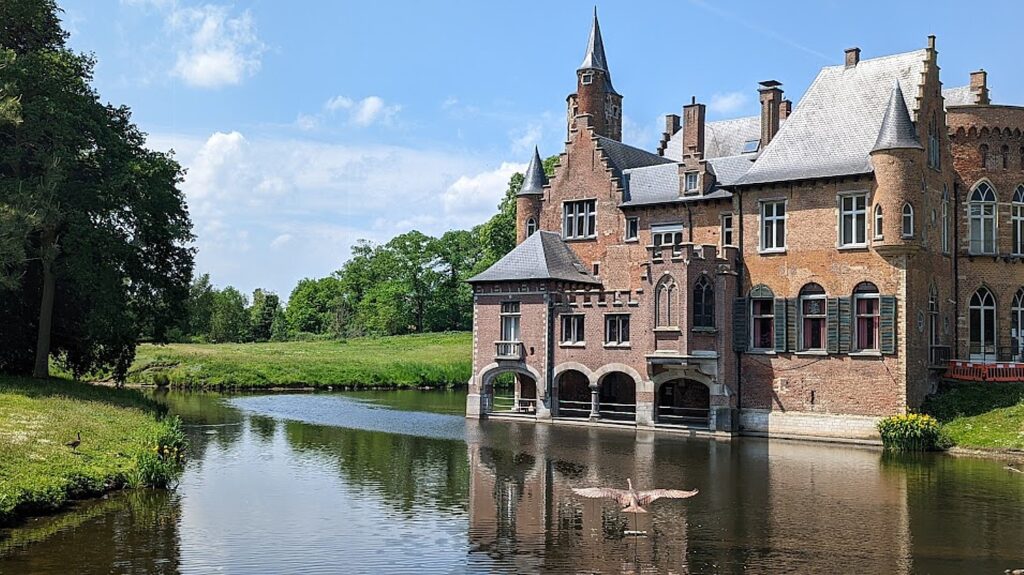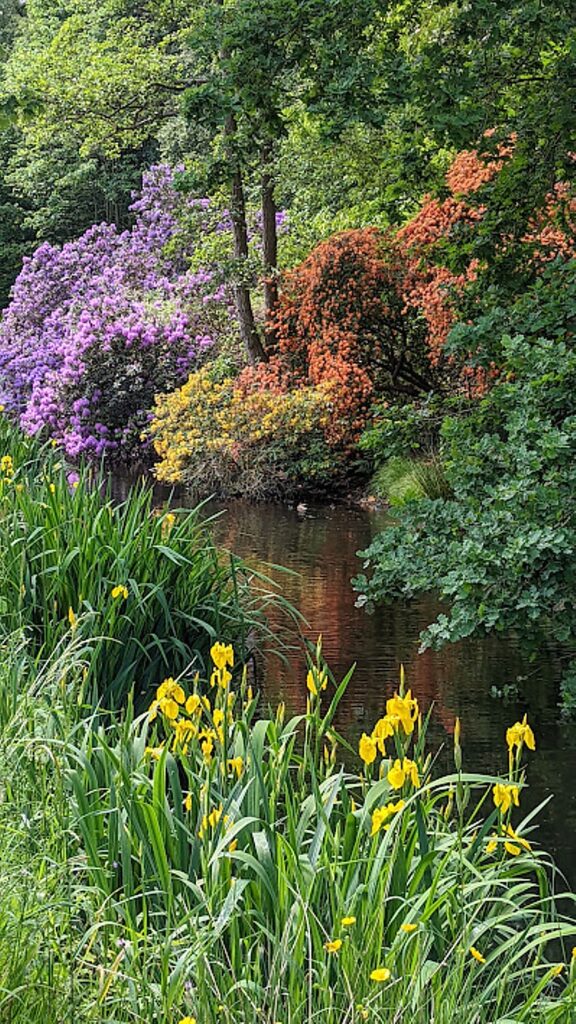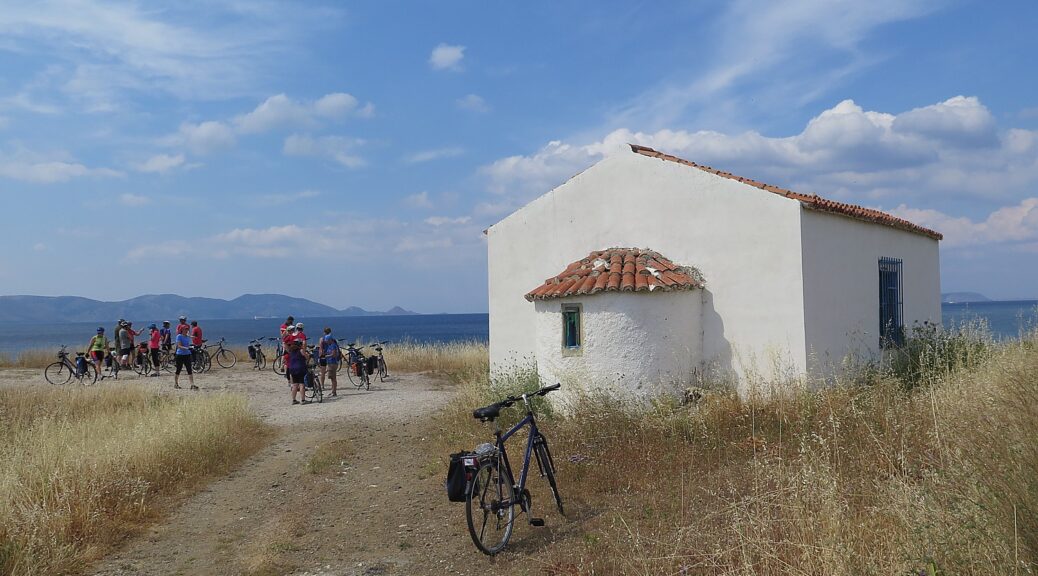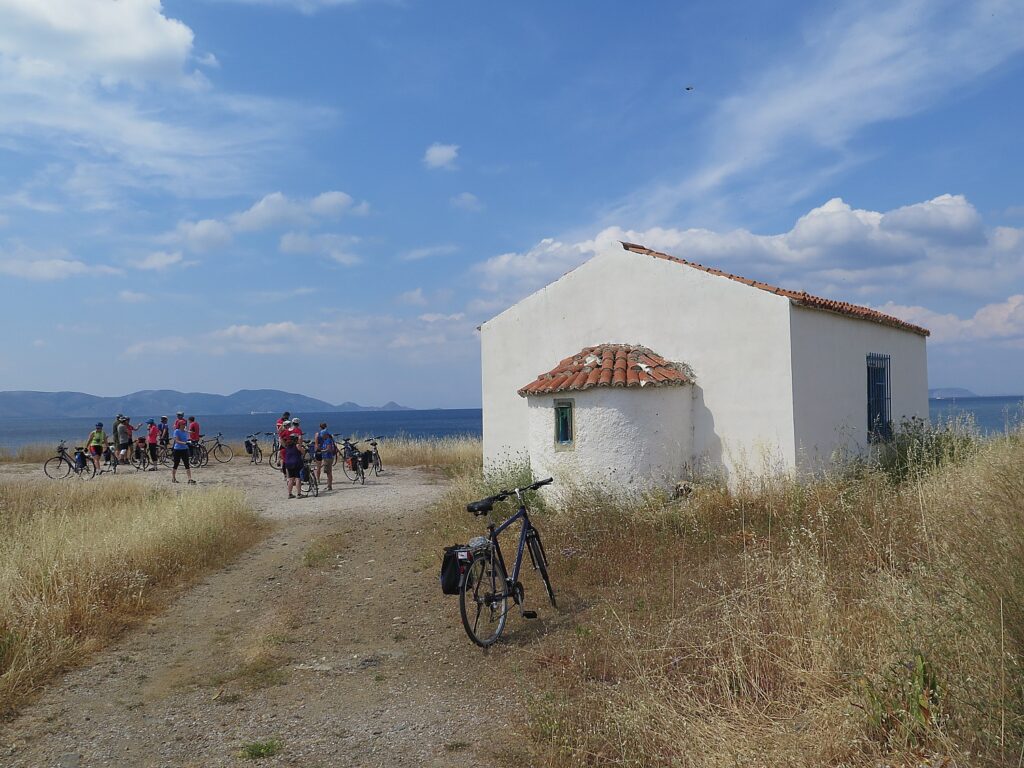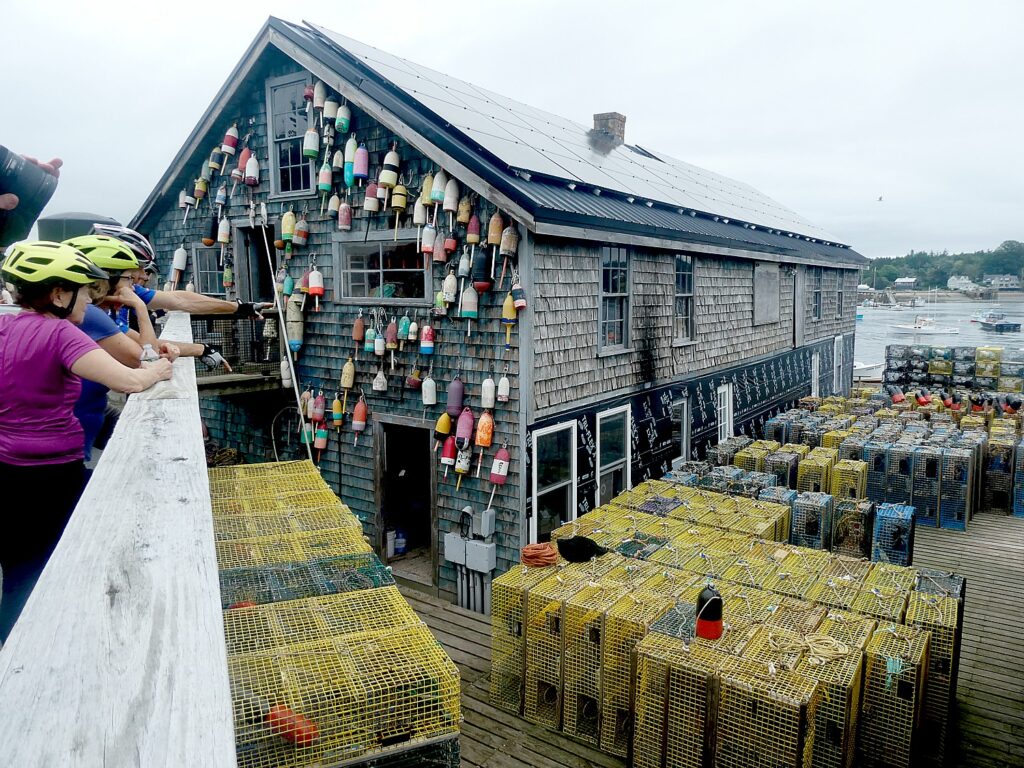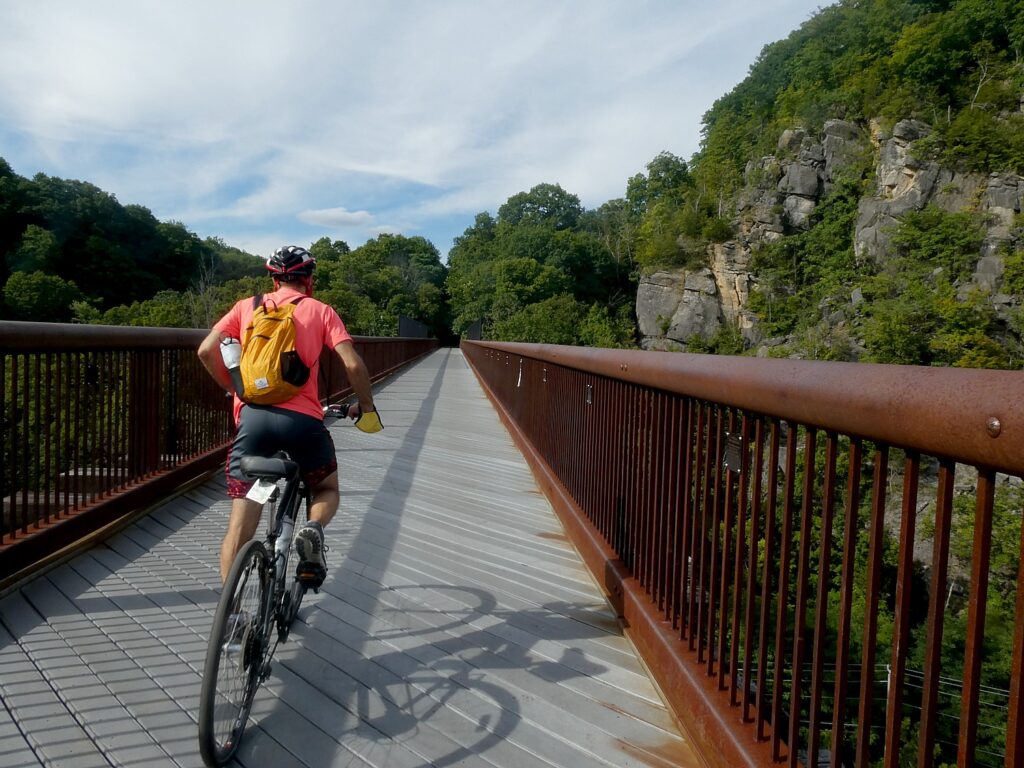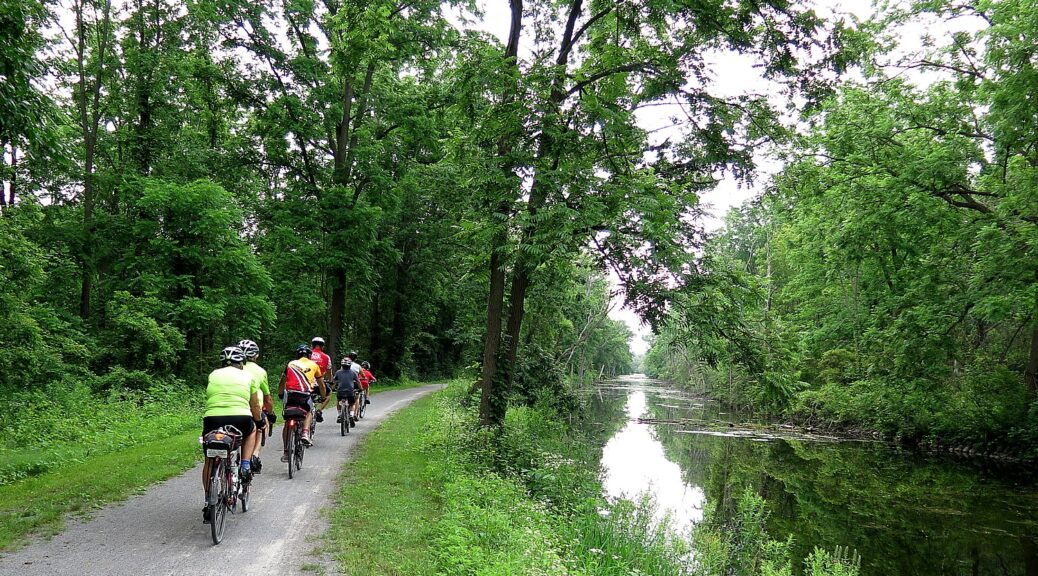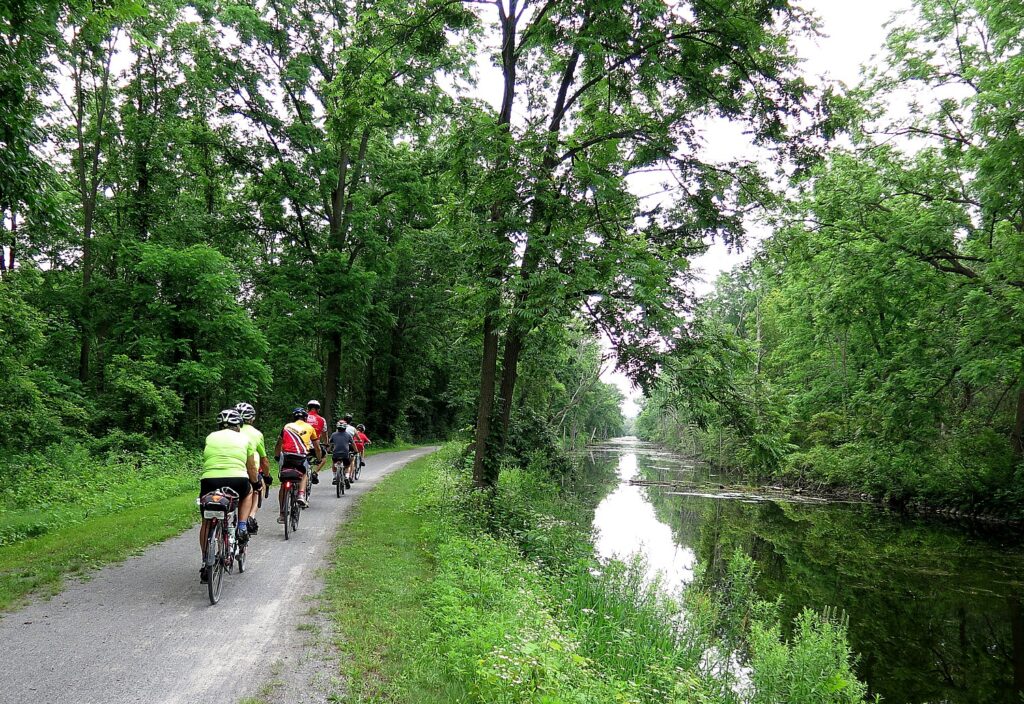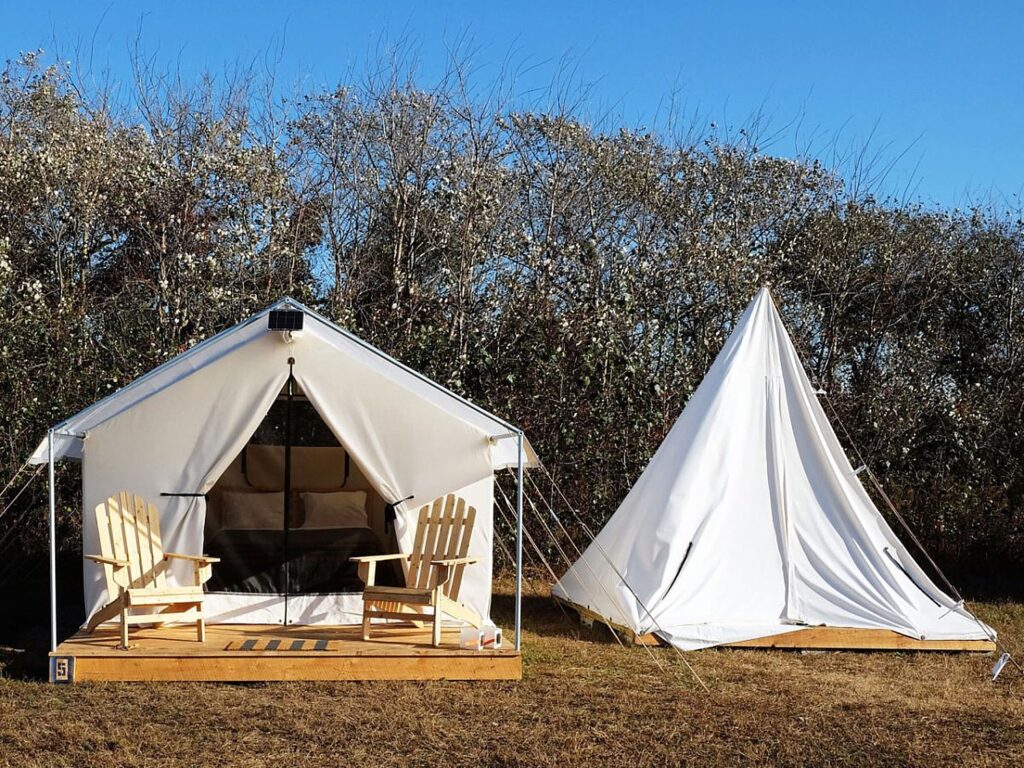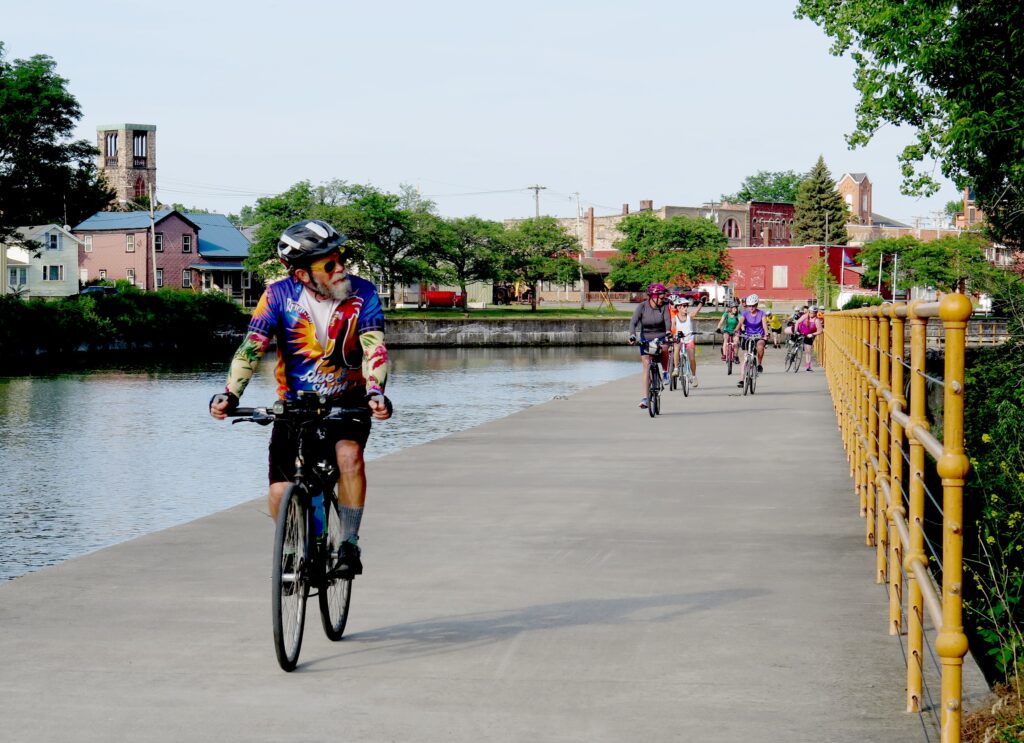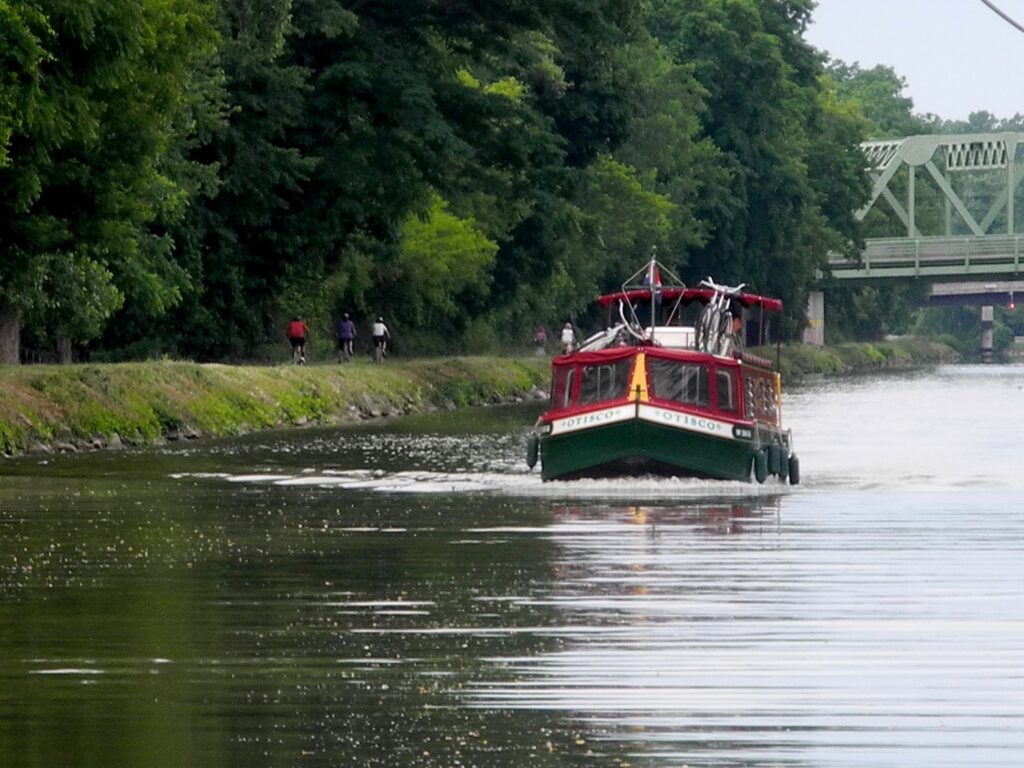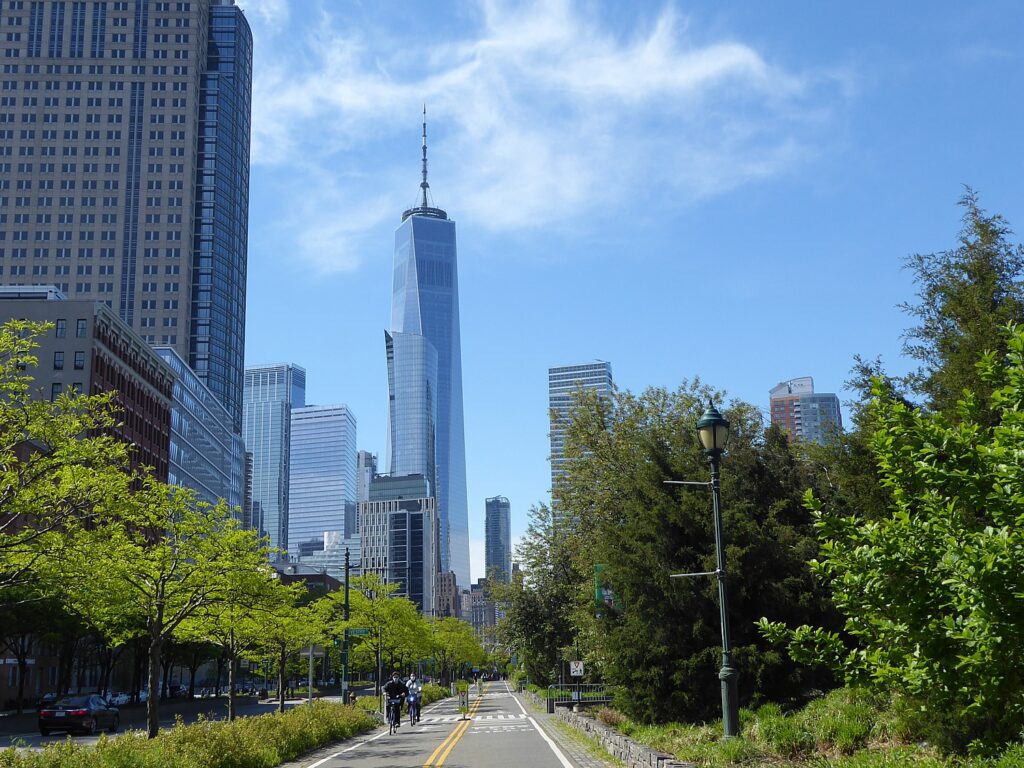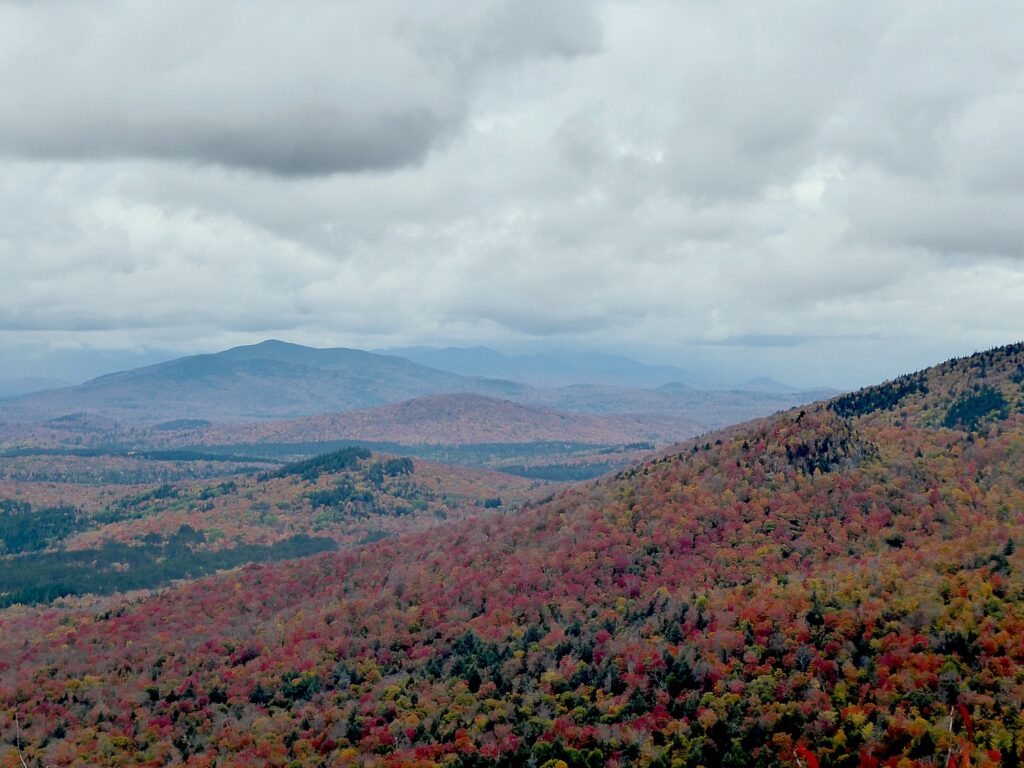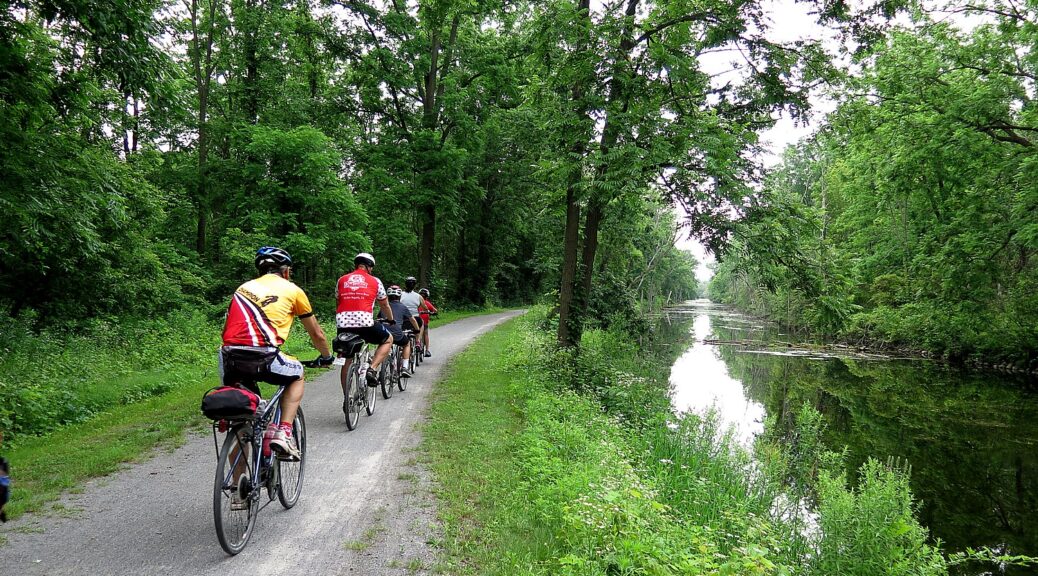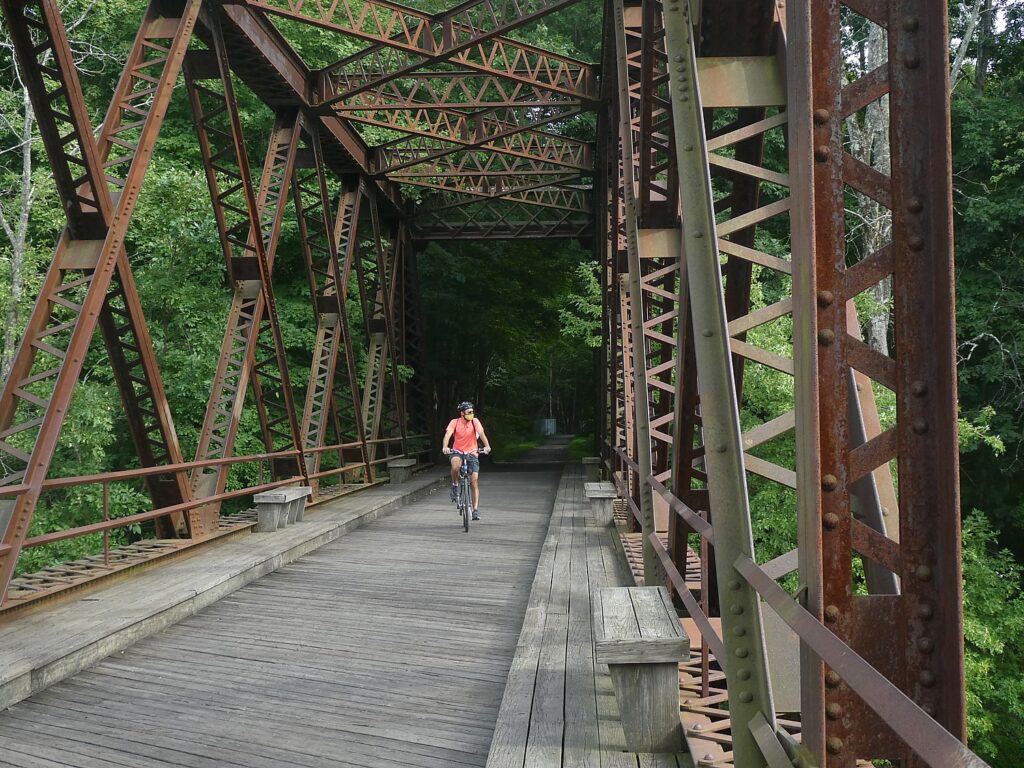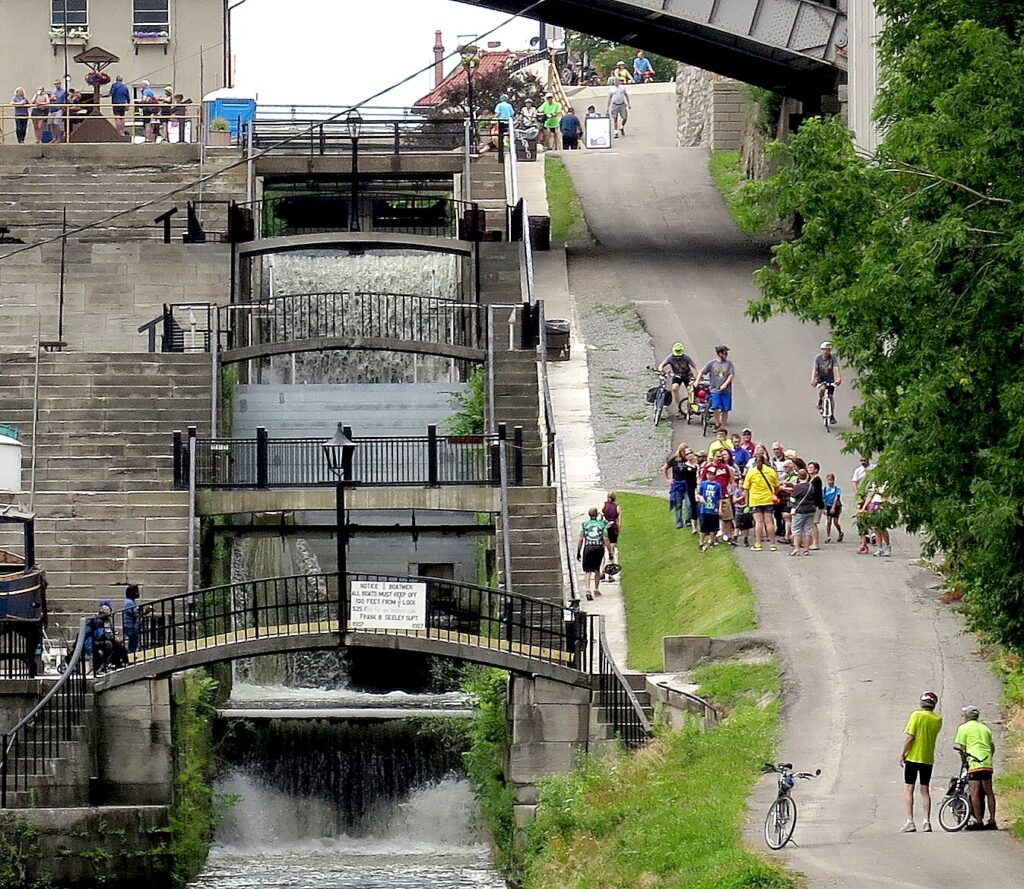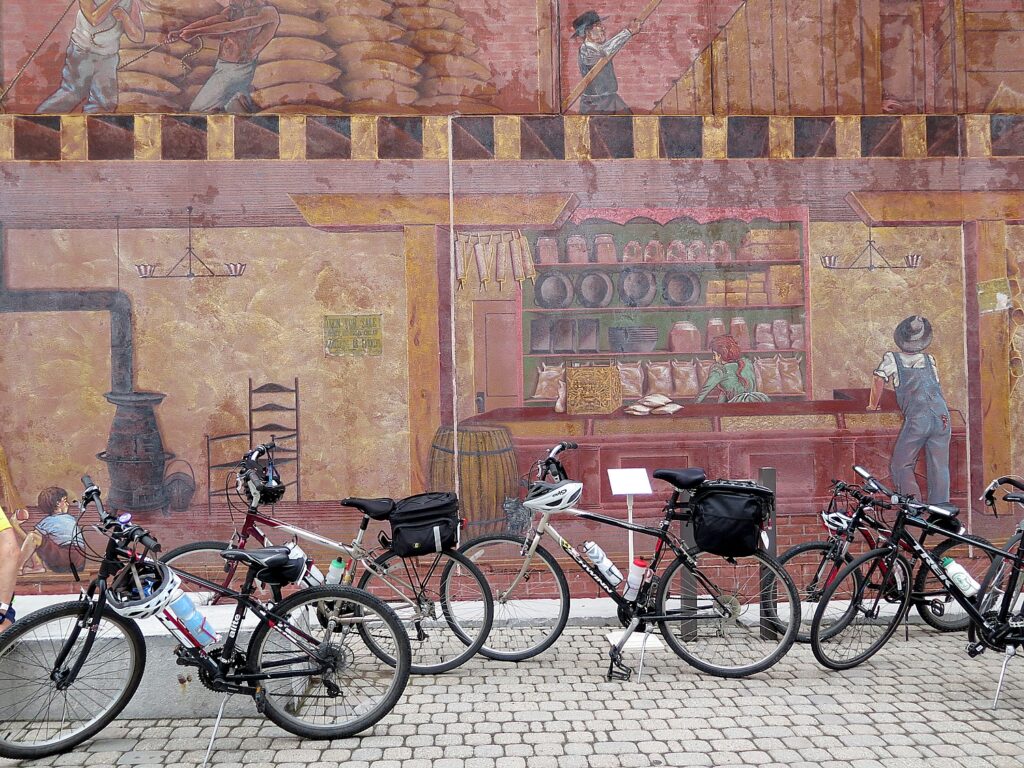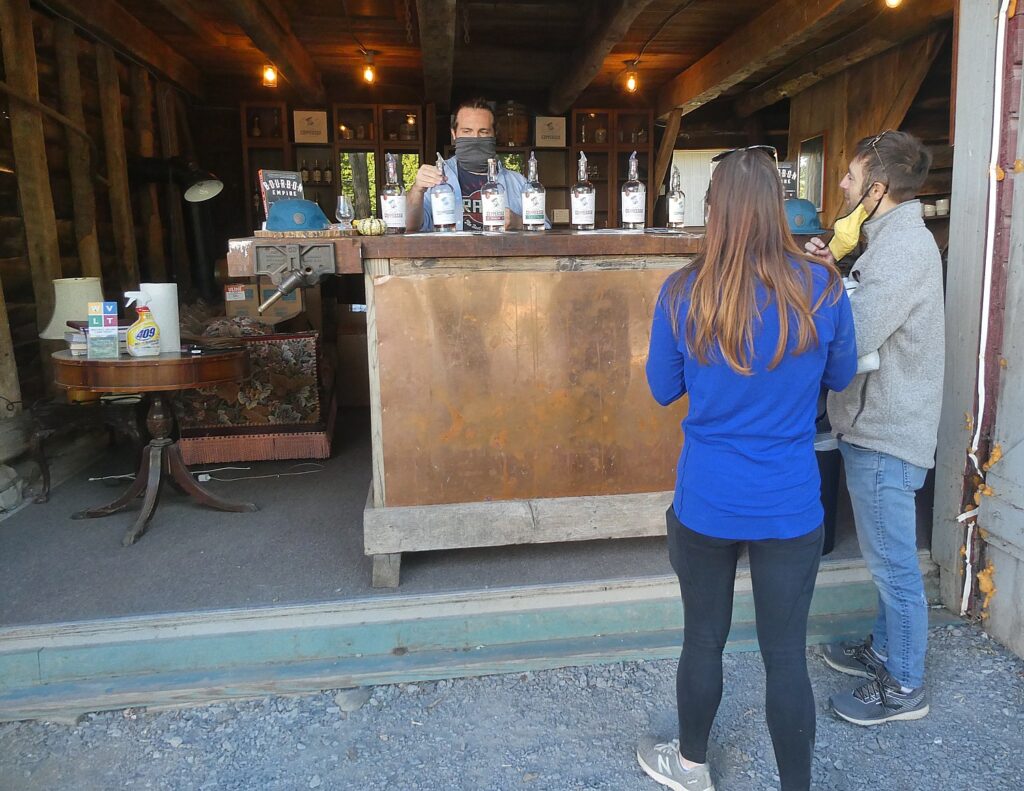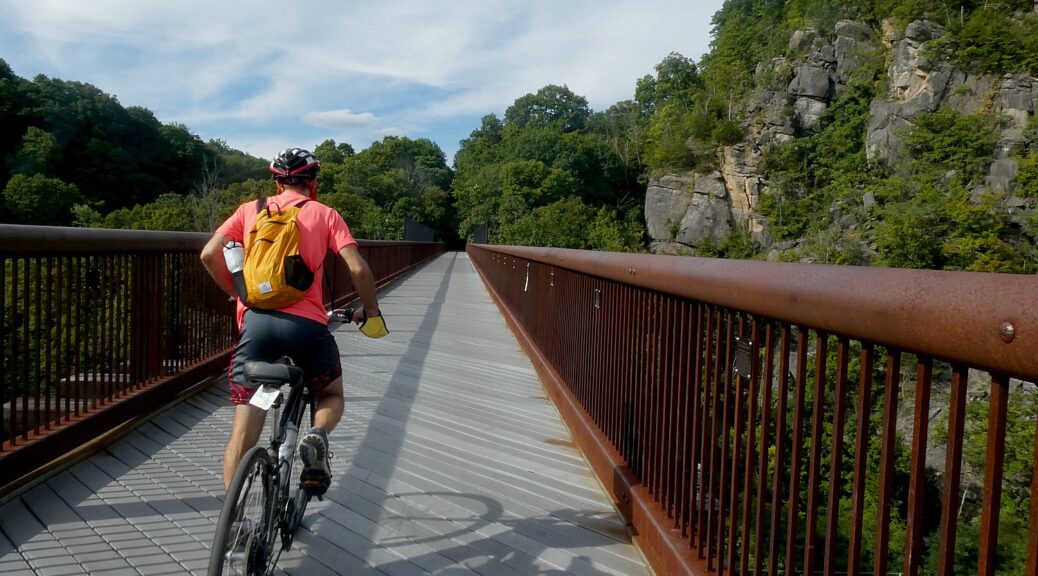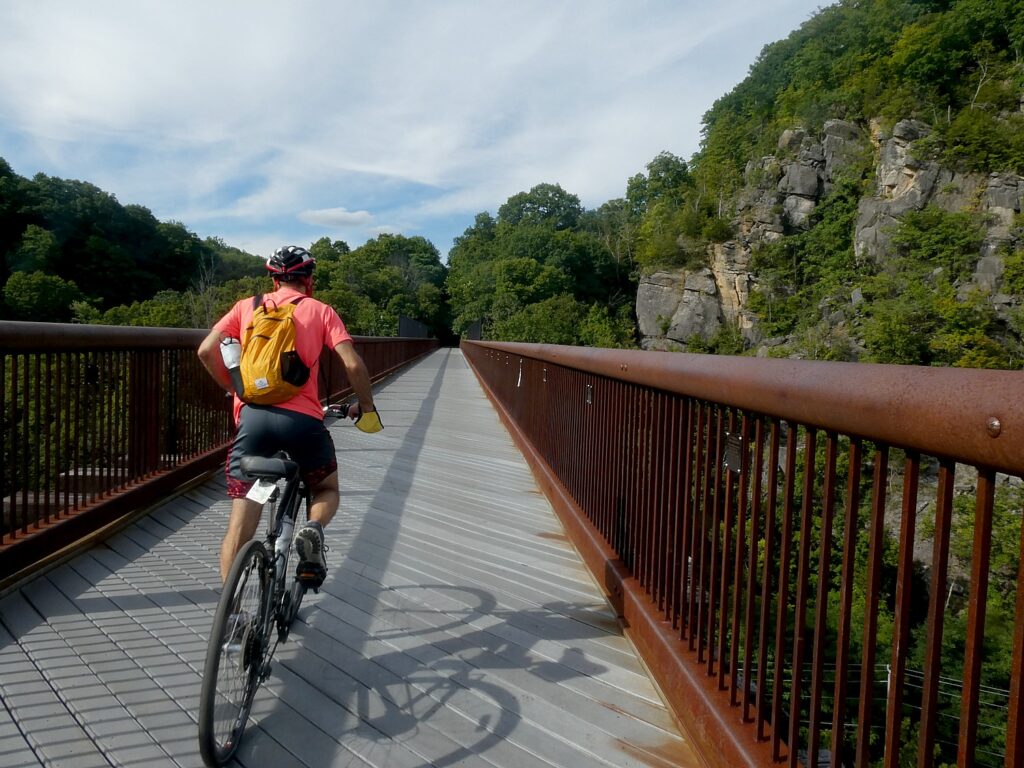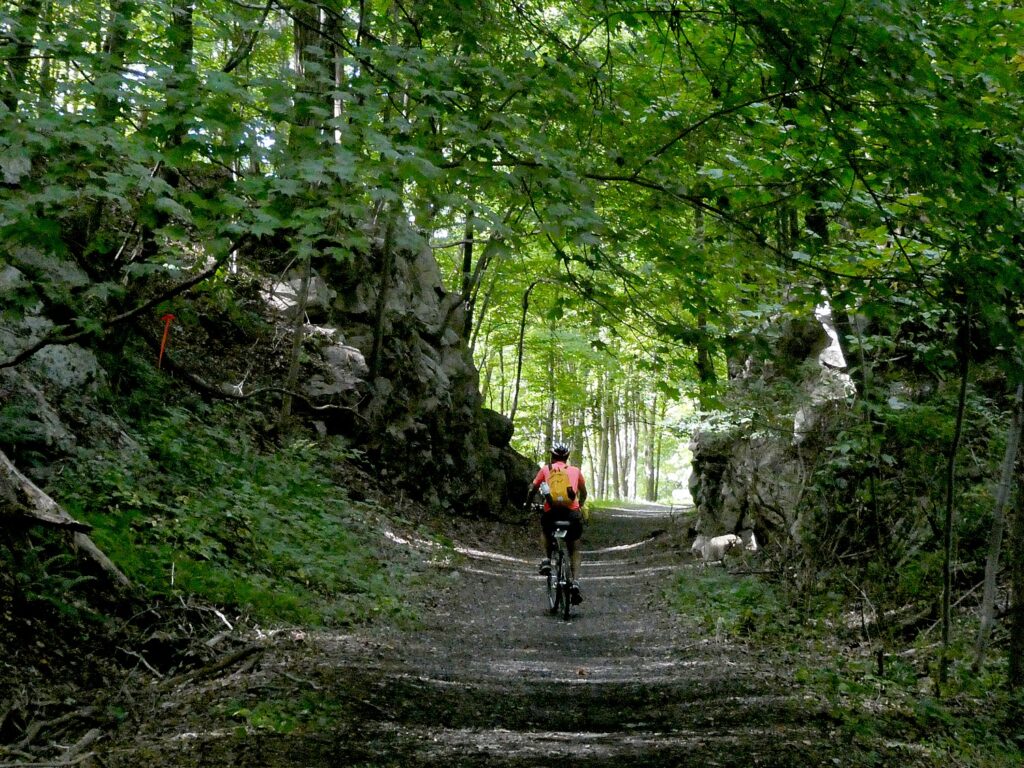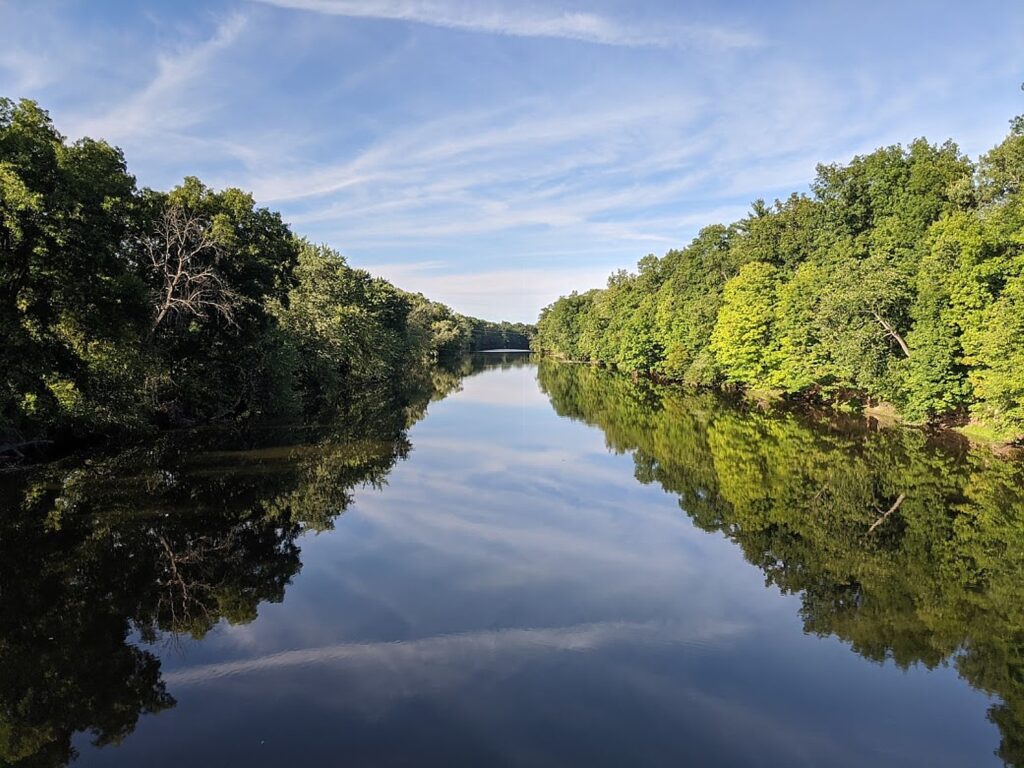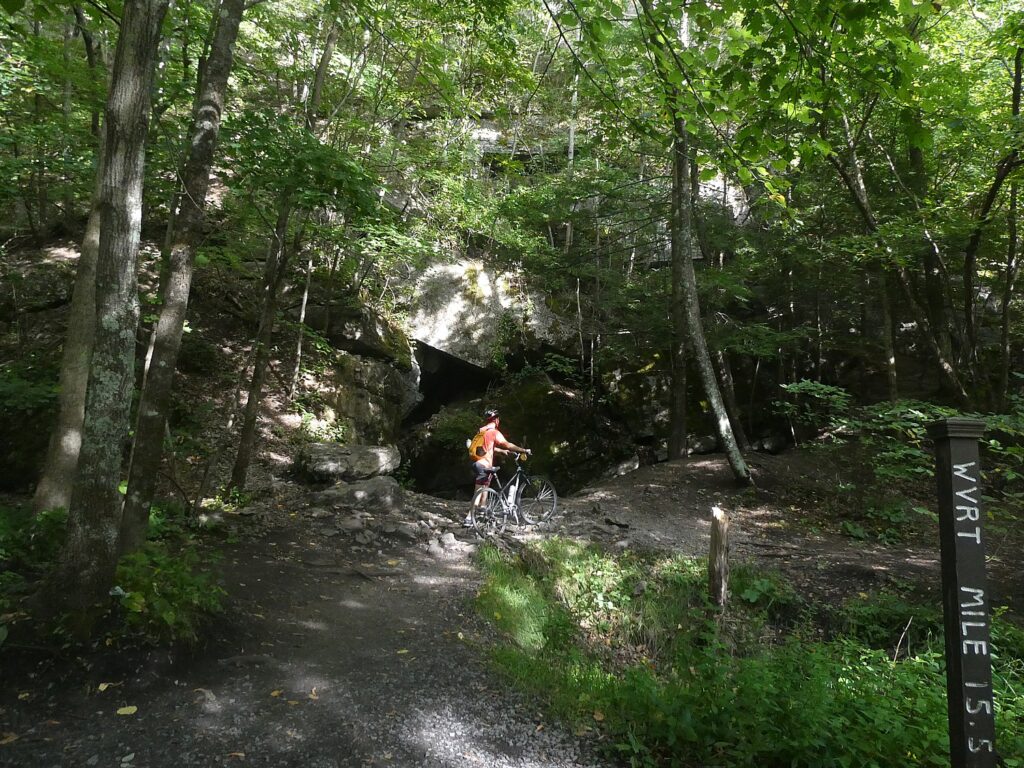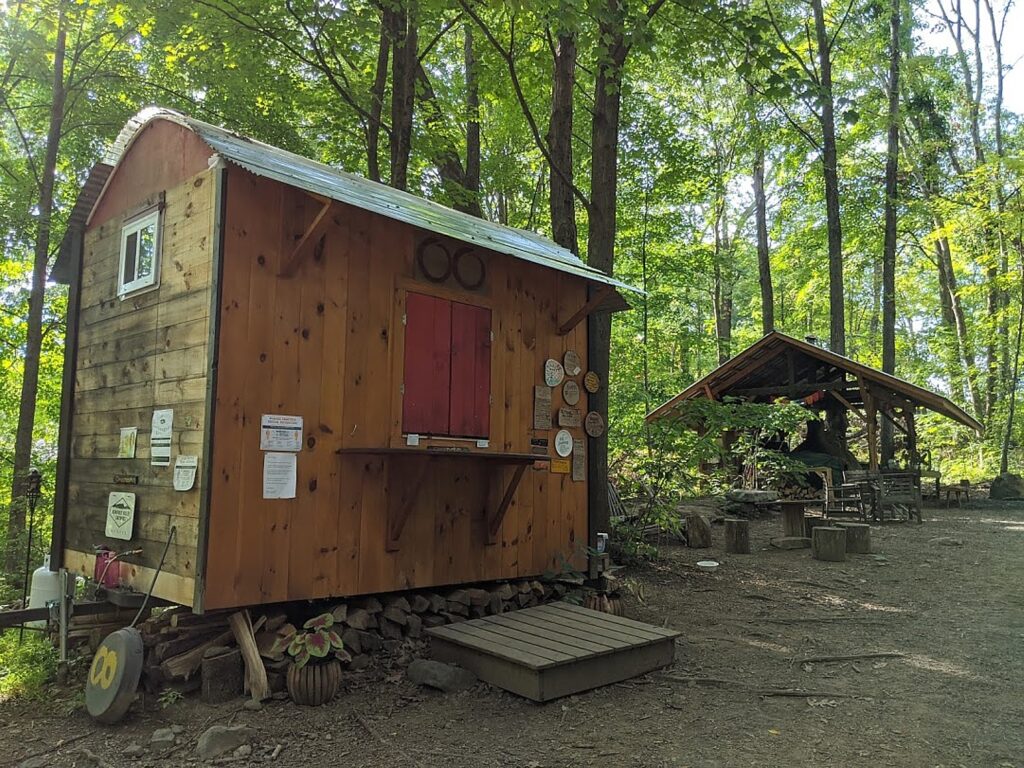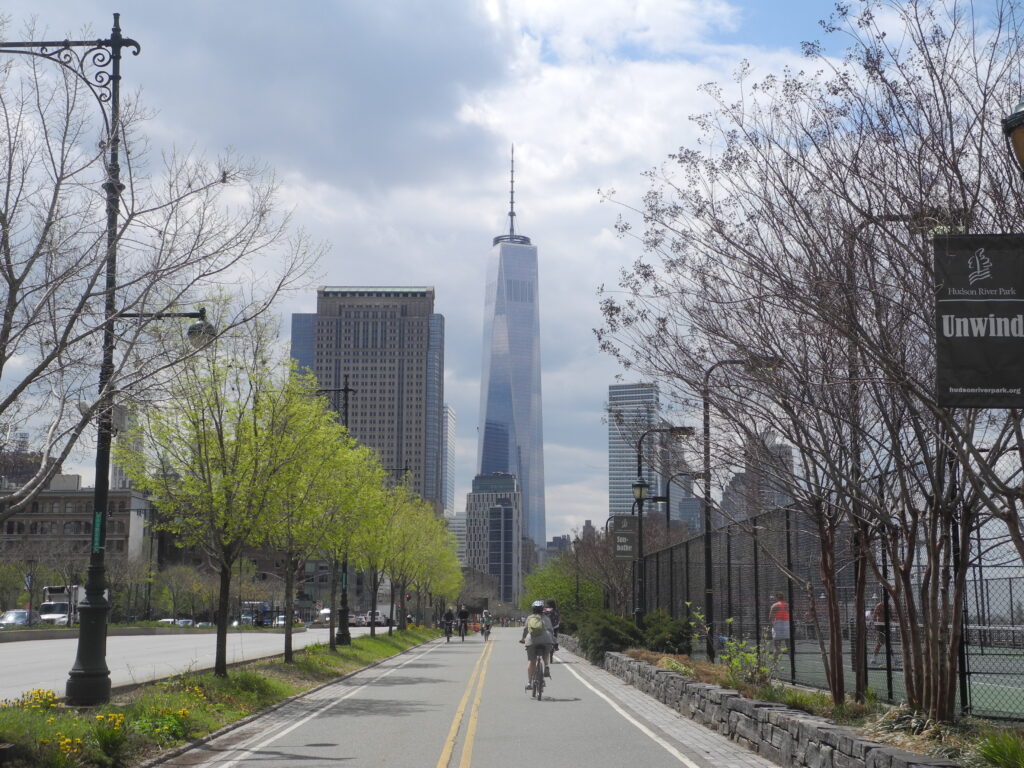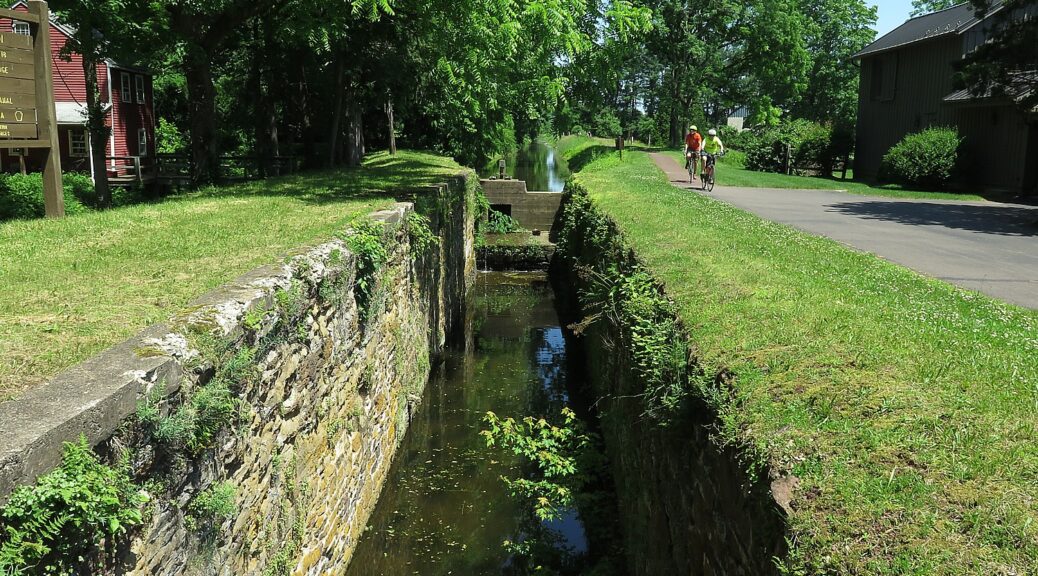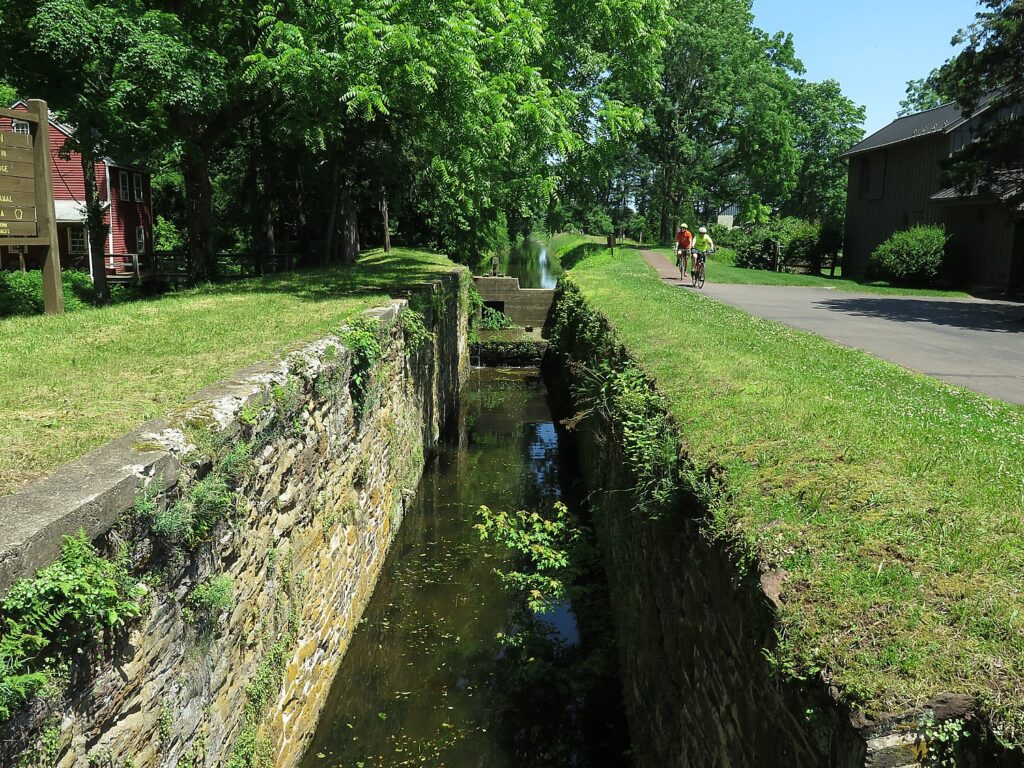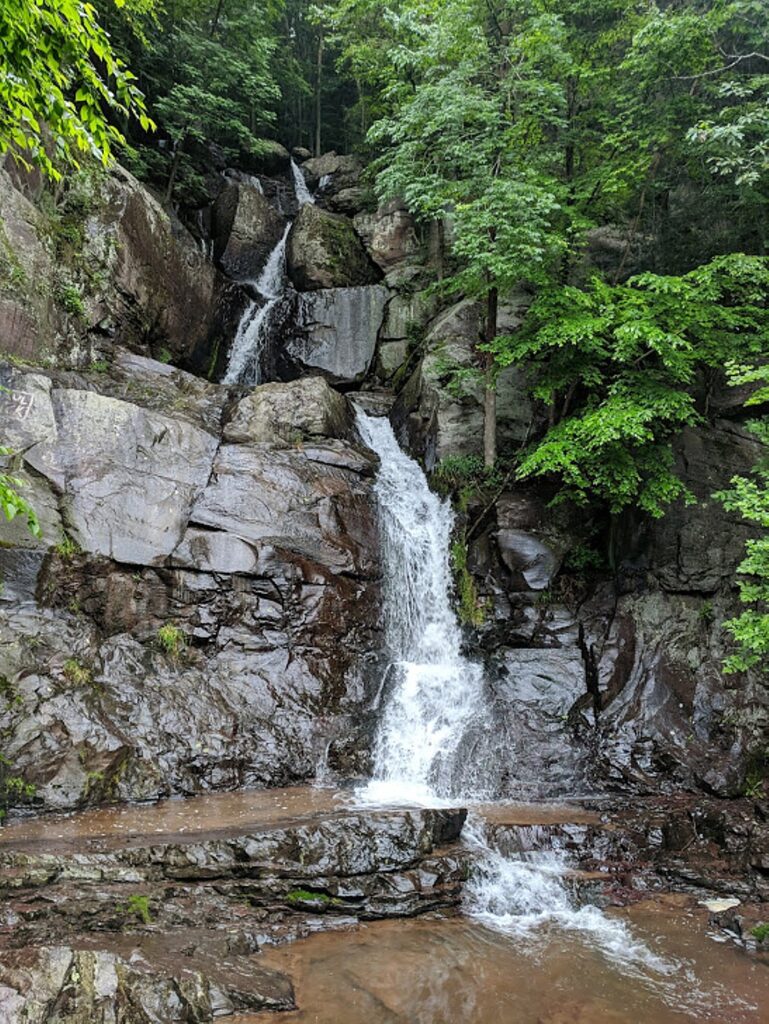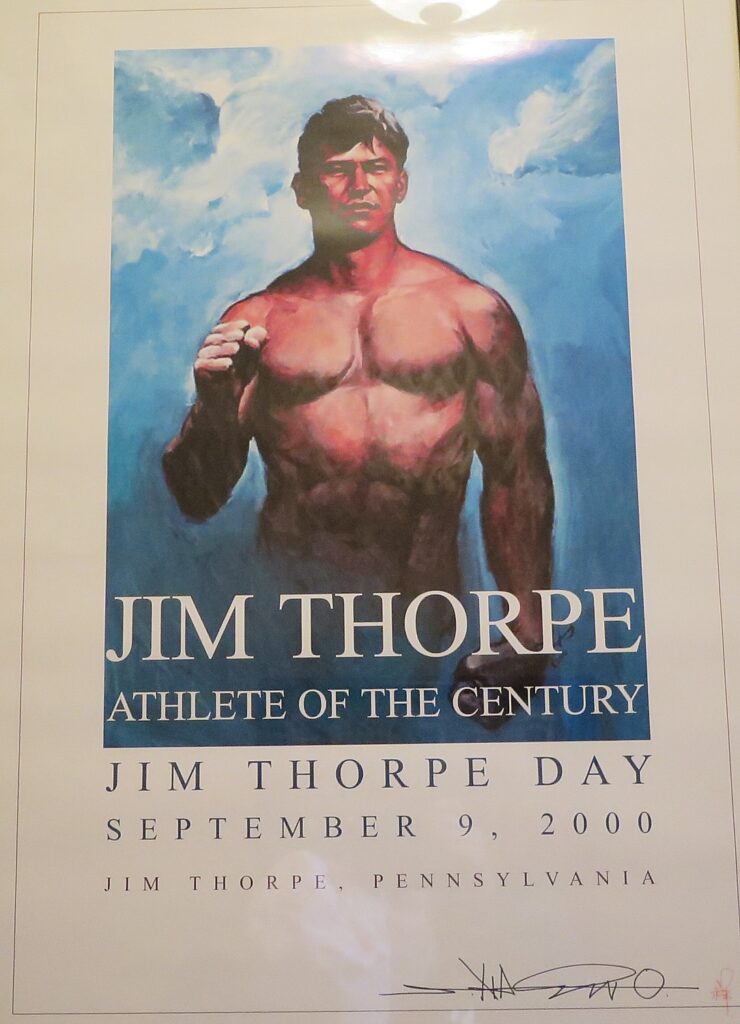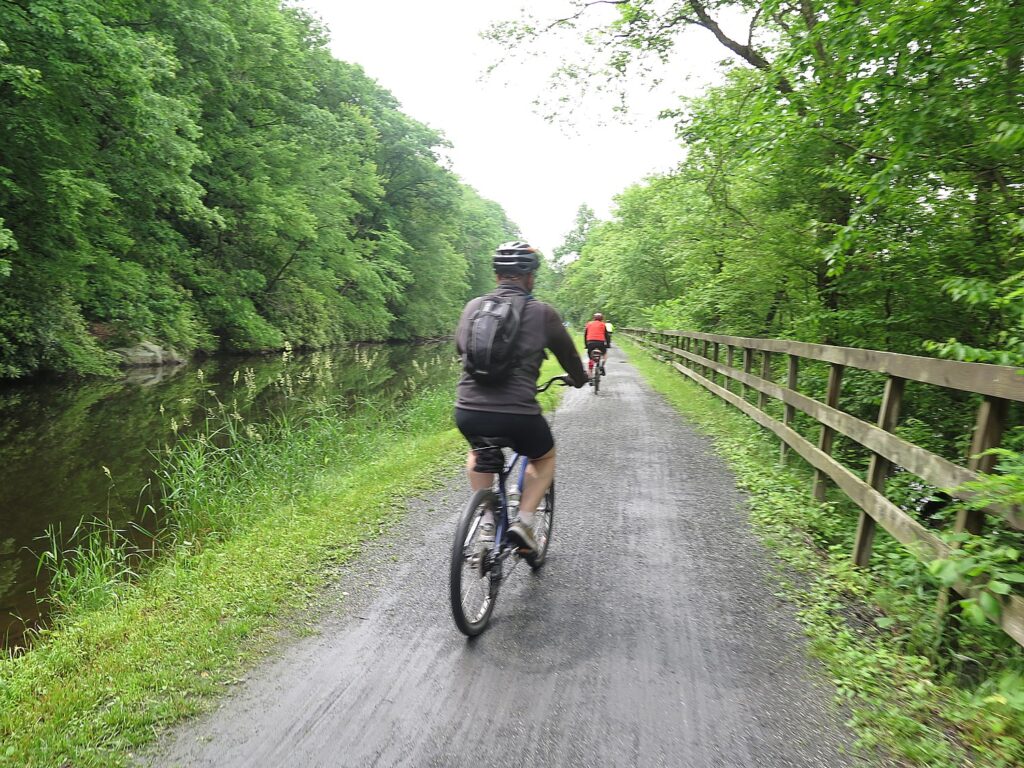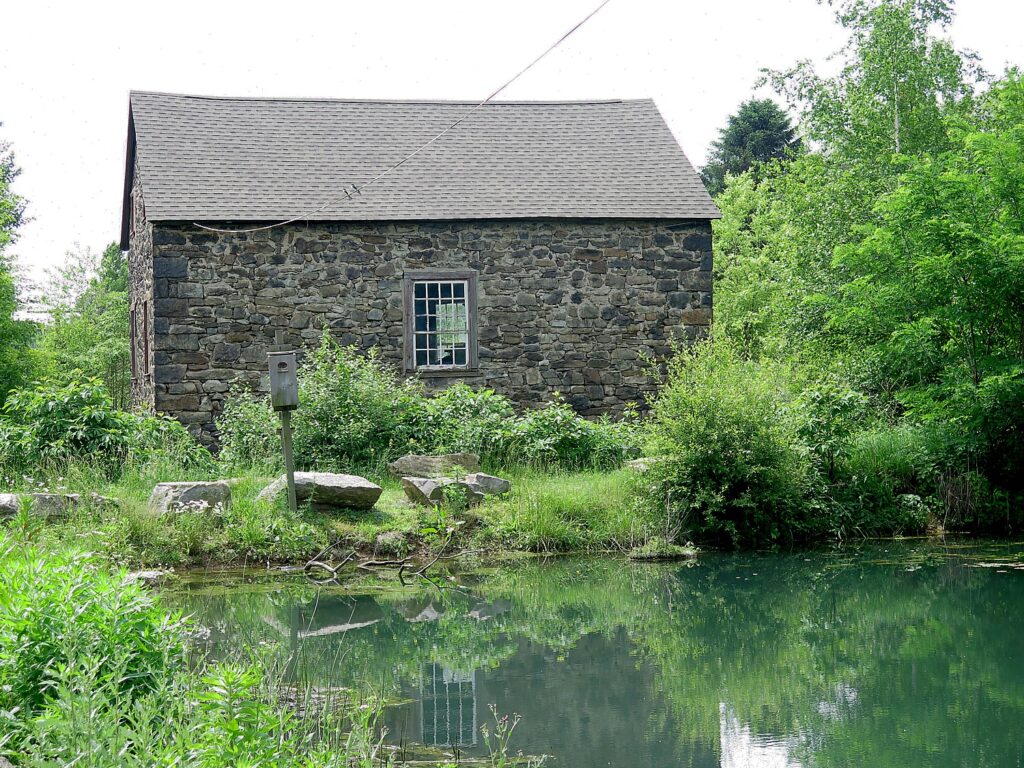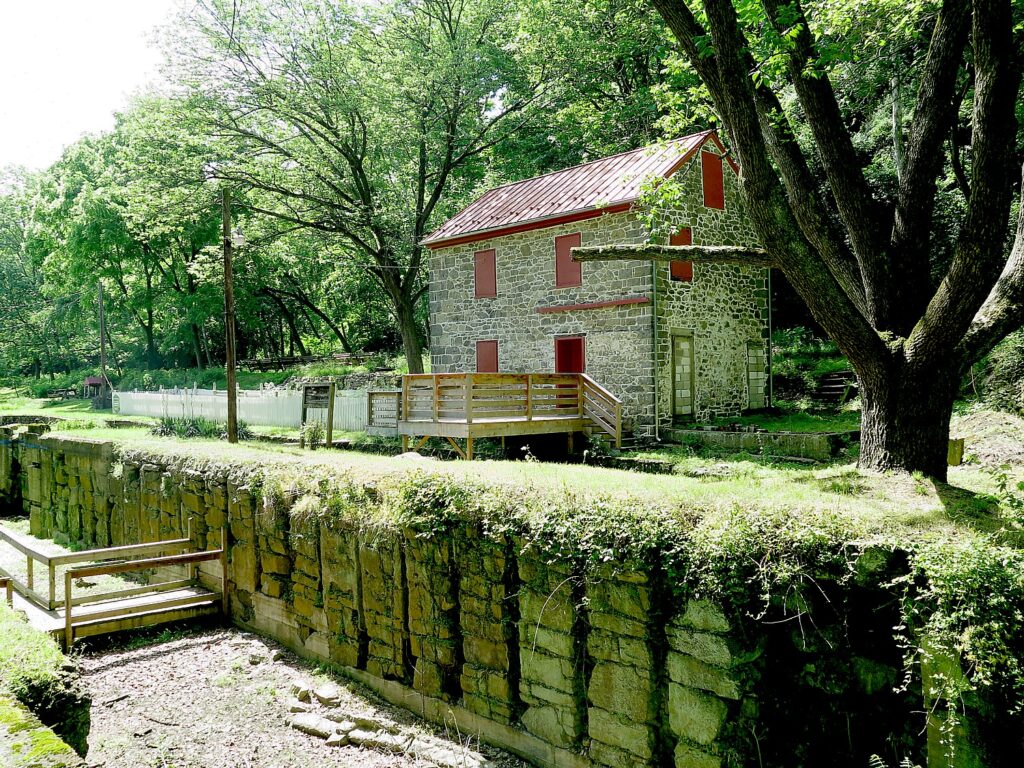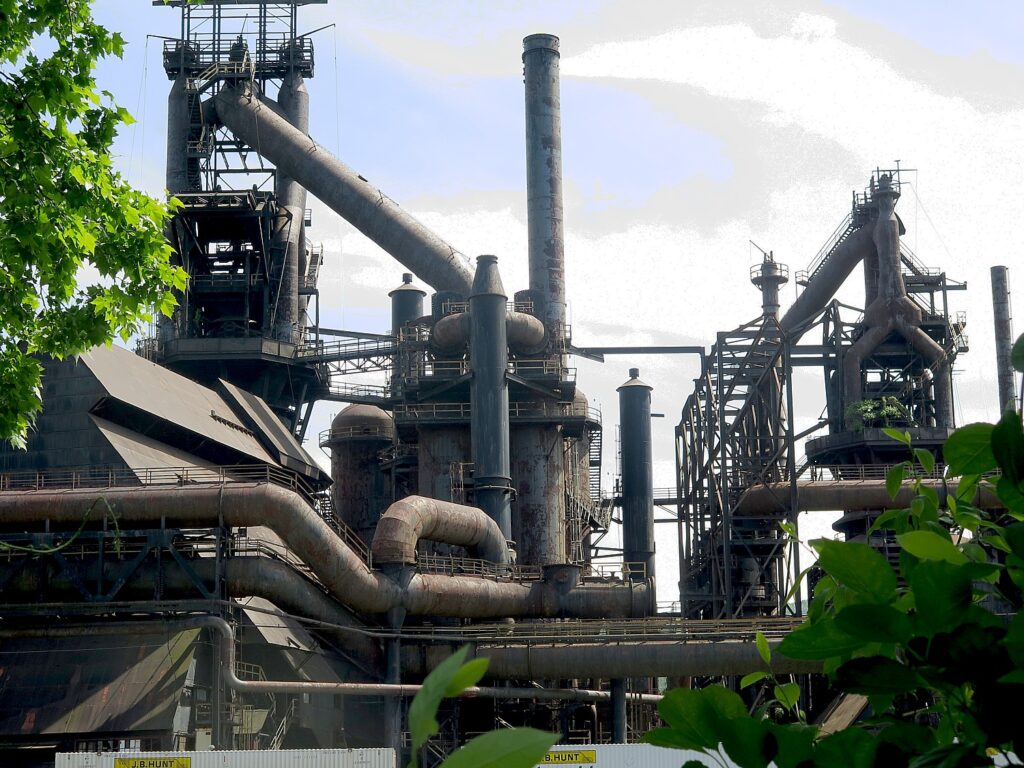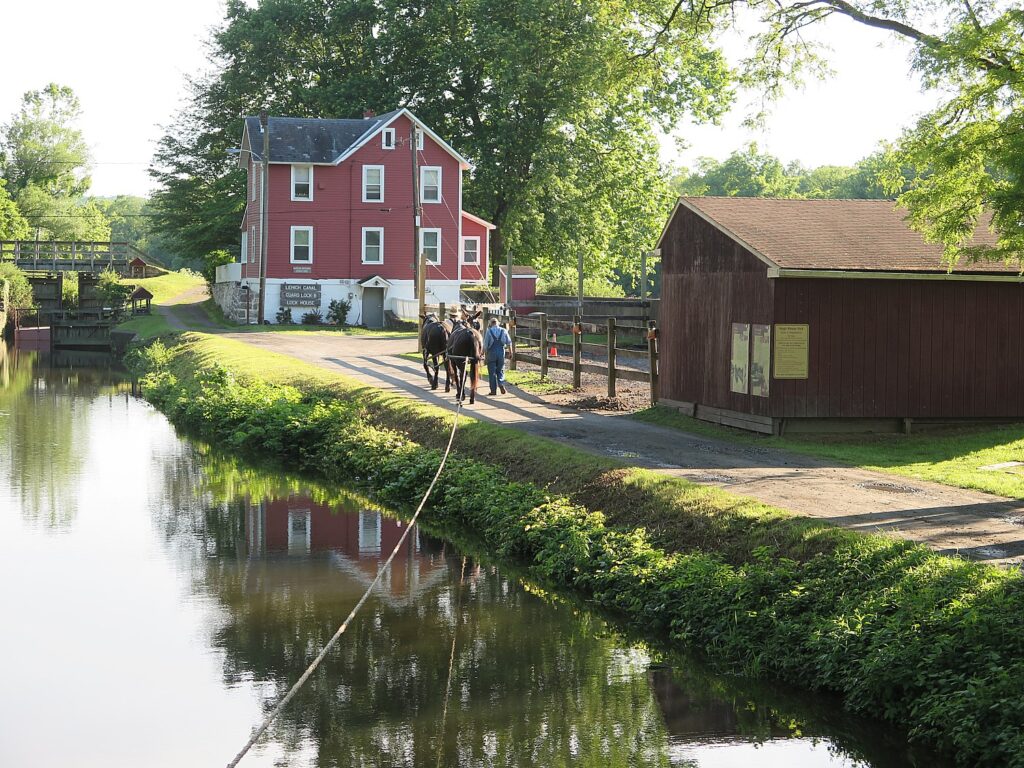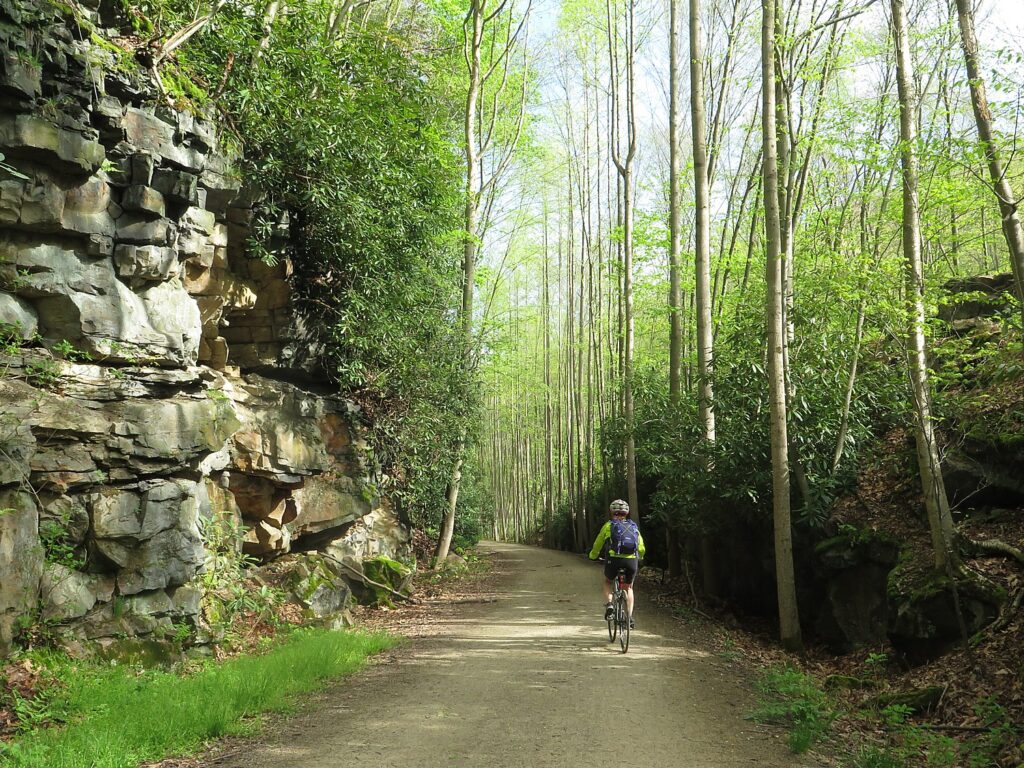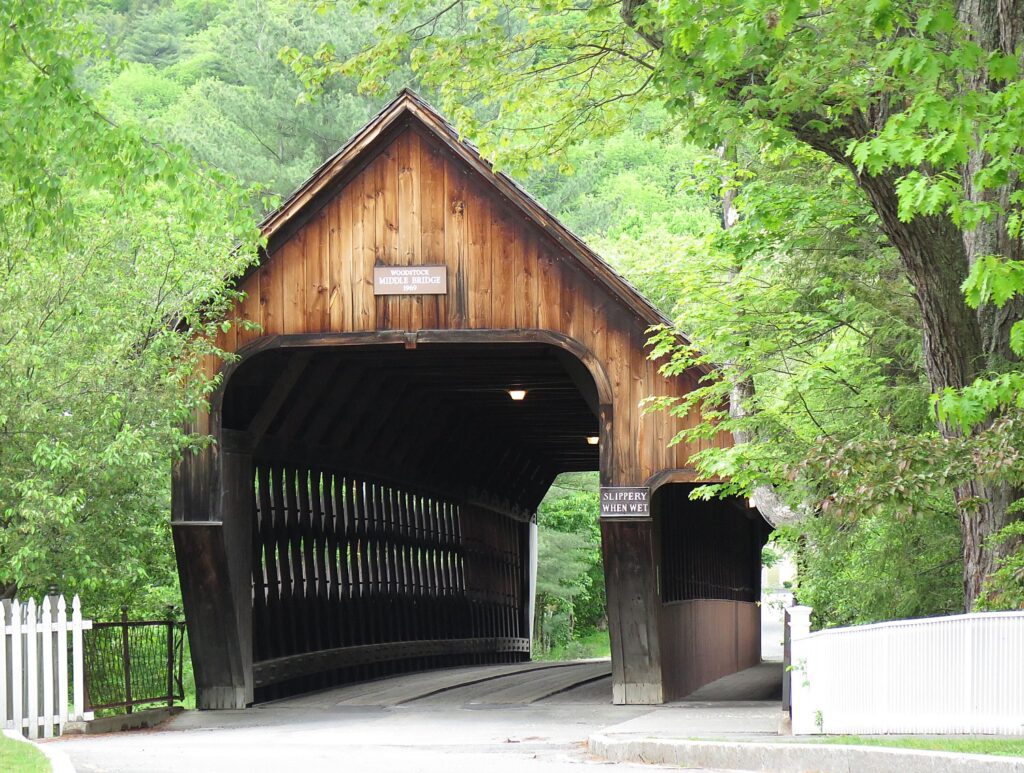
By Karen Rubin, Travel Features Syndicate, goingplacesfarandnear.com
It’s pitch black as we make our way 1.66 miles through the first tunnel of the Route of the Hiawatha, except for the light on our bike. Water drips down from the ceiling, the surface is muddy and slippery, adrenalin pumping. It is hugely thrilling.
This is just the first (and the most dramatic) of the 9 tunnels and 7 trestles we go through over the course of 14 miles down, then back through again for 14 miles up. It is also the longest – a full 1.66 miles in total darkness! – but each tunnel, each trestle is exciting. You can immediately appreciate why the Route of the Hiawatha is one of Rails to Trails Conservancy’s Hall of Fame rail trails.

The experience is but one of many highlights of Discovery Bicycle Tours’ six-day Idaho Trails trip, during which we will do the 111-mile long Centennial Trail, starting in Spokane Washington to Coeur d’Alene; tackle the remarkable Route of the Hiawatha Trail; and the 73-mile long Trail of the Coeur D’Alenes where we immerse in tribal land, history and culture. Along the way, we will also have interesting experiences such as touring a silver mine in the company of a miner and a museum preserving the heritage of the Coeur d’Alene people.

What I love most about bike tours is that they are cerebral as much as physical. You feel the scenery; you are part of the space you occupy, engaged – not a spectator peering through a glass window, but a participant, able to smell the air, feel the sun, the breeze, the drizzle, hear the birds and the rushing water. The pace is perfect to really get places while the scenery rolls by as if a movie. And you can stop when you want to take in the scene or a photo, read a marker, or peer at a moose. You feel the satisfaction, the sense of accomplishment at the end of a day’s ride – a combination of euphoria and endorphin rush.

What is more, you get to go through small towns, see regular folks you would not likely see traveling by car or bus, promoting connection and understanding. And you have the added satisfaction of maximizing the benefit of your visit – providing the economic foundation that secures this heritage, these natural places, these experiences – leaving a minimal carbon footprint. This is true if you are touring in the United States or some faraway exotic land.
As we gather together for our first orientation meeting with our guides, I take note that just about every one of our group of 13 riders has taken not just one, two but several trips with Discovery Bicycle Tours.
This is my fourth, and I consistently find Discovery’s whole approach to bike touring ideal – summed up in the phrases “Ride your ride” followed by “This is your vacation!”– and how they make that happen. There are two guides (they take turns driving the van that shuttles our stuff, sets up our snack-stops, and is there if anyone needs assistance; while the other cycles along, bringing up the rear), but most importantly, we bike at our own pace. This is because we have our own Ride with GPS App, customized by Scott Cone (the company’s owner, he calls himself Adventure Consultant) for each itinerary; they even provide a phone holder on our bike.
The accommodations, restaurant choices and food are the perfect mix of charming reflections of the places we tour, and luxury (as much comfort as you would ever want without going over the top), adding immeasurably to the tour. The bikes (five of us use their hybrid, eight others take advantage of the availability of e-bikes at no extra cost) and equipment provided are top notch, and it bears noting that I consistently find Discovery offers excellent value-for-money.

Our guides, Susie Iventosch and Calista Phillips, are fantastic – really knowledgeable, supportive, encouraging, accurate (I appreciate having a realistic view of what the day’s ride will be), and flexible when necessary (like when we all vote not to ride during a downpour but shuttle the first 11 miles of the day’s route).
The trips are designed for maximum enjoyment of the ride – we are shuttled when it makes sense to or from the ride, and given options of longer or shorter routes each day. And the routes they choose, as well as the added activities (a lecture one evening, the silver mine tour another day, a visit to a museum another) add dimension. I also appreciate the advance preparation – documents, itinerary – and care they provide before the trip.
Day 1: Setting Out on the Centennial Trail, 36 Miles

Our first morning starts with an early meet-up at the Hilton Garden Inn close to Spokane Airport, for introductions and orientation, and we are shuttled to Sontag Park, the start of the Centennial Trail, where we are fitted to our bikes, get the Ride with GPS app going, and set out on a really beautiful ride. Suzie notes that this first day will be the most challenging of the tour.

We start pedaling along the Washington portion of the Centennial Trail in the rocky canyons west of Spokane. The beginning of the trail is in the forest, and soon rises so that we have this gorgeous view of the Spokane River far below. And once you do the first hill, you feel you can do the second (which is the steepest of the day), then the third (the longest, but not as steep – a piece of cake).

We pass through Spokane’s urban Riverfront Park that I have so enjoyed visiting for the past three days, and end, 36 miles further down, just five miles before the Washington-Idaho state line, where we are picked up by the van and are taken to the charming Roosevelt Inn where we stay for two nights, in Coeur D’Alene. (Our next day’s ride will bring us back to this same spot, so we can ride the five miles into Idaho.)

I adore the Roosevelt Inn – it is so much a part of Coeur d’Alene. Named for President Theodore Roosevelt who came through the area in 1903 on a campaign whistle stop, the building dates from 1905 when it was Coeur D’Alene’s first school, then became offices, and is now a most charming 14-room bnb. Each room is named for someone with a picture and bio, and provides plush robes and towels. The inn offers a hot tub and sauna (open 24 hours), and absolutely gorgeous gardens (life-size chess). There is a lovely parlor with gorgeous painted mural along the three walls, where there is a refrigerator guests can use; a constant supply of coffee, tea and hot chocolate; fruit and usually, something freshly baked. Each morning, we are served breakfast to order,

This first evening we enjoy dinner together at a pub-style restaurant (a celebratory drink is included).
DAY 2: 14 or 27 miles, Centennial Trail

After breakfast at The Roosevelt Inn on our second day, we shuttle to Lovely Falls Park, the headwaters of the Spokane River. The trail takes us along the majestic shores of Lake Coeur d’Alene.
The ride today is 14 miles out and back to the endpoint of the Centennial Trail at Higgins Point, the endpoint of the Centennial Trail, mostly hugging the gorgeous shoreline of Lake Coeur d’Alene, until we come to one major hill up, then down – which means (if we are biking back) we have an even steeper return.
We have the option to ride back in the van, but all of us choose to bike back to The Roosevelt, cycling at our own pace. It is early afternoon when we return, so we have plenty of time to enjoy exploring the charming shops and galleries of Coeur d’Alene (a hugely popular destination), swim in the lake or relax. I find a lovely hiking trail along the cliffs.
We are treated to a talk by historian Shauna Hillman give a delightful talk about the town of Wallace, Idaho and the Silver Valley Mine which we will be visiting (‘Murder, mining, prostitution, the mayor murdered his wife’s lover and got away with it, and was reelected twice!”) as we sit in the inn’s lovely garden – before heading out to have dinner on our own.
DAY 3: 15 or 28 miles, Route of the Hiawatha

After two delightful nights at the Roosevelt Inn in Coeur d’Alene, we pack up in preparation for moving our home base to a mountain resort in Kellogg for the remainder of trip. After breakfast, we shuttle 90 minutes east to the trailhead of the famous Route of the Hiawatha.
Biking the Route of The Hiawatha is an extraordinary experience in the annals of bike trails. Our guides, Suzie and Calista, prepare us extremely well for what we will do, that the first tunnel, the St. Paul Pass Tunnel, is the longest at 1.66 miles long, and is pitch black, damp and a constant 47 degrees. They have put lights on our bikes (you are not allowed to go on the trail without a helmet and bike light).
After we excitedly take group photos at the entrance, we set out at our own pace, with the caveat that we have to start biking back up at 2:30 pm (note there is an hour time change from the start).

Biking through the St. Paul Pass Tunnel is a surreal experience – you can’t see what is above or on the side, only what is lit by the narrow beam where your light shines.

When you get out and ride the hard-packed gravel trail, it goes steadily down a 3% grade for 14 miles. The scenery is quite spectacular, especially when you look down at a thin pencil line and realize that is the trestle you will be riding across. It looks so small, so far away and far down. And then you are there, and it isn’t thin at all. The view from the trestle is spectacular, too.

The trestles are so high above where you imagine is the valley floor, you feel you are suspended.
It is 14 miles down on hard-packed gravel to where there is a picnic table where we have a box lunch we had ordered, before riding back up the same 14 miles. If you don’t want to ride back up, you can buy a ticket ($20) to take a shuttle bus. We all bike back. (Notably, there are several bathrooms along the way and water supplied.)

I must admit I am a bit nervous to ride continuously uphill for 14 miles but it actually isn’t bad at all, and there are all these opportunities to stop for the view, or read the interpretive signs that line the trail that tell the history of the Milwaukee Road Railroad. The view and the fresh air are exhilarating.

The Hiawatha, considered one of the more successful rail-trail conversions in the United States, was named to the Rails to Trails Conservancy’s national Hall of Fame in 2010. It was developed from a railroad line, developed in the late 1800s, that went out of business in the 1980s.

One of the historic markers along the way tells of the Great Fire of 1910. One of the most devastating forest fires in American history, it burned 3 million acres of forest in northern Idaho and western Montana. The fire was so huge that a massive cloud of smoke spread throughout southern Canada and the northern United States all the way to the St. Lawrence waterway. The darkness from the smoke was so bad that for 5 days, artificial lighting had to be used from Butte, Montana to Chicago to Watertown, New York. The fire completely devastated the St. Joe River valley and destroyed all of the towns except Avery and Marble Creek, many never rebuilt.
The marker tells of heroic actions by the railroad employees who drove engines and box cars filled with people through the flames to the safety of the longer tunnels, saving 600 lives.

It feels soooo good when I come back through that last, longest (1.66 miles), darkest tunnel, being careful not to ride up on the person in front, or slipping in the muddy surface.
At the end, it is a work out that makes you feel so ecstatic, euphoric when you finish.
You need to have a reserved timed ticket to ride the Hiawatha, which is owned by the U.S. National Forest but operated by Lookout Pass Ski Area. (Discovery Bicycle Trails has taken care of our reservations and the ticket, $20 pp; the shuttle is $20 more.)
Feeling quite elated, we pile back into the van to shuttle to the Silver Mountain Resort in Kellogg, where we stay in spacious and comfortable condo accommodations for three nights.
Discovery Bicycle Tours, 800-257-2226, www.discoverybicycletours.com
Next: Biking the Trail of the Coeur d’Alenes
_____________________________
© 2025 Travel Features Syndicate, a division of Workstyles, Inc. All rights reserved. Visit goingplacesfarandnear.com and travelwritersmagazine.com/TravelFeaturesSyndicate/. Blogging at goingplacesnearandfar.wordpress.com and moralcompasstravel.info. Visit instagram.com/going_places_far_and_near and instagram.com/bigbackpacktraveler/ Send comments or questions to FamTravLtr@aol.com. Bluesky: @newsphotosfeatures.bsky.social X: @TravelFeatures Threads: @news_and_photo_features ‘Like’ us at facebook.com/NewsPhotoFeatures




